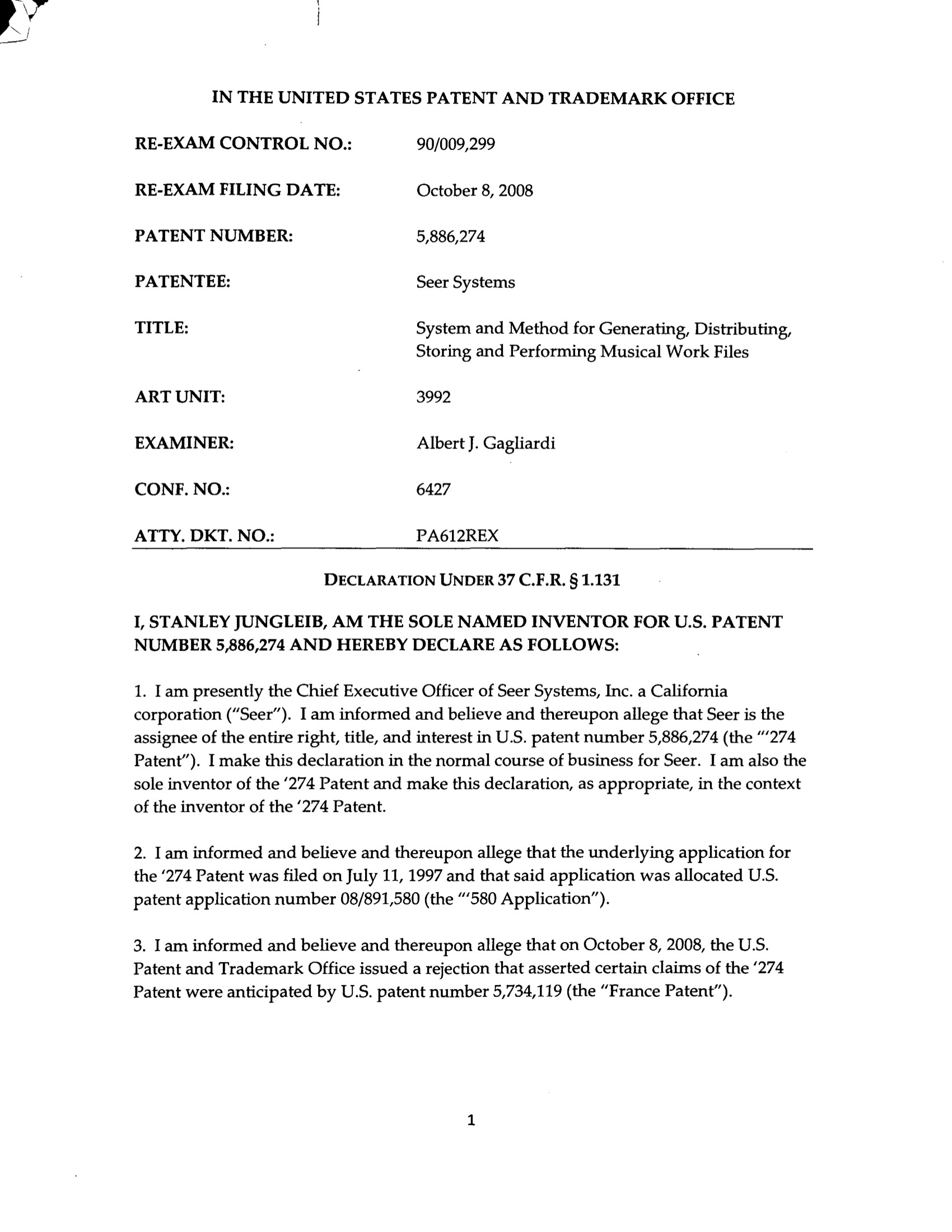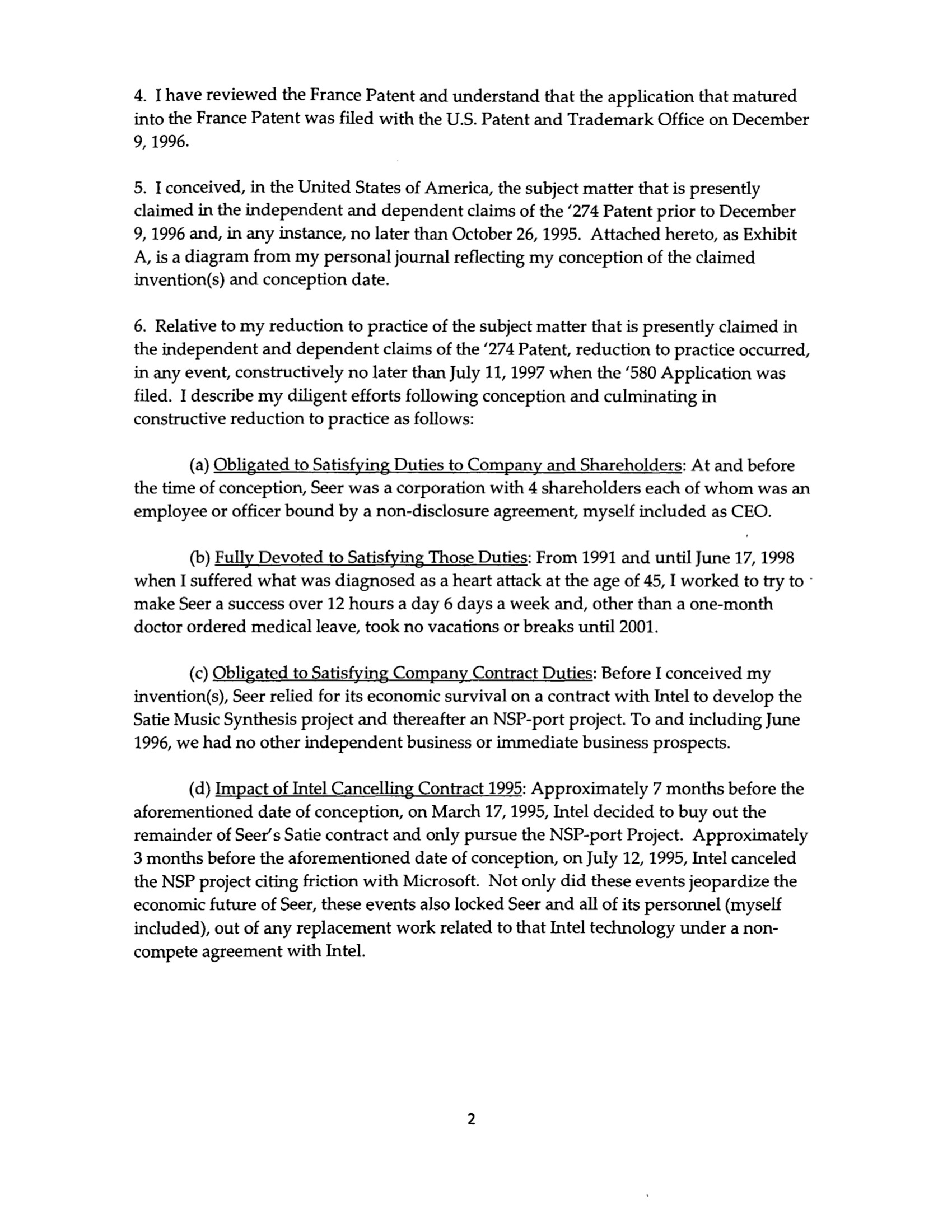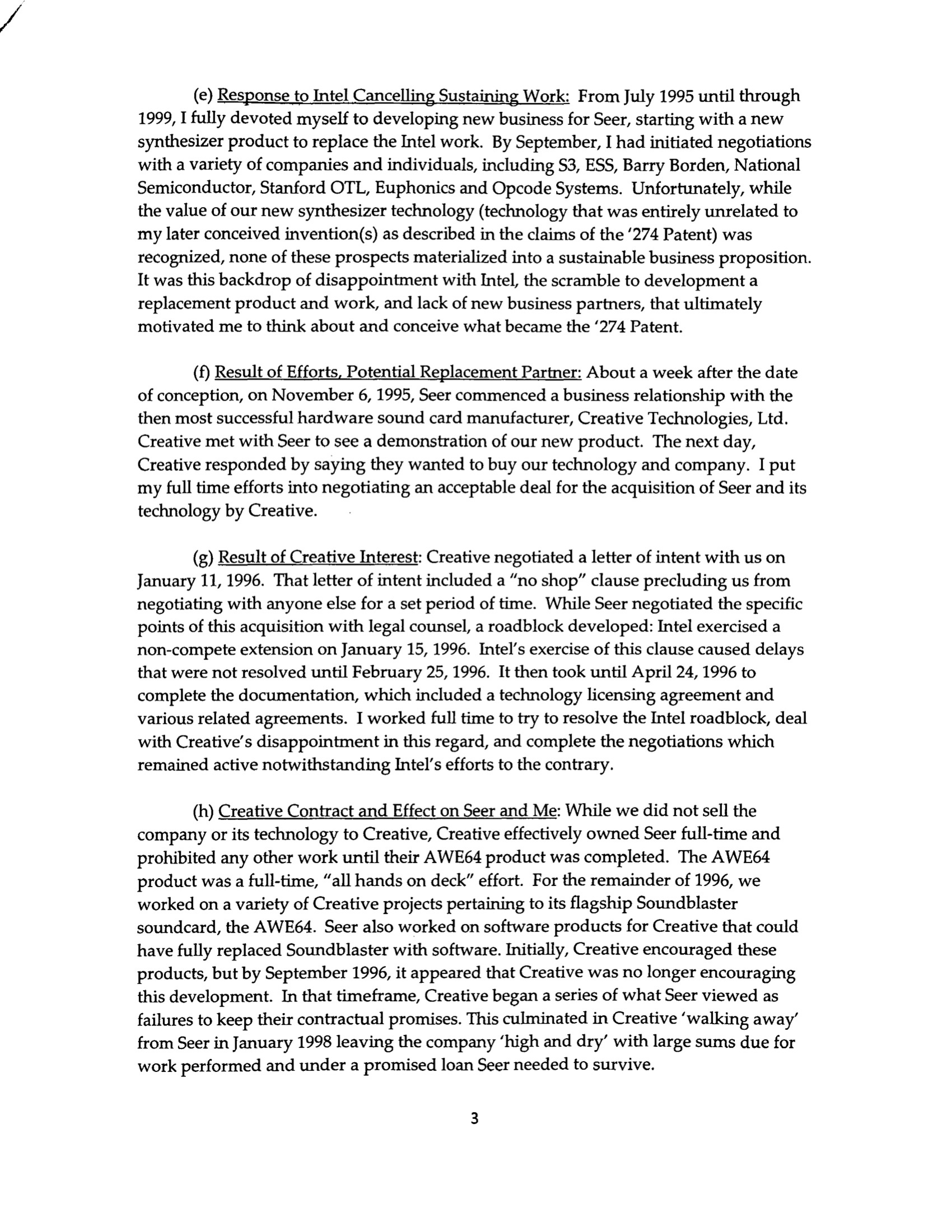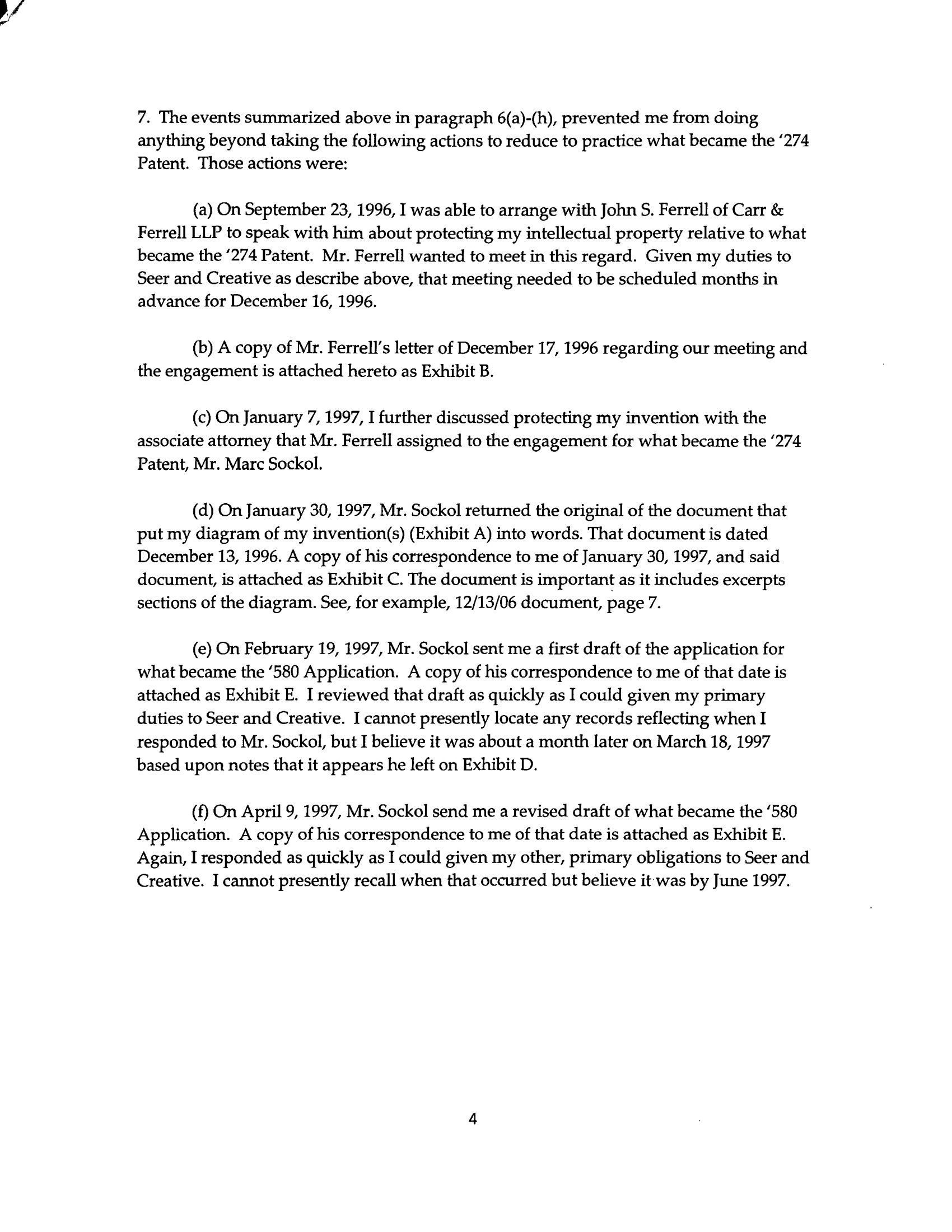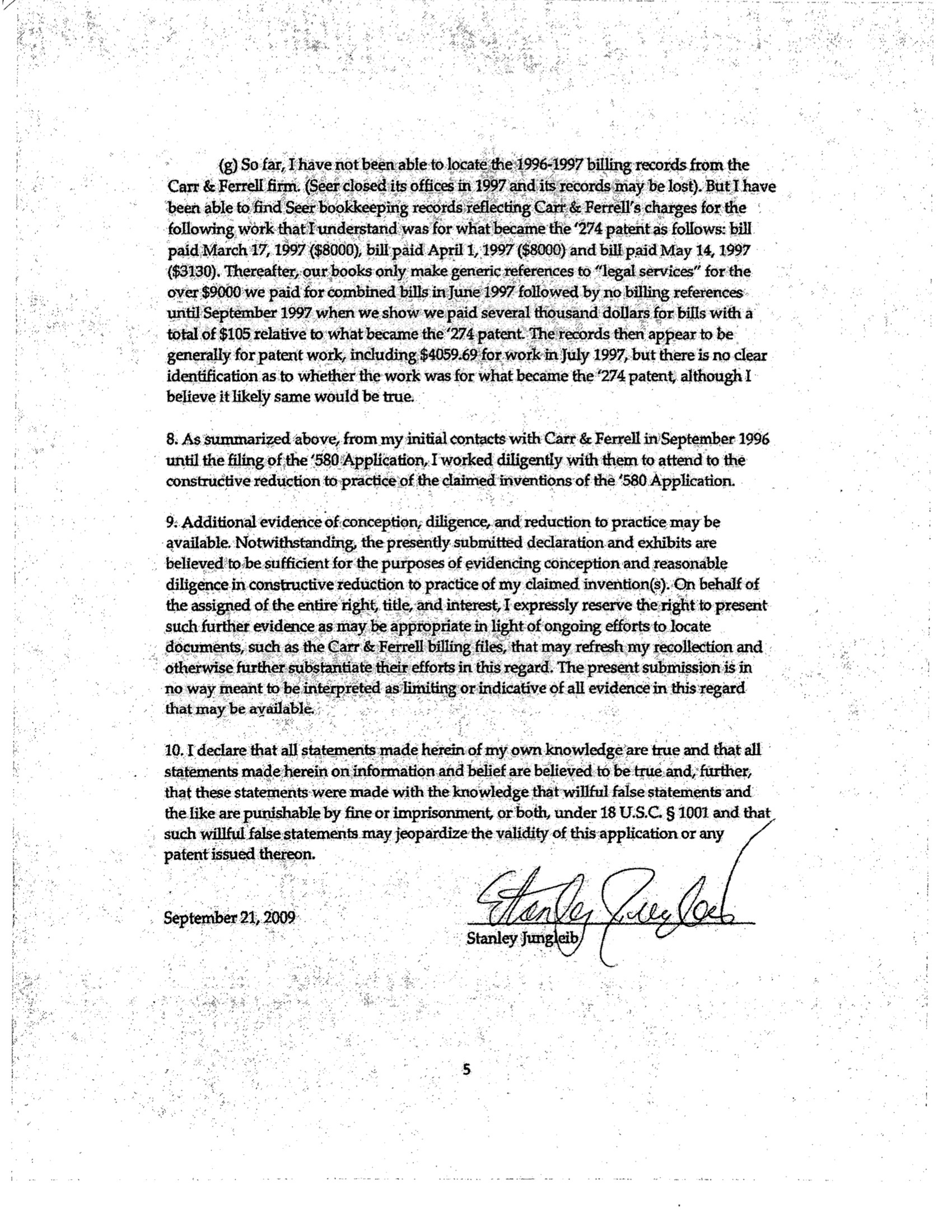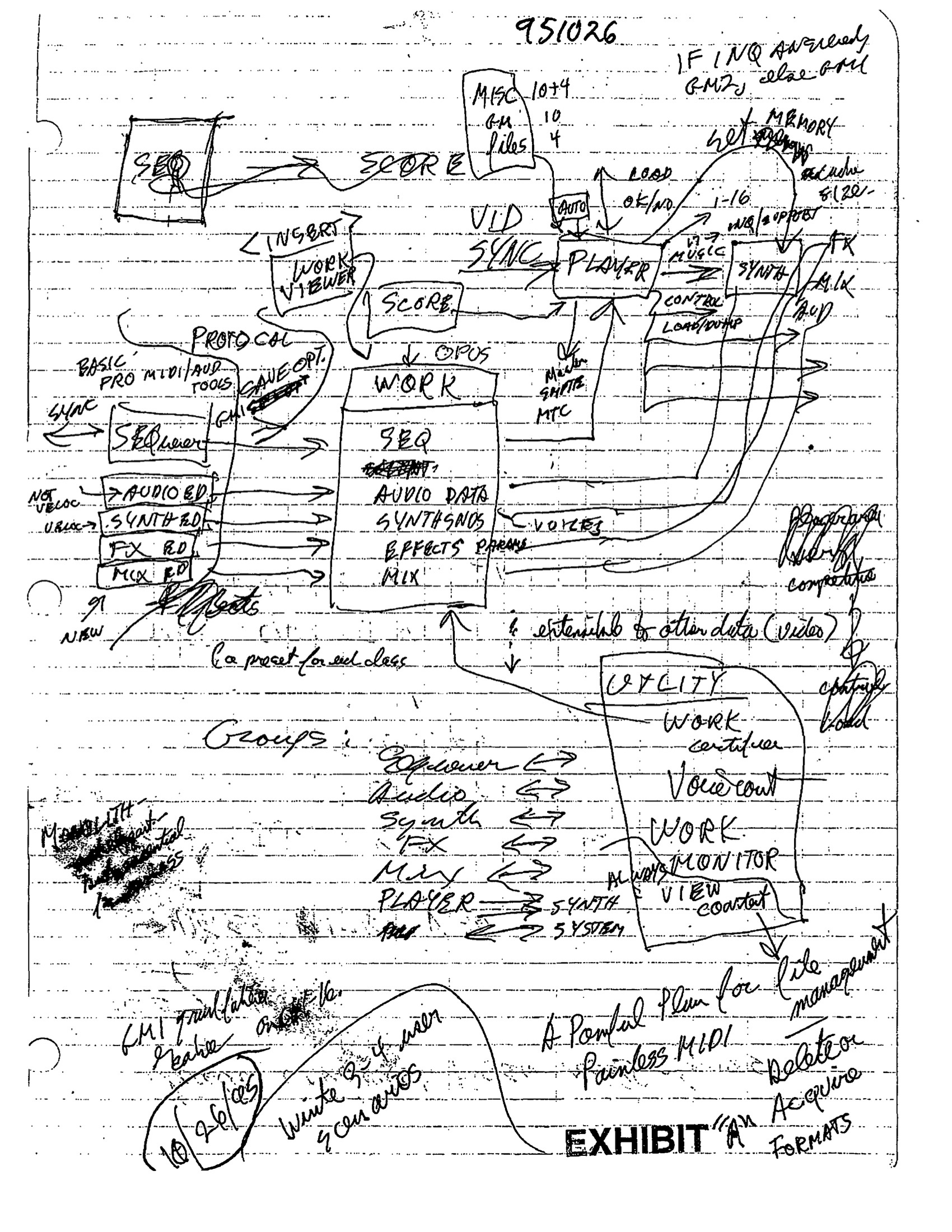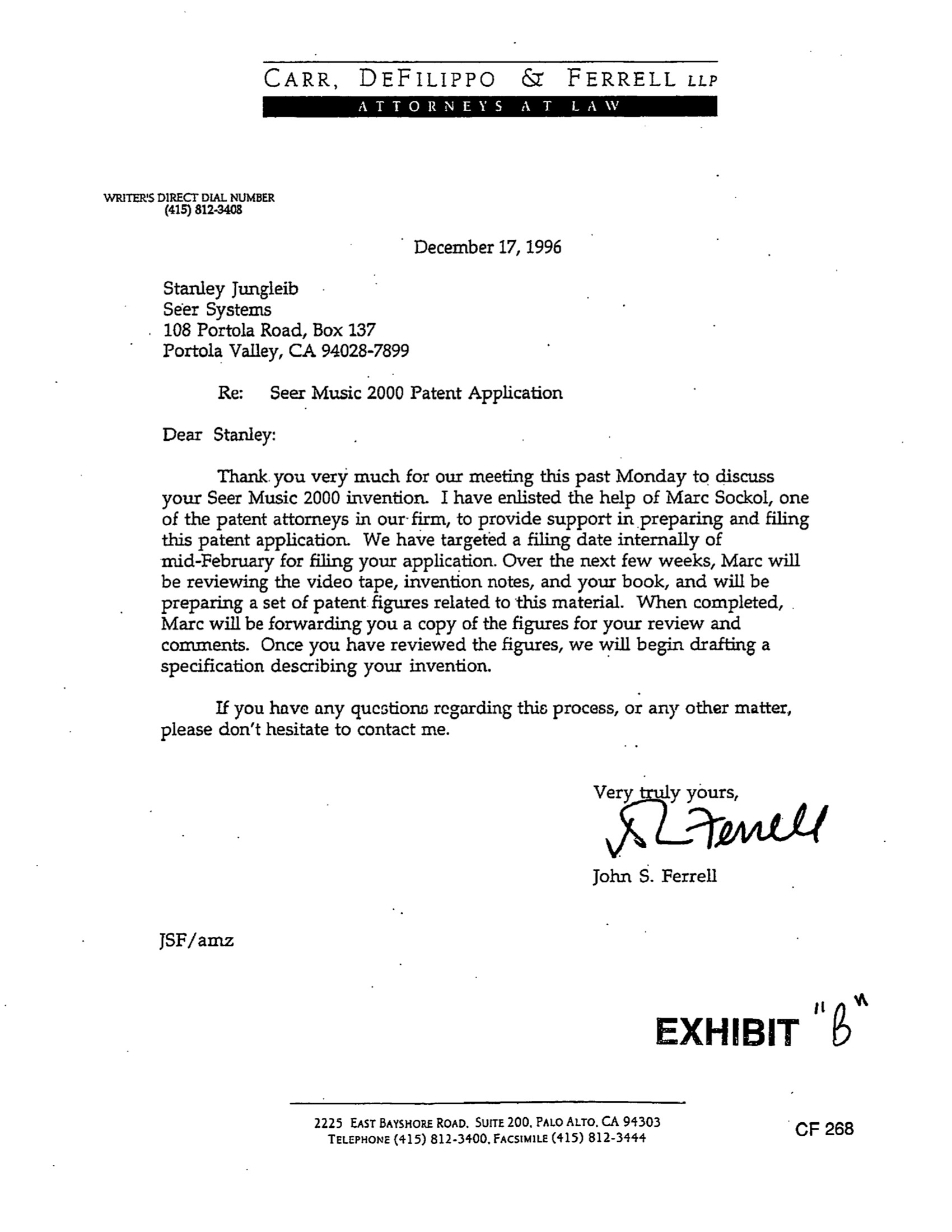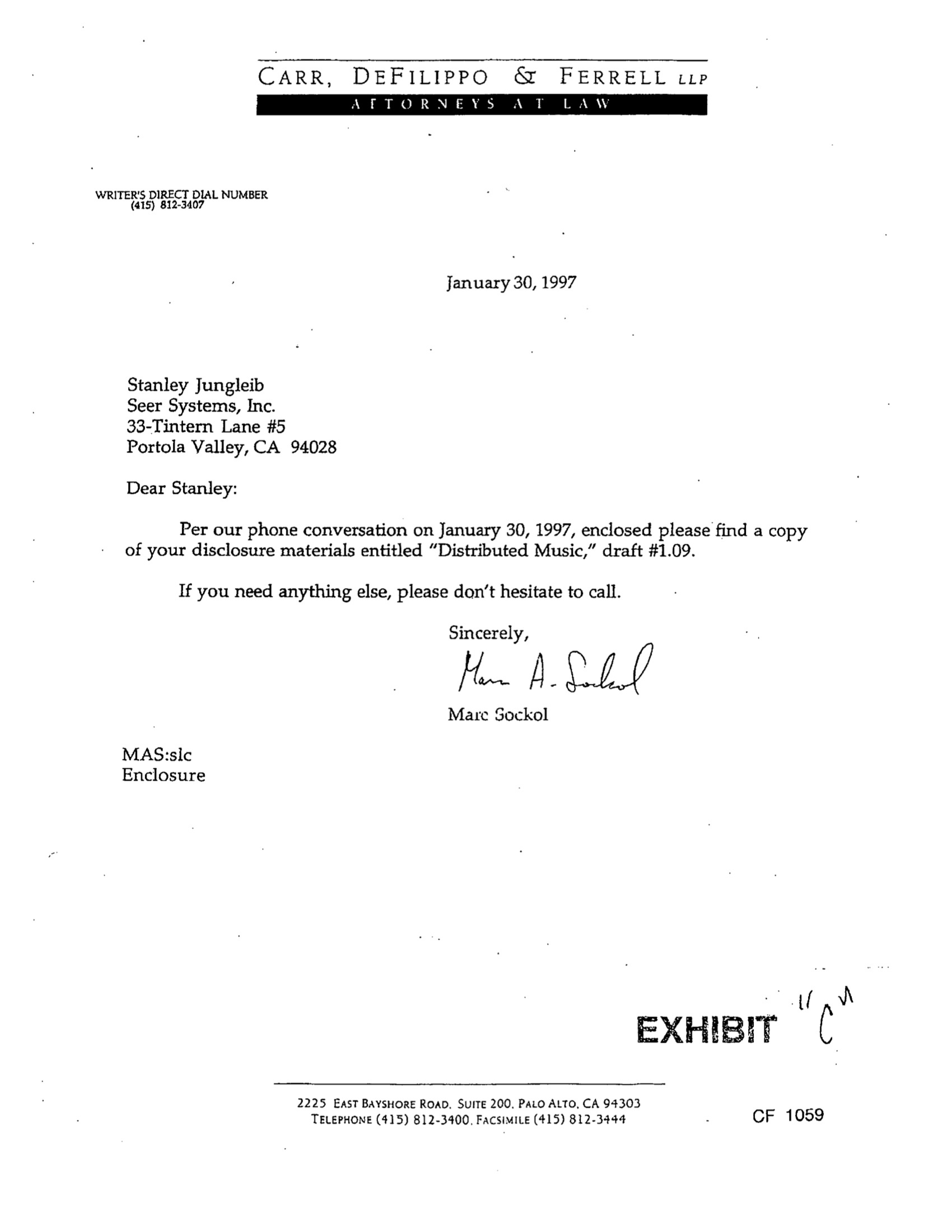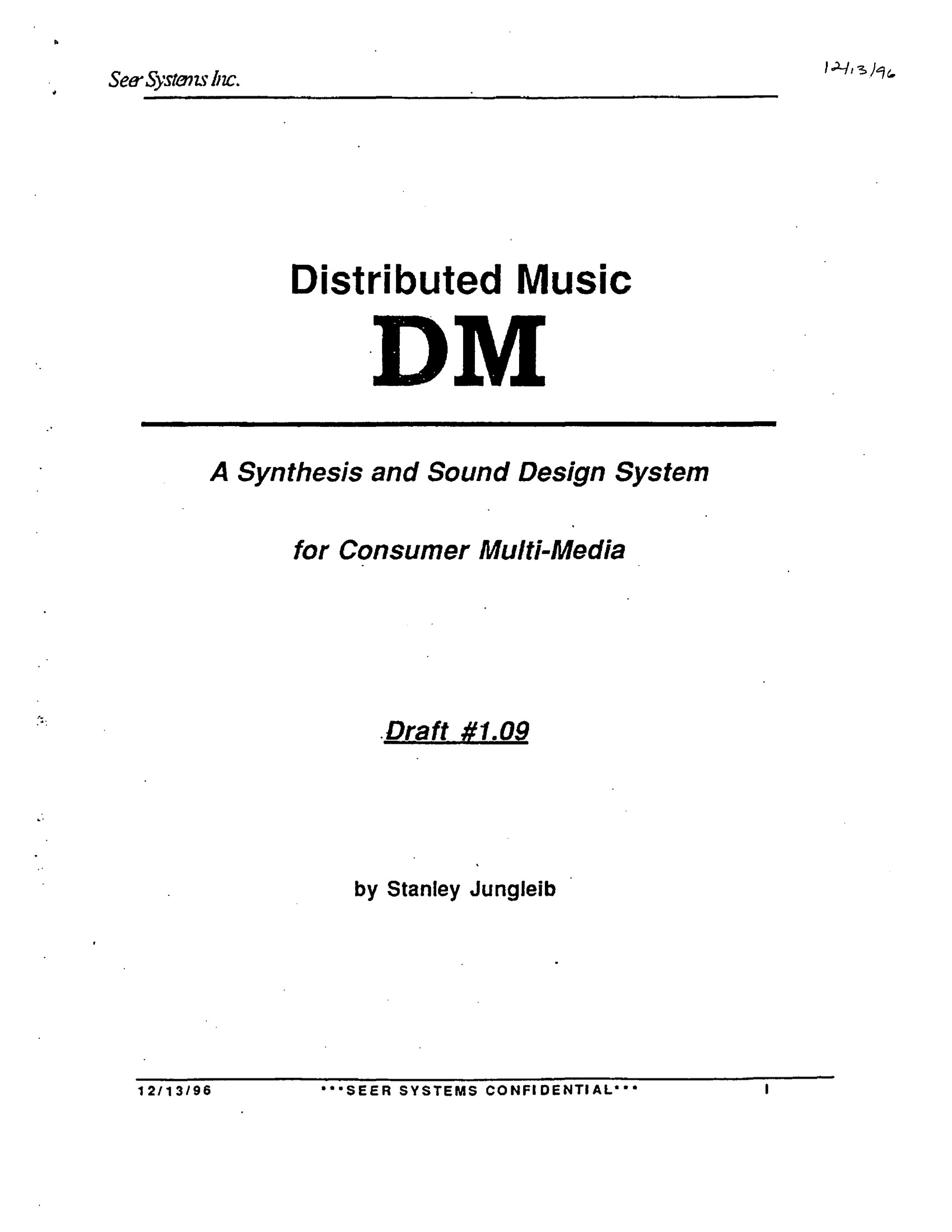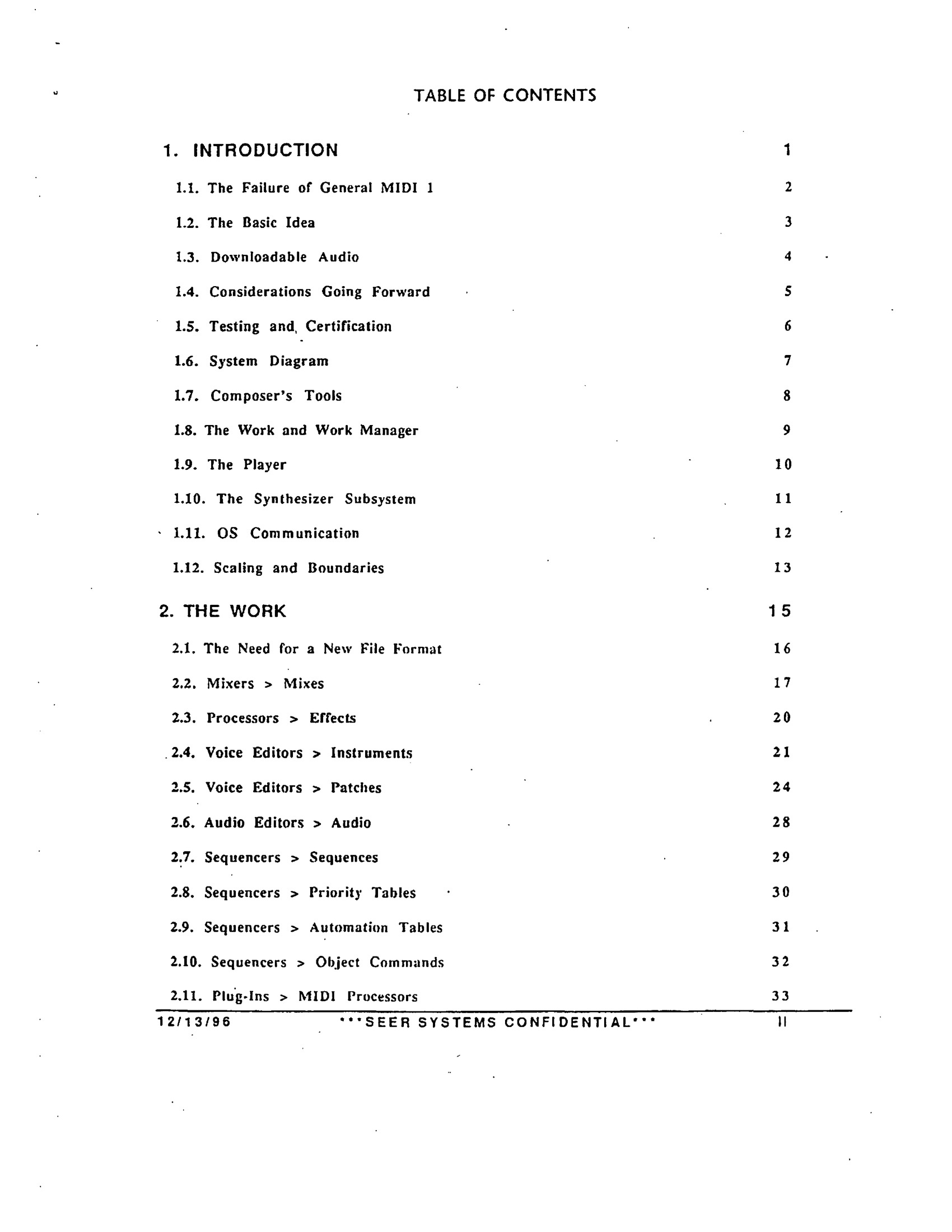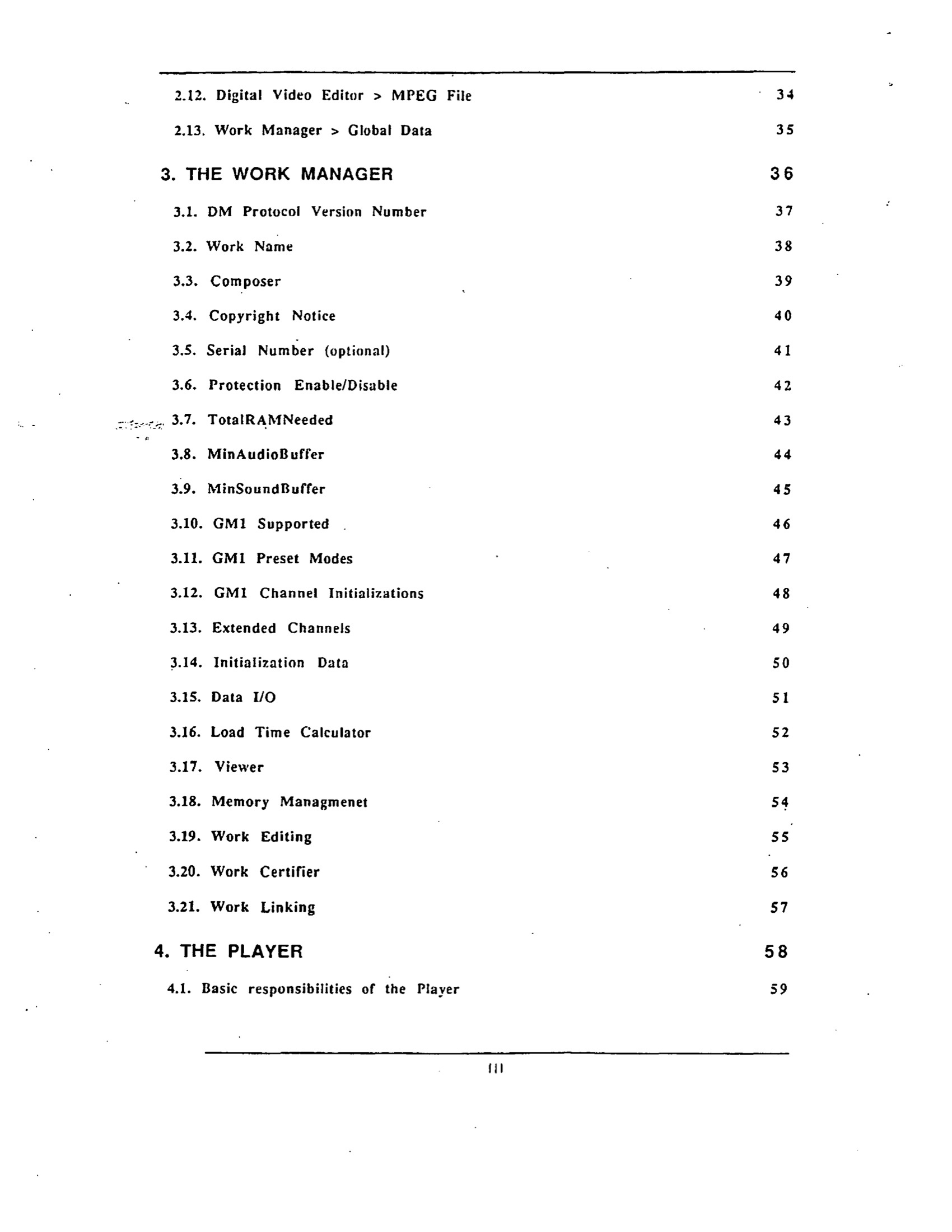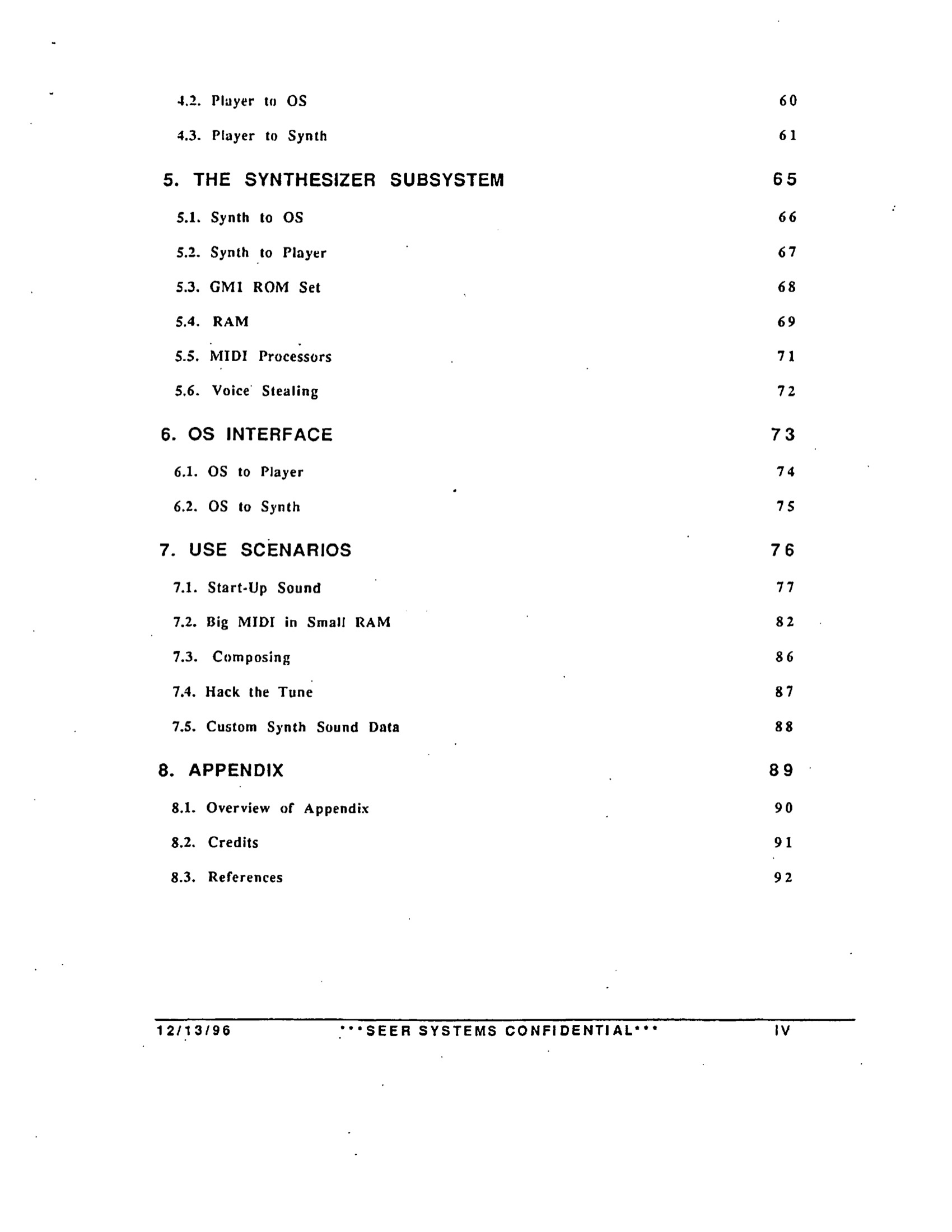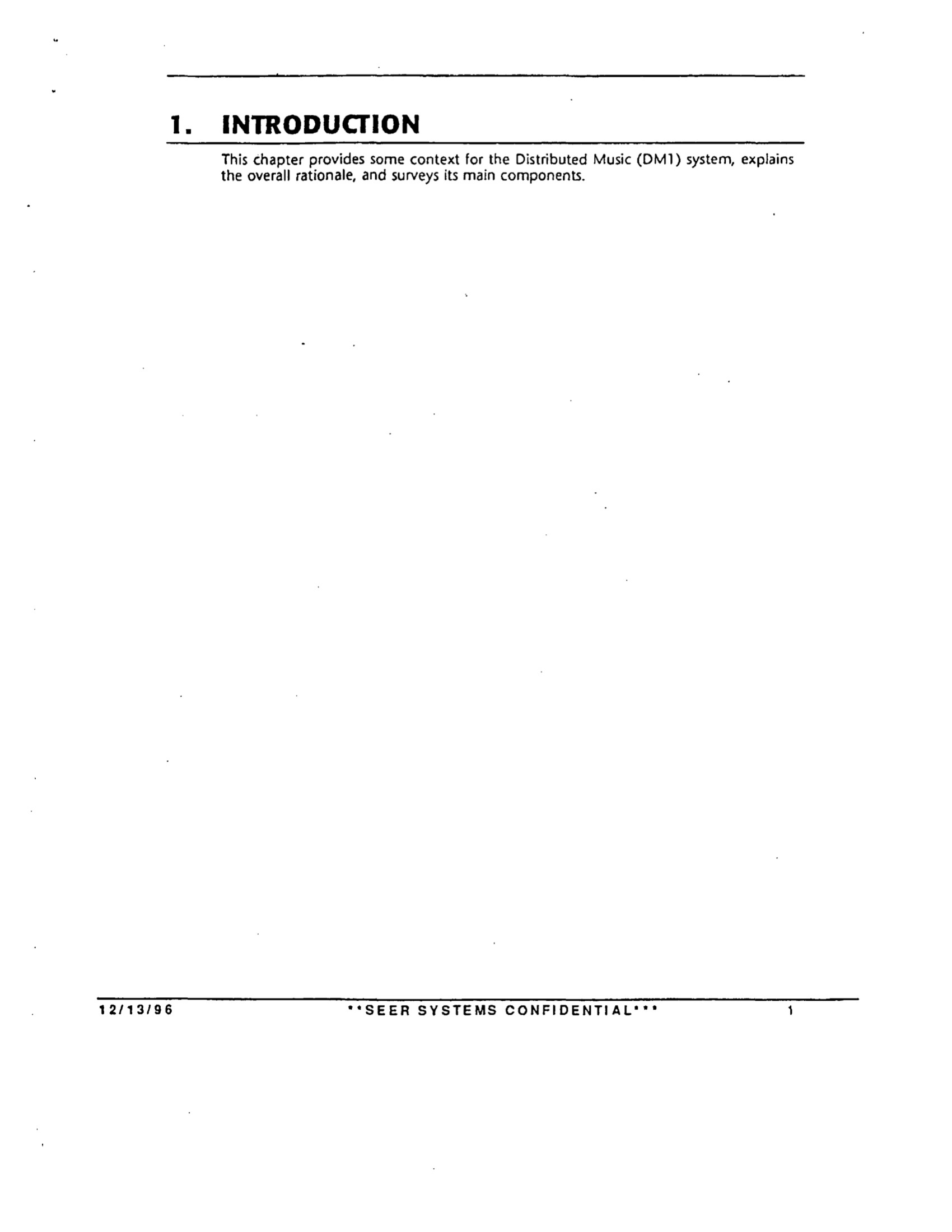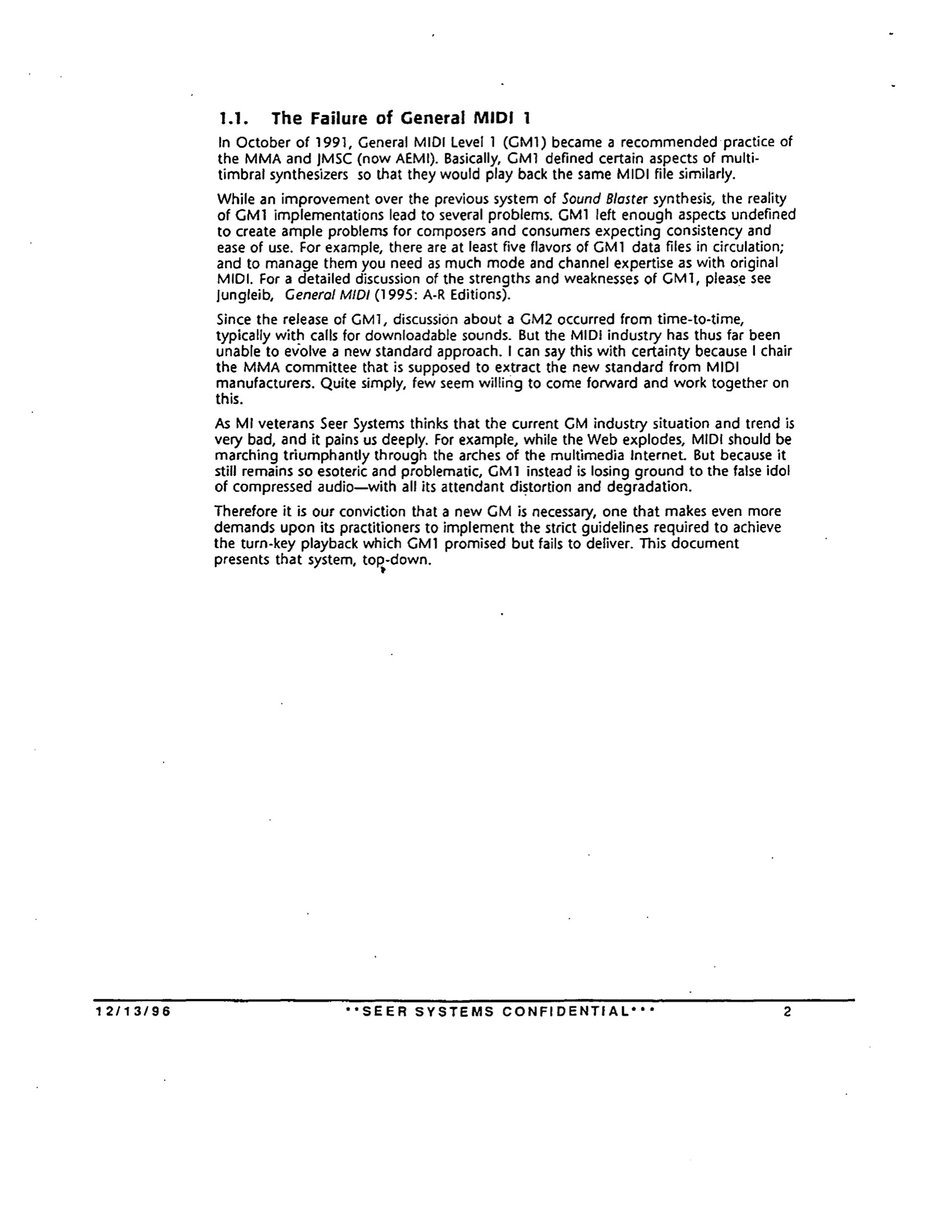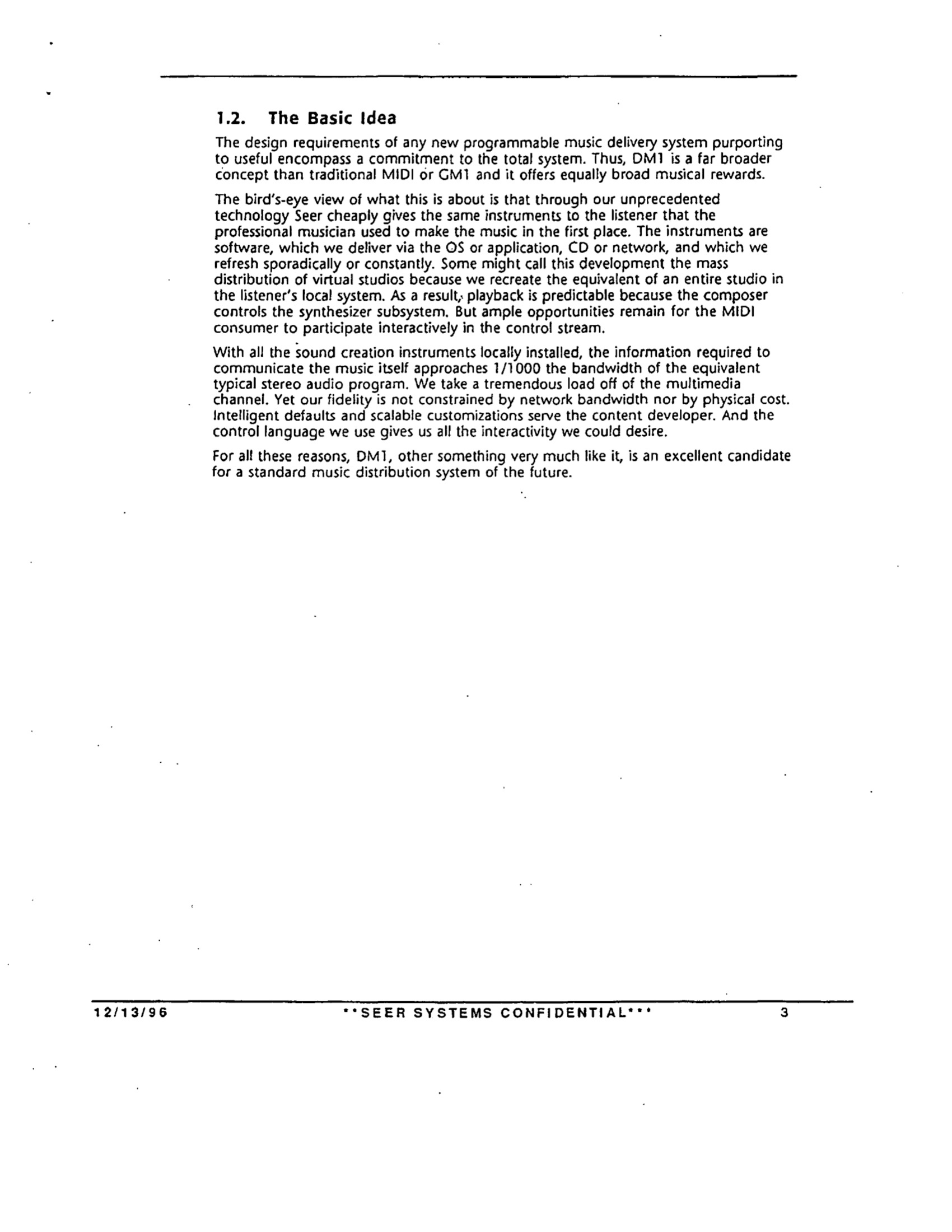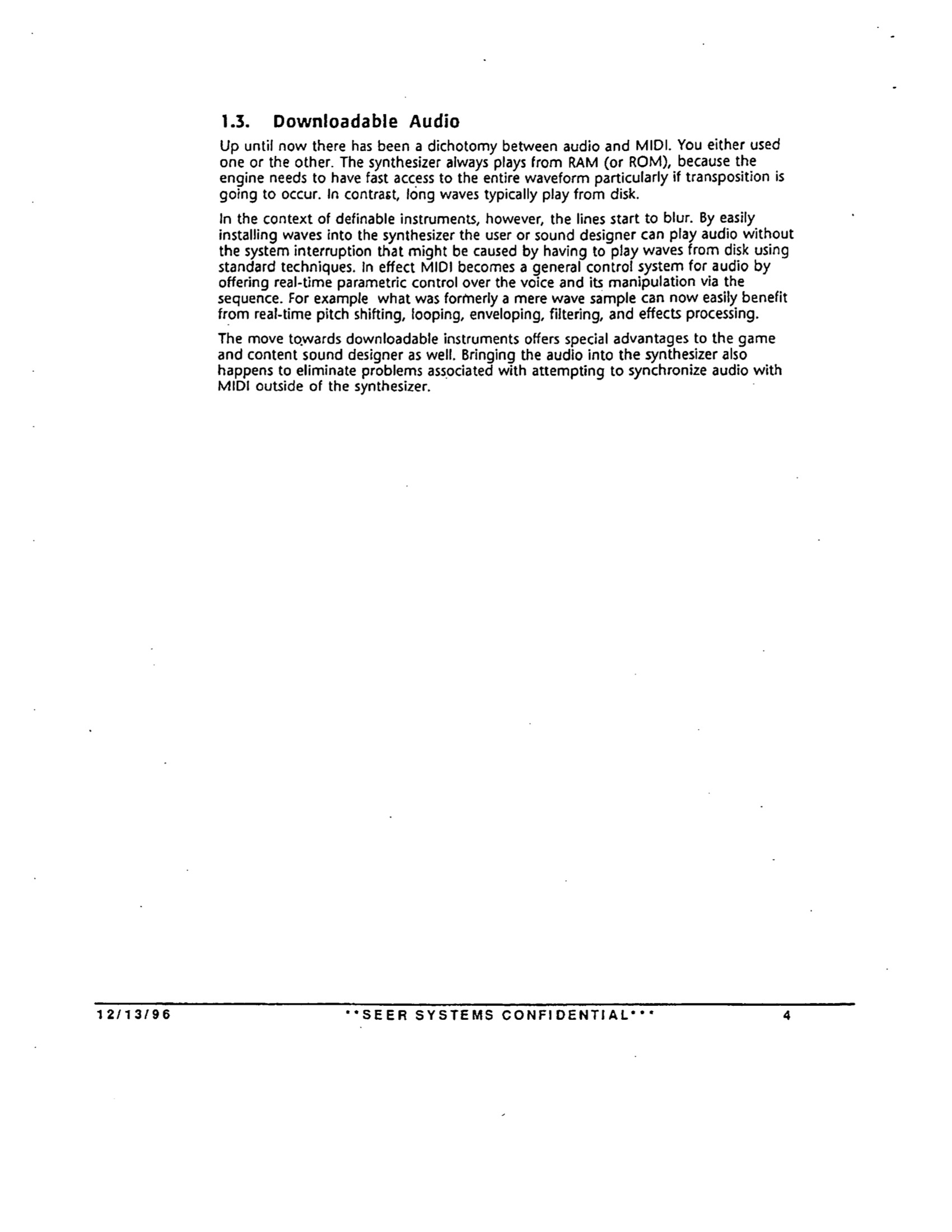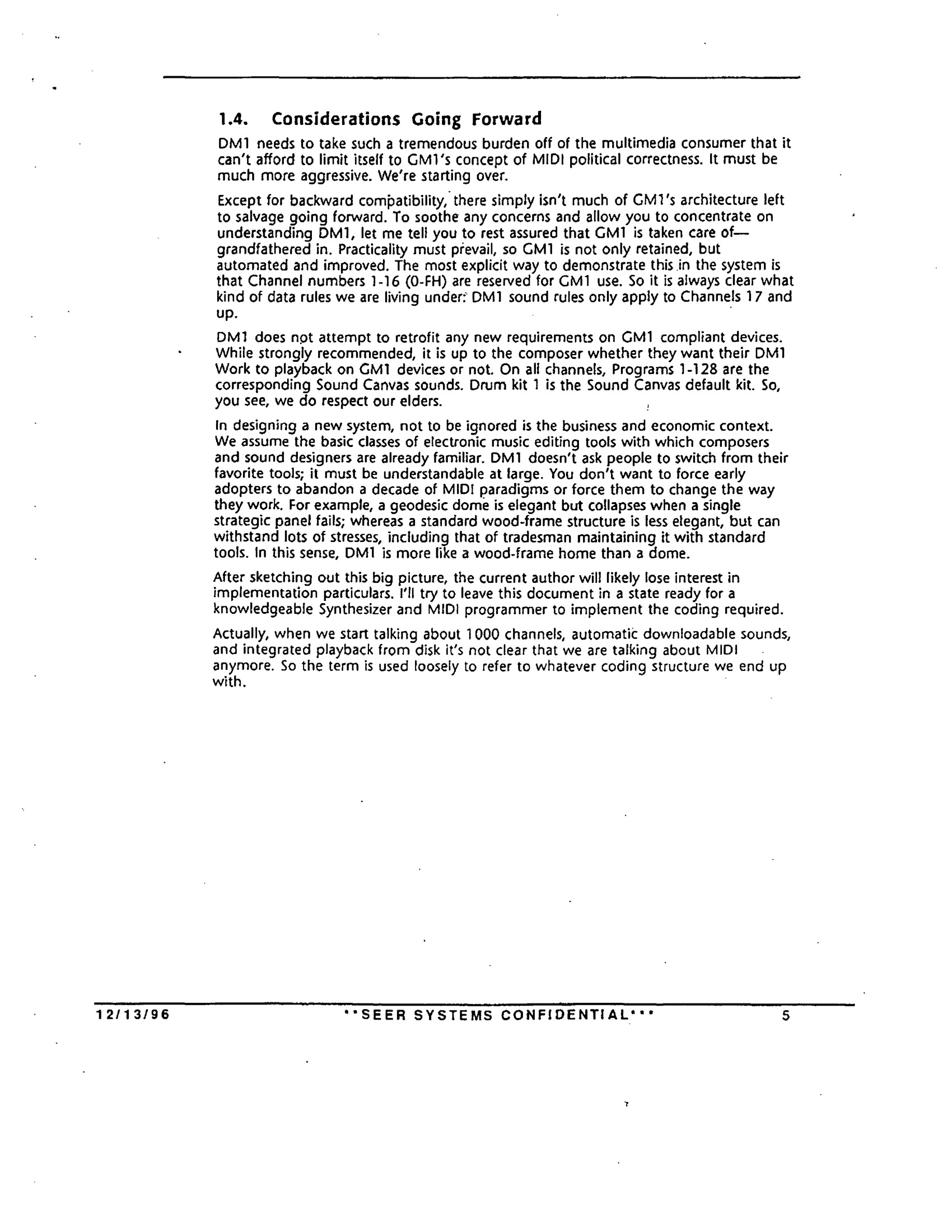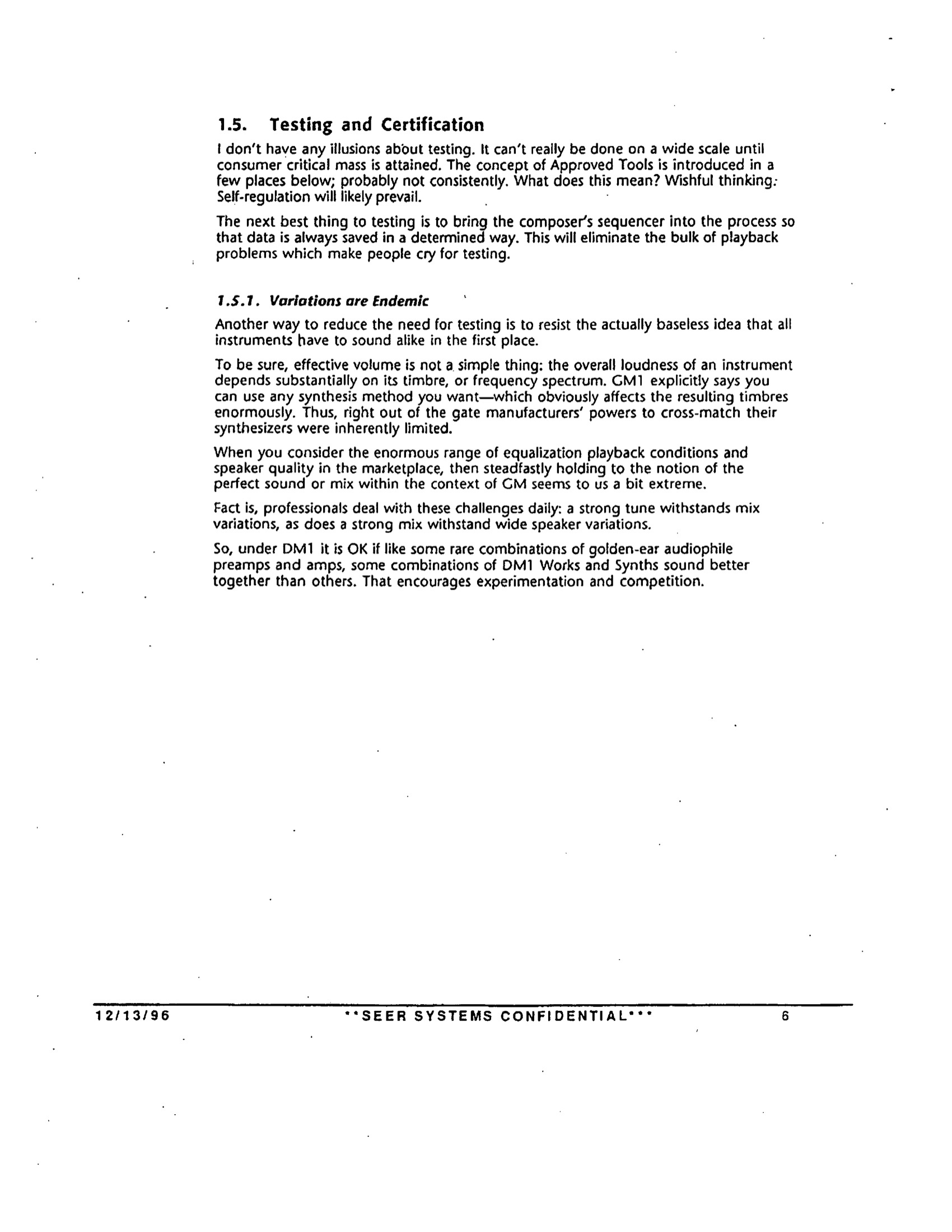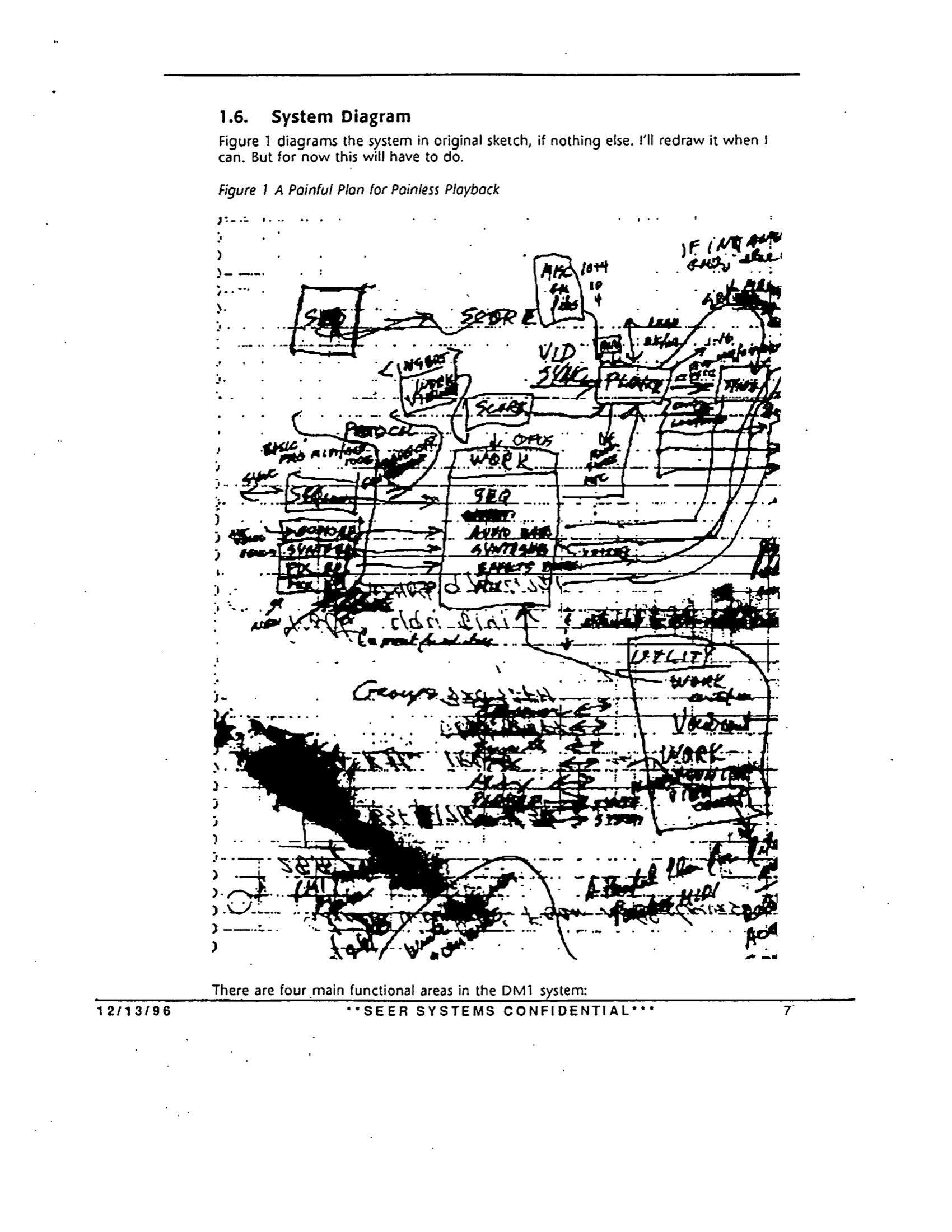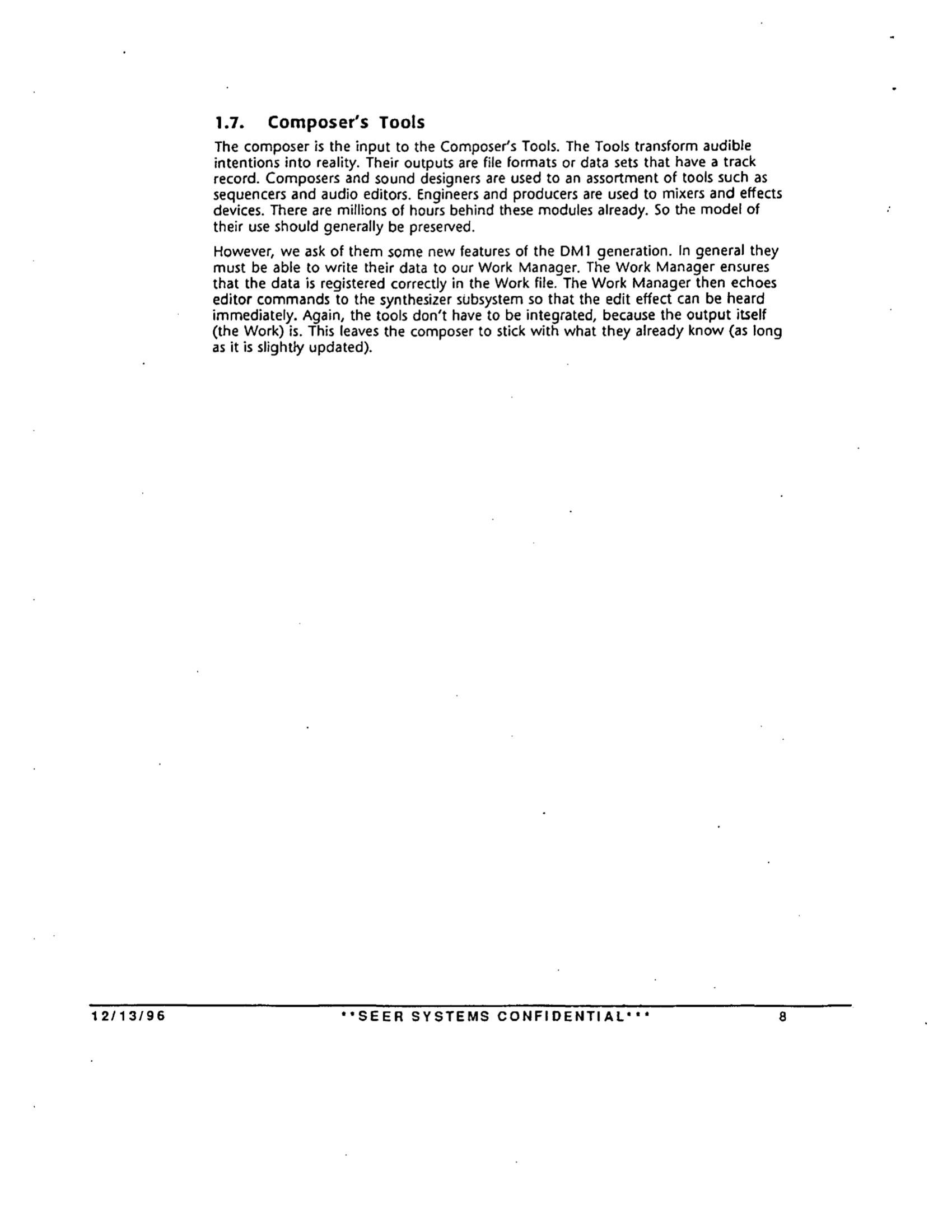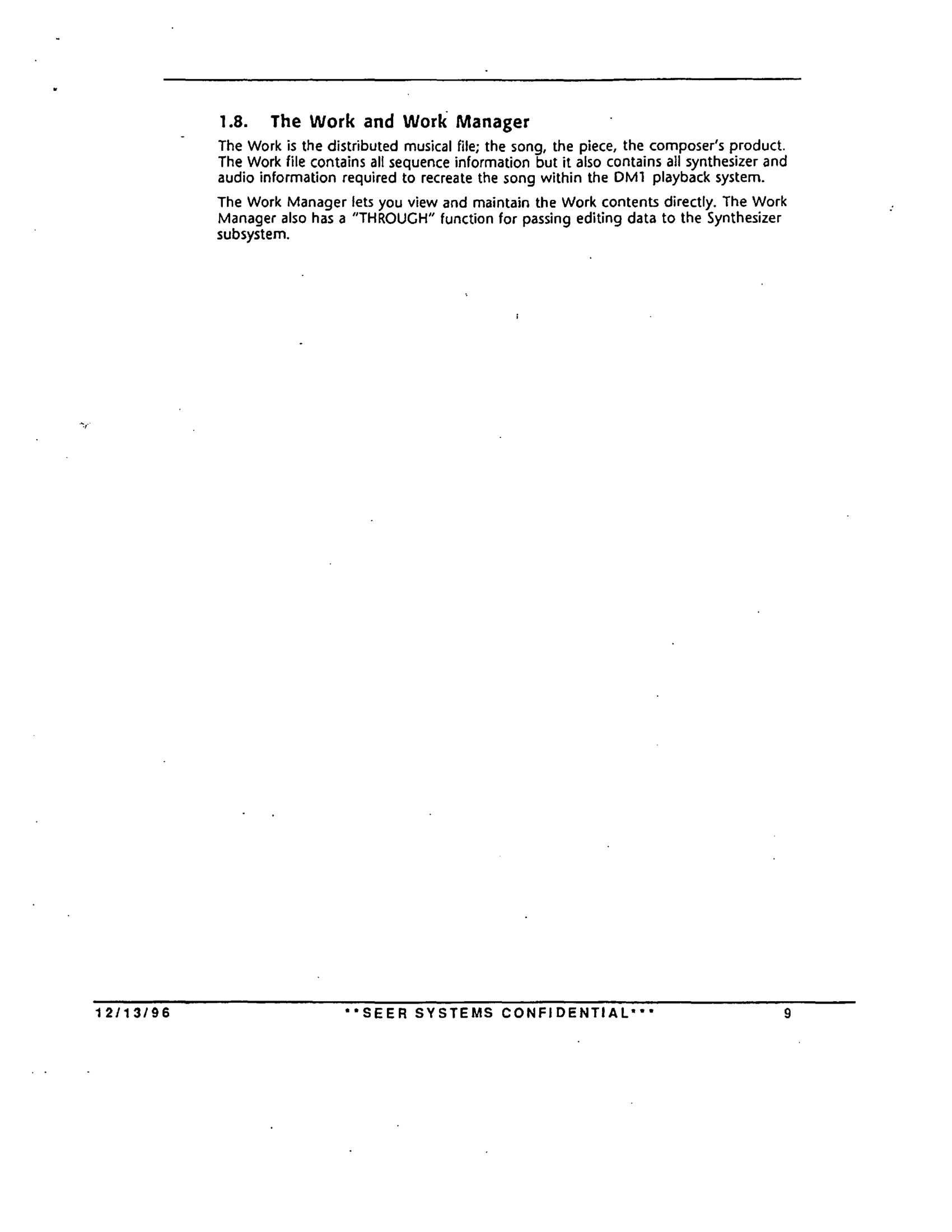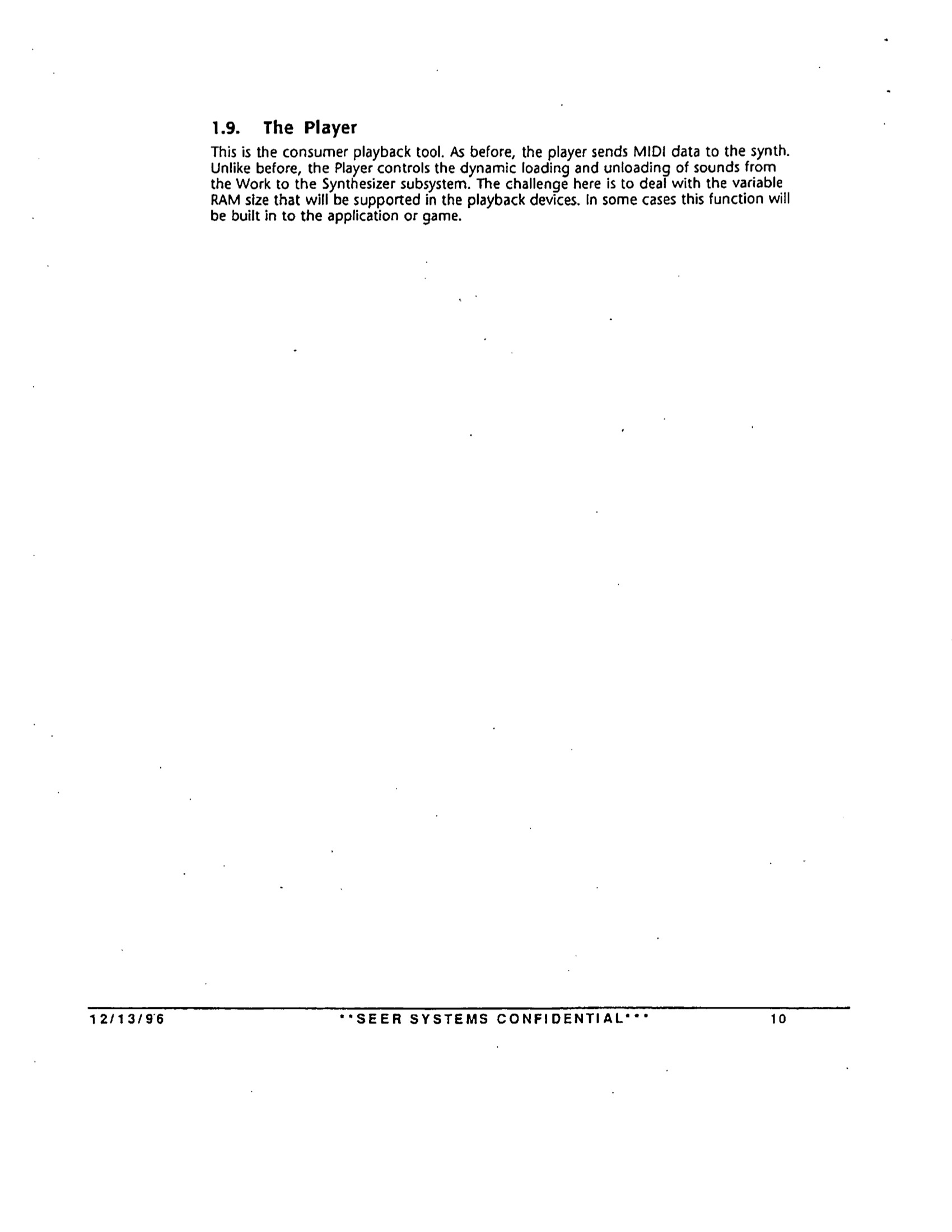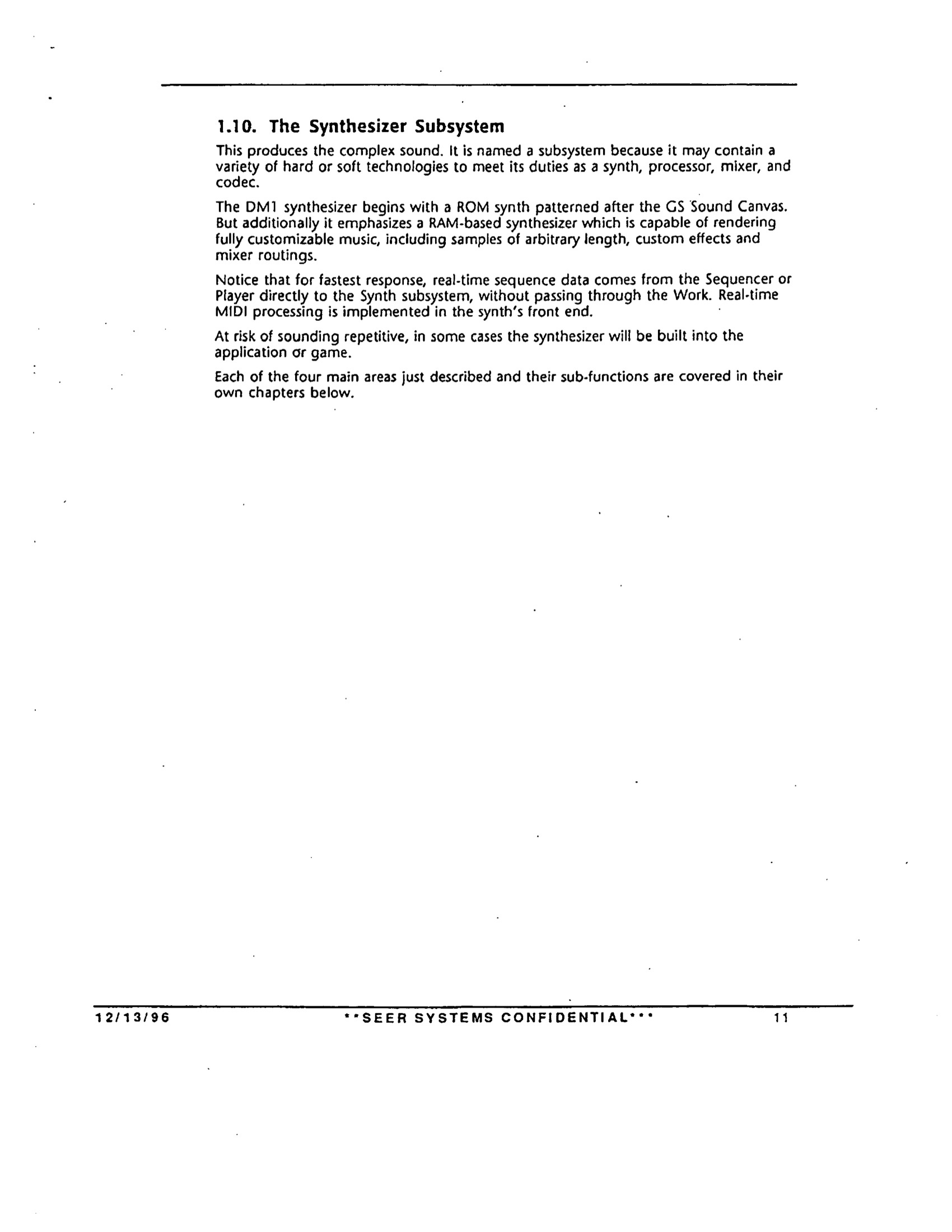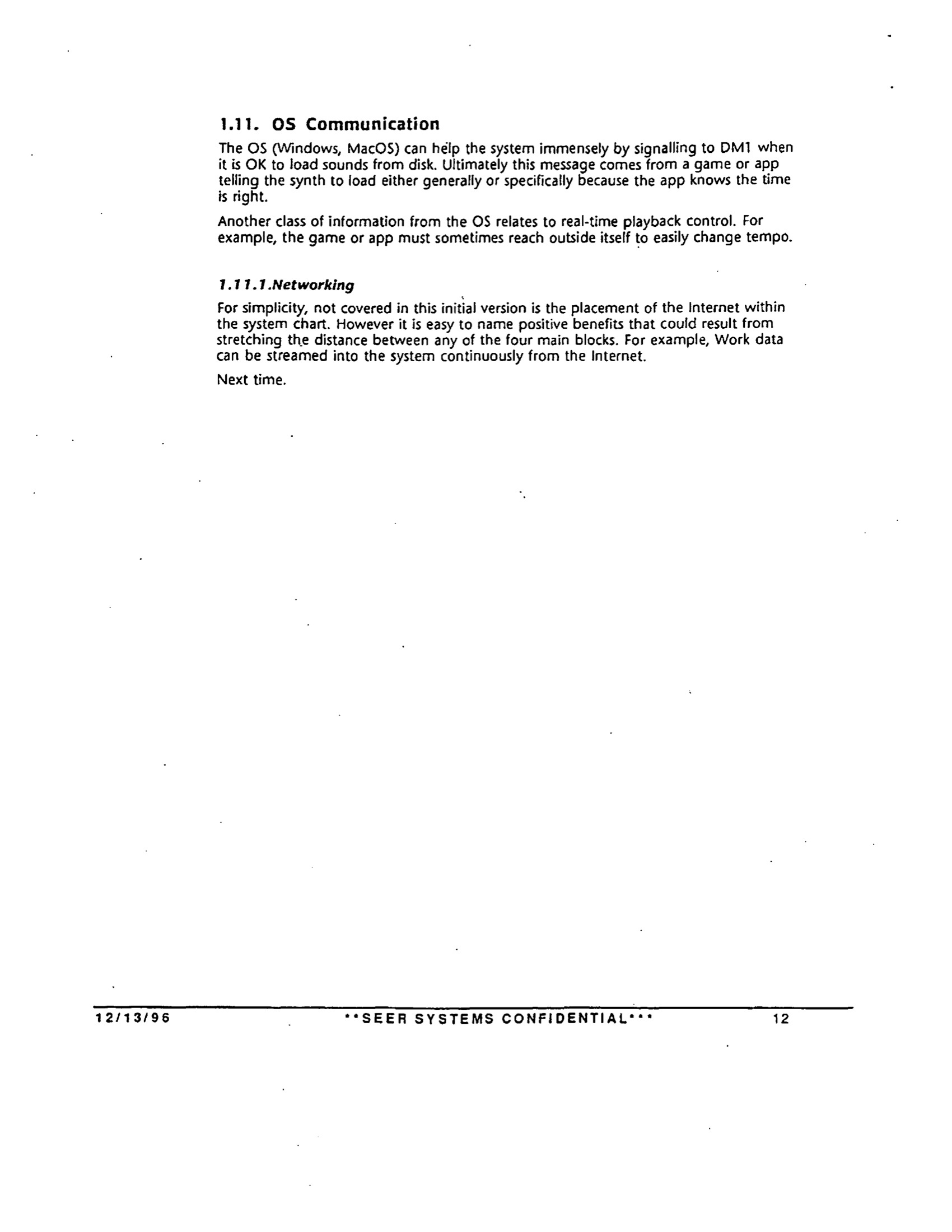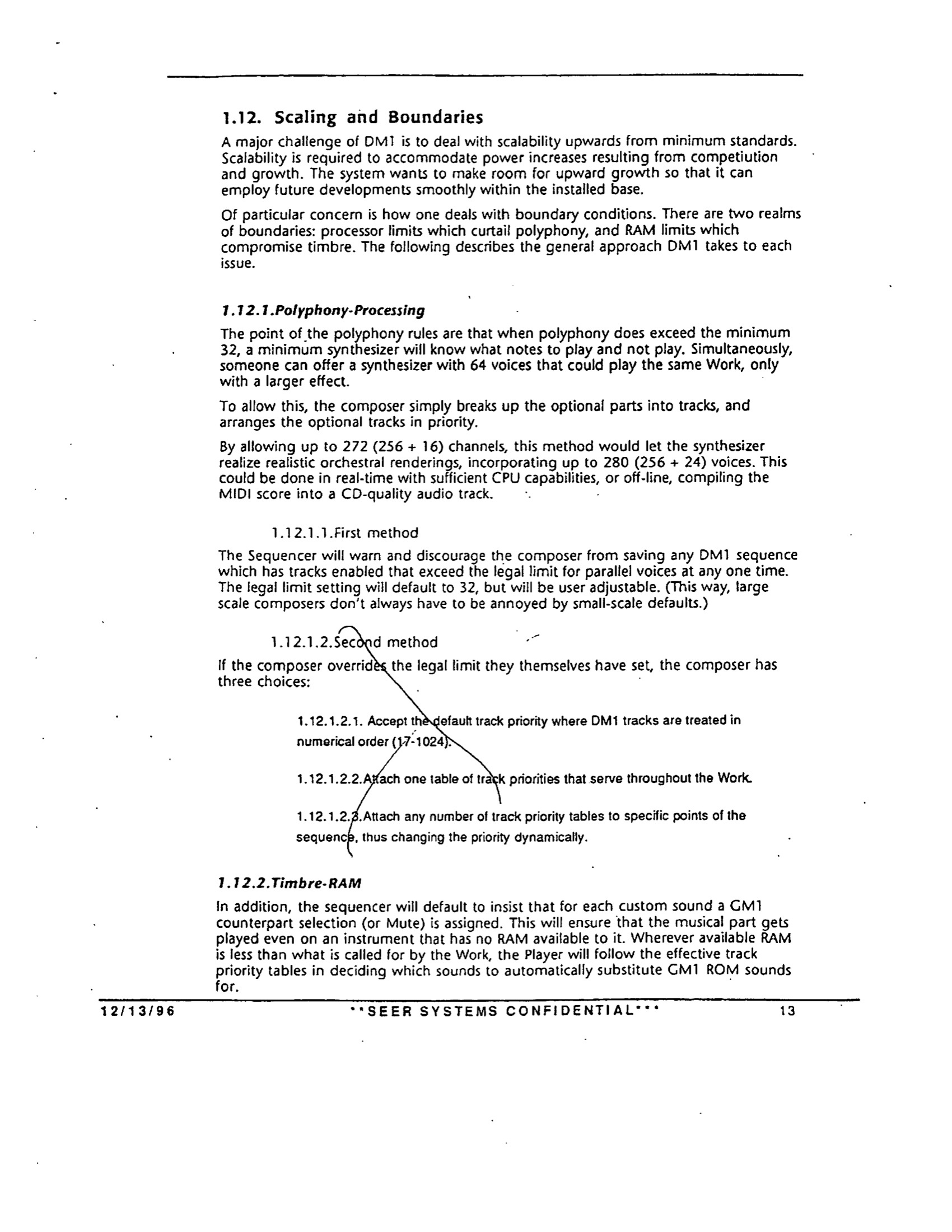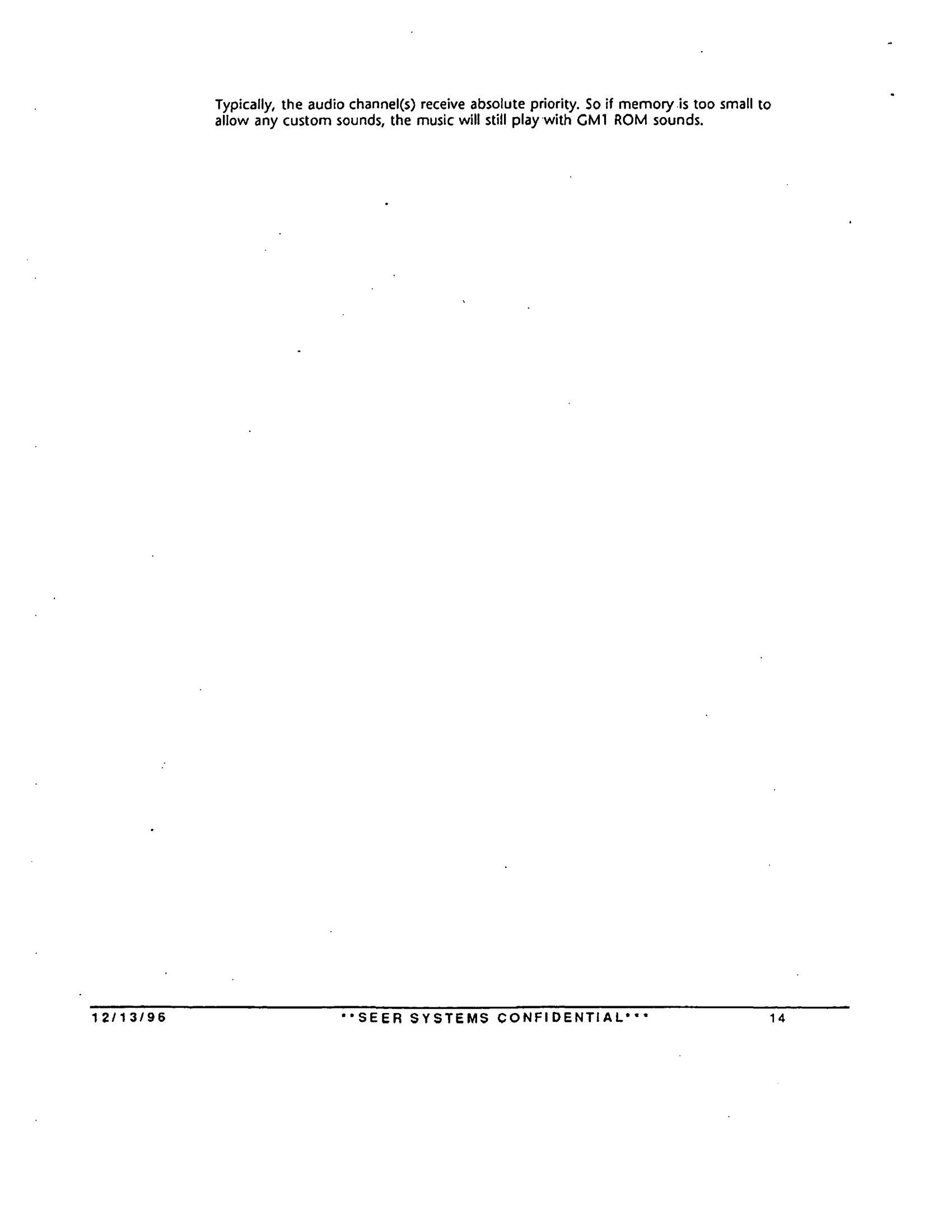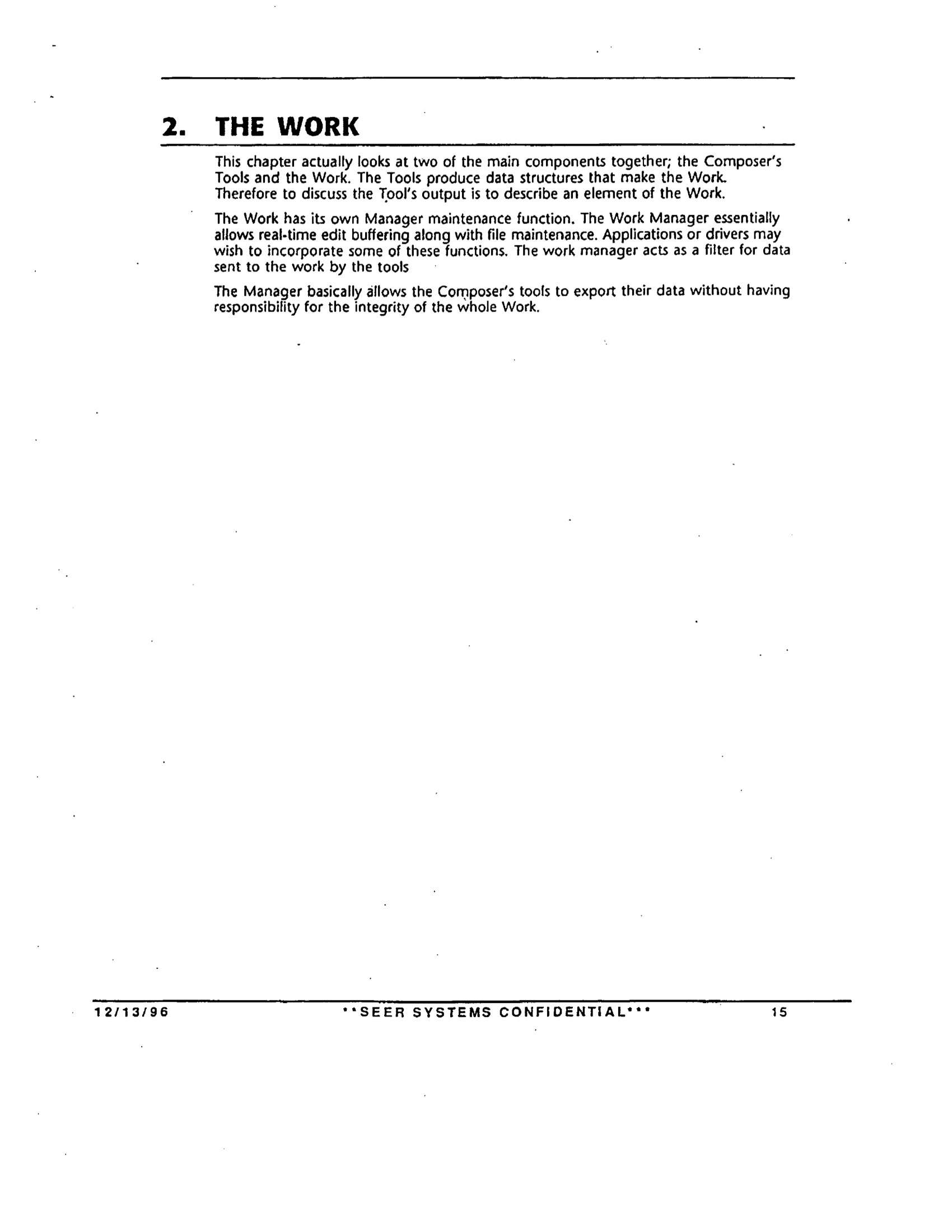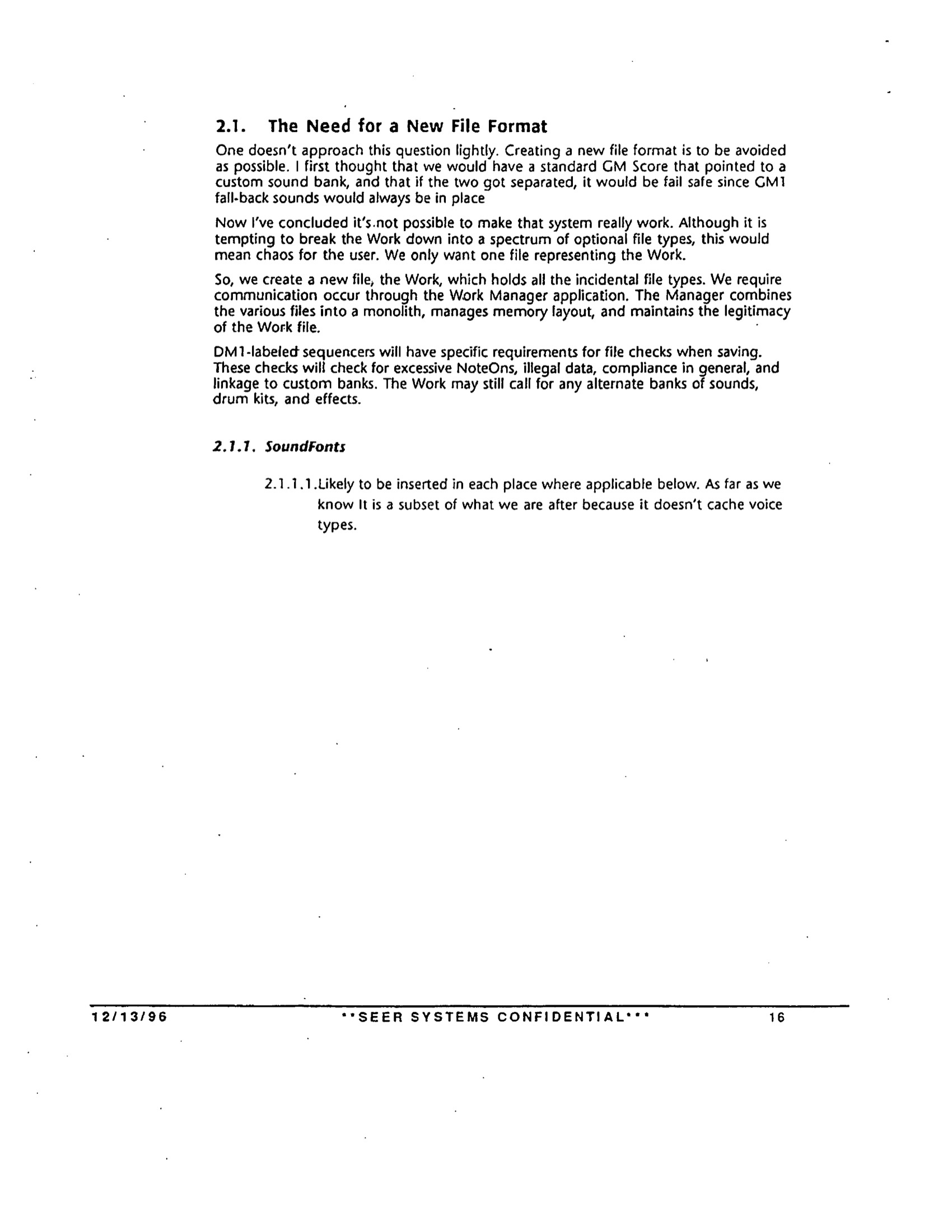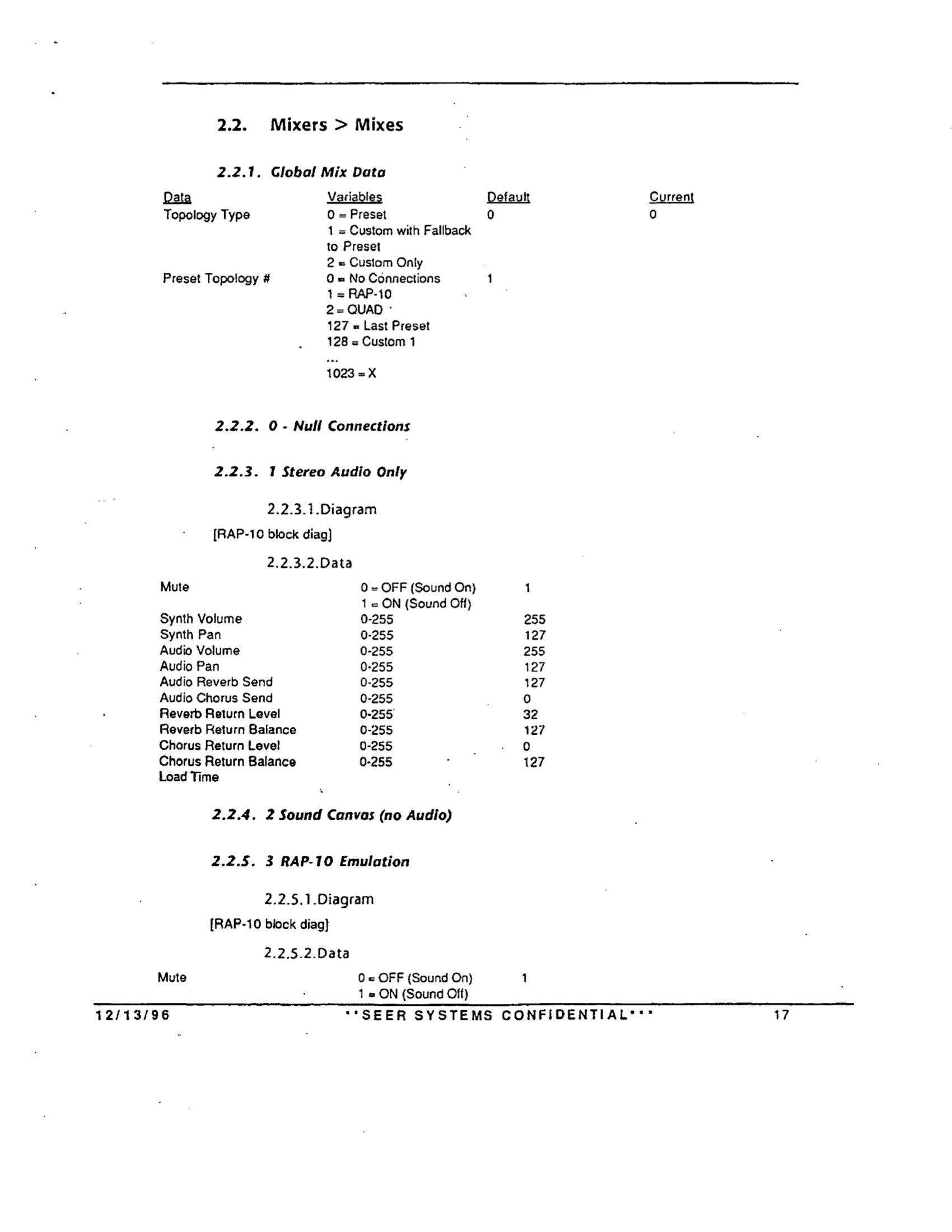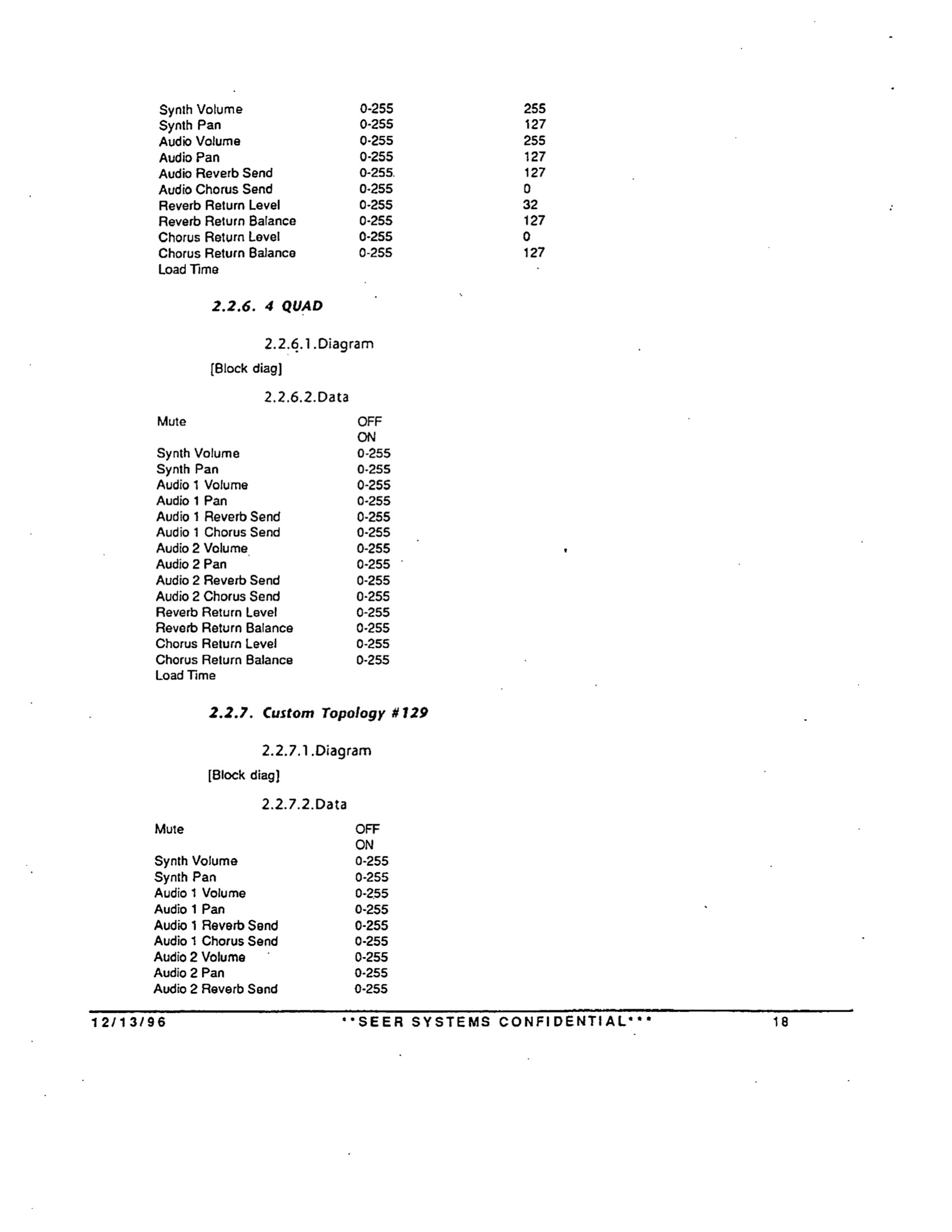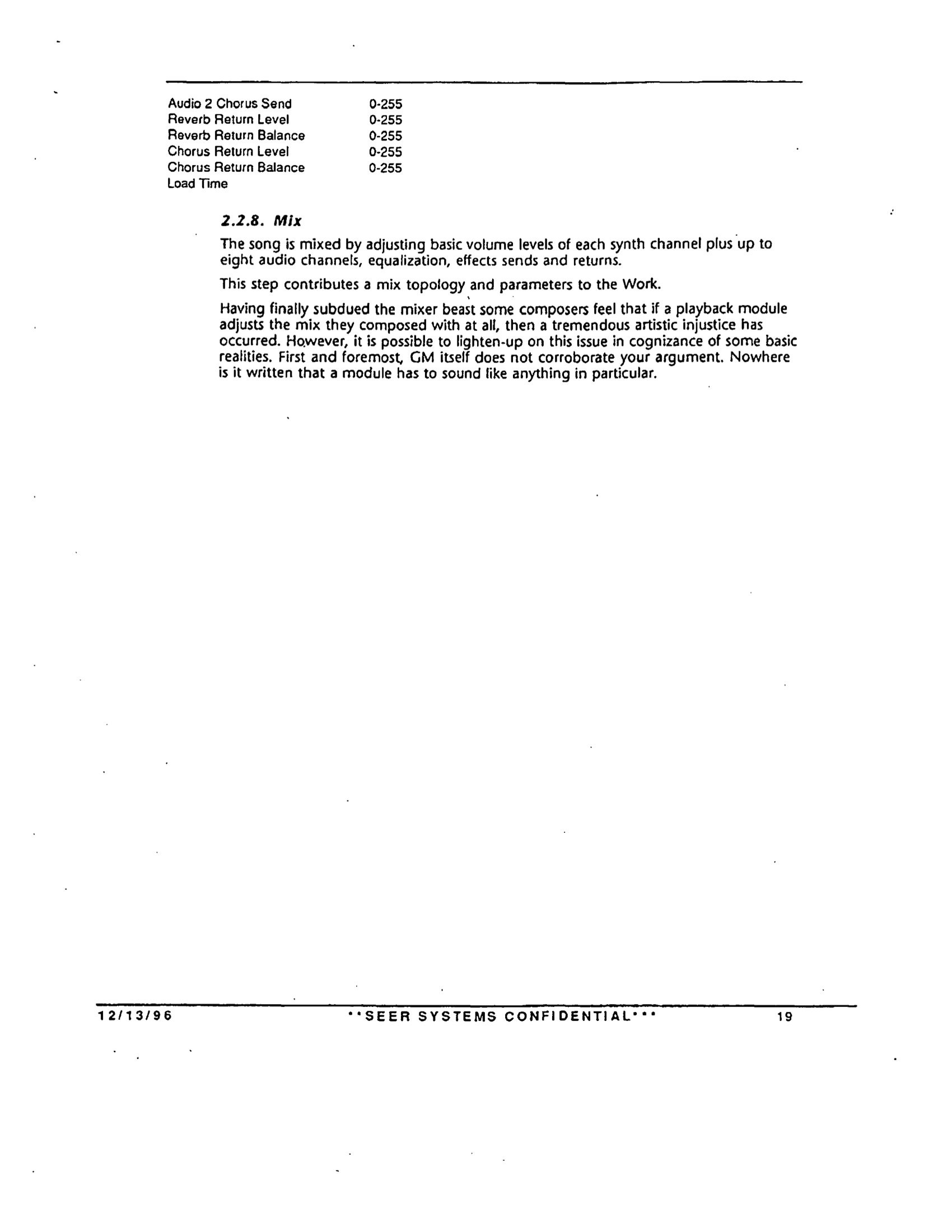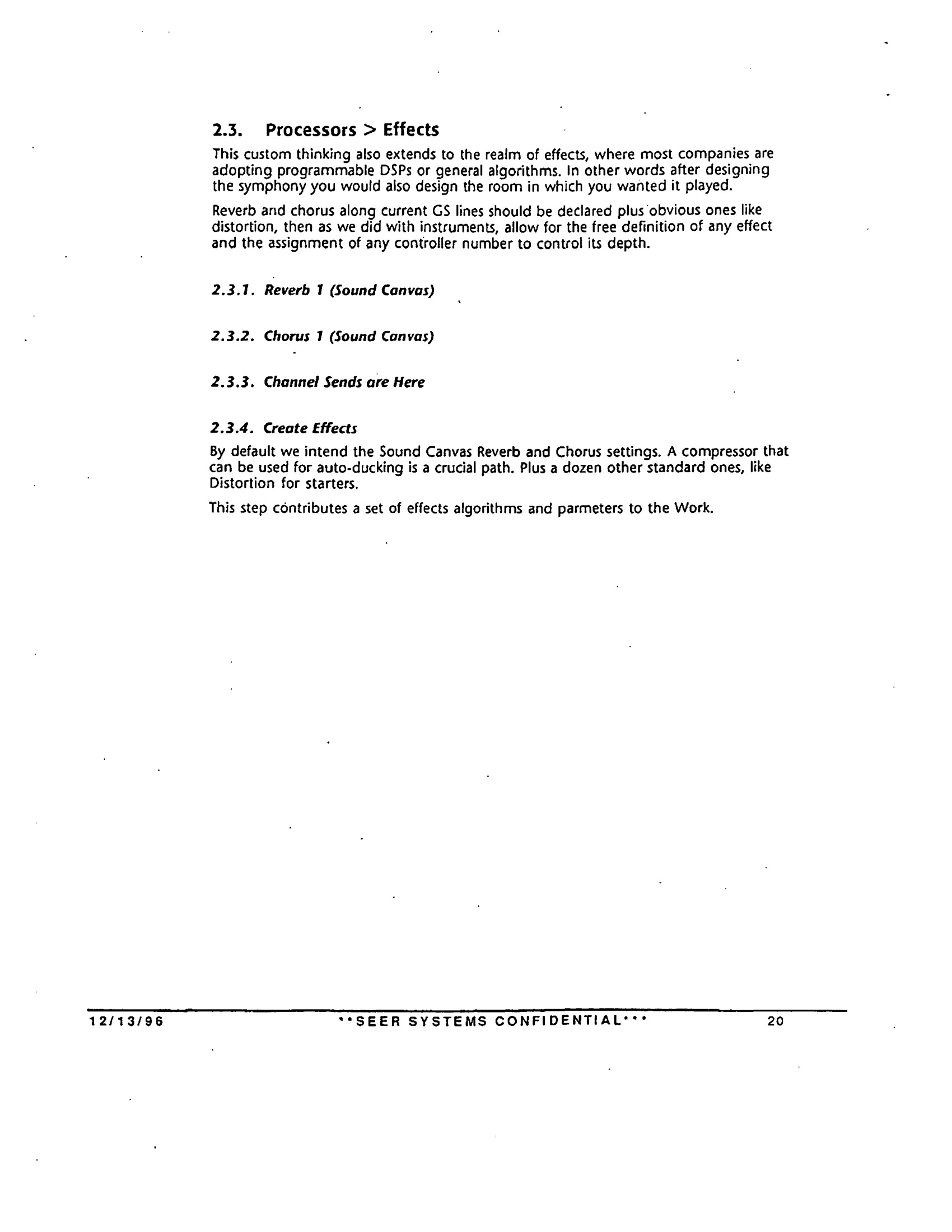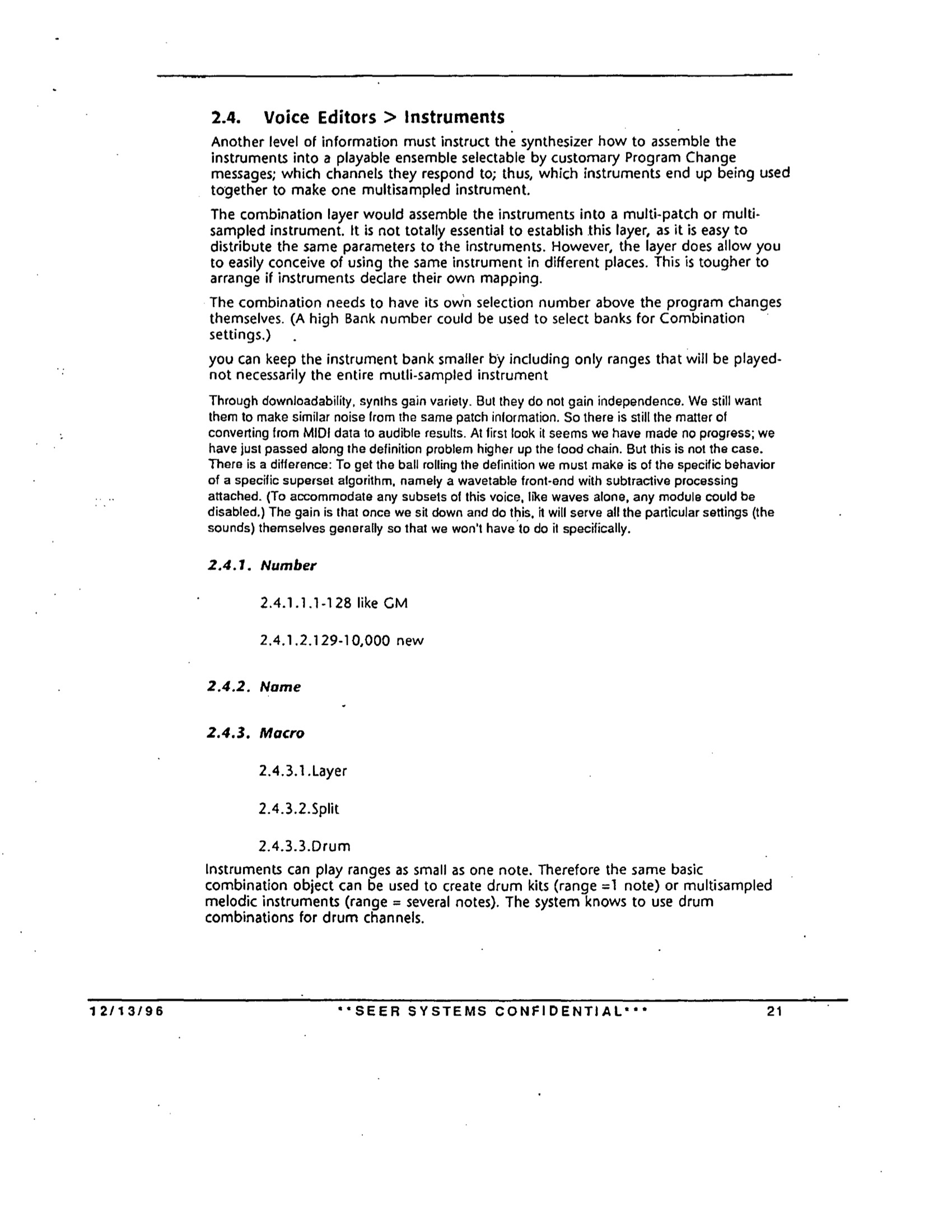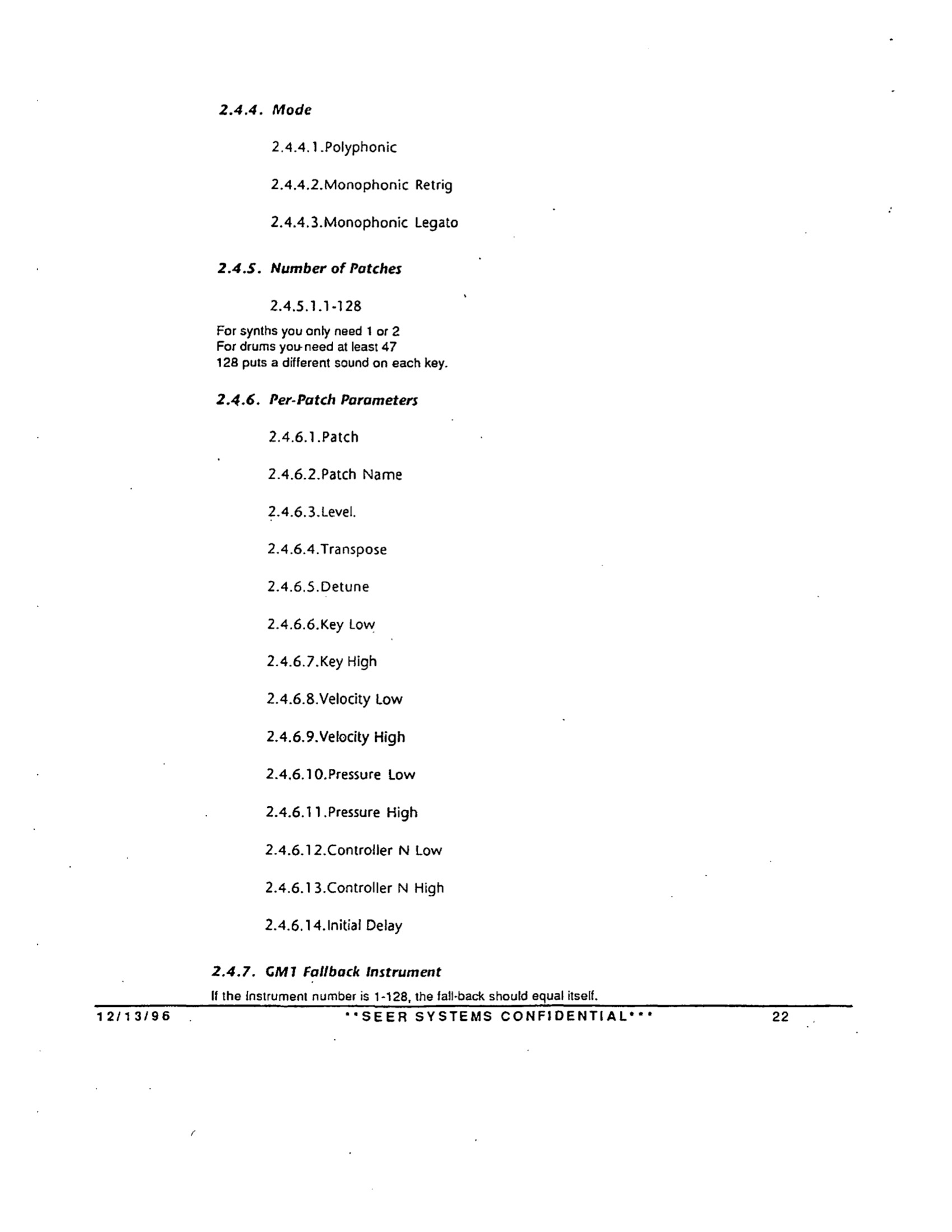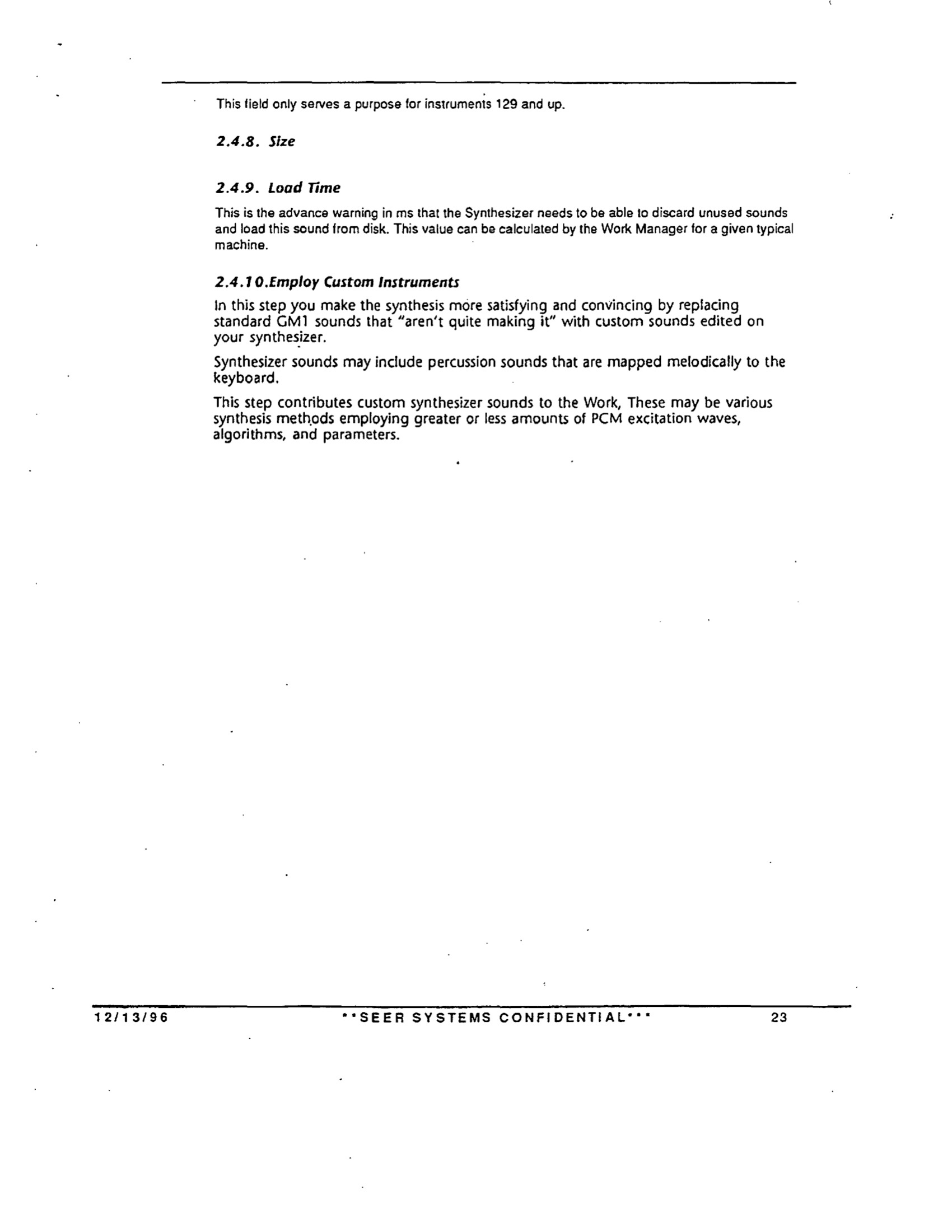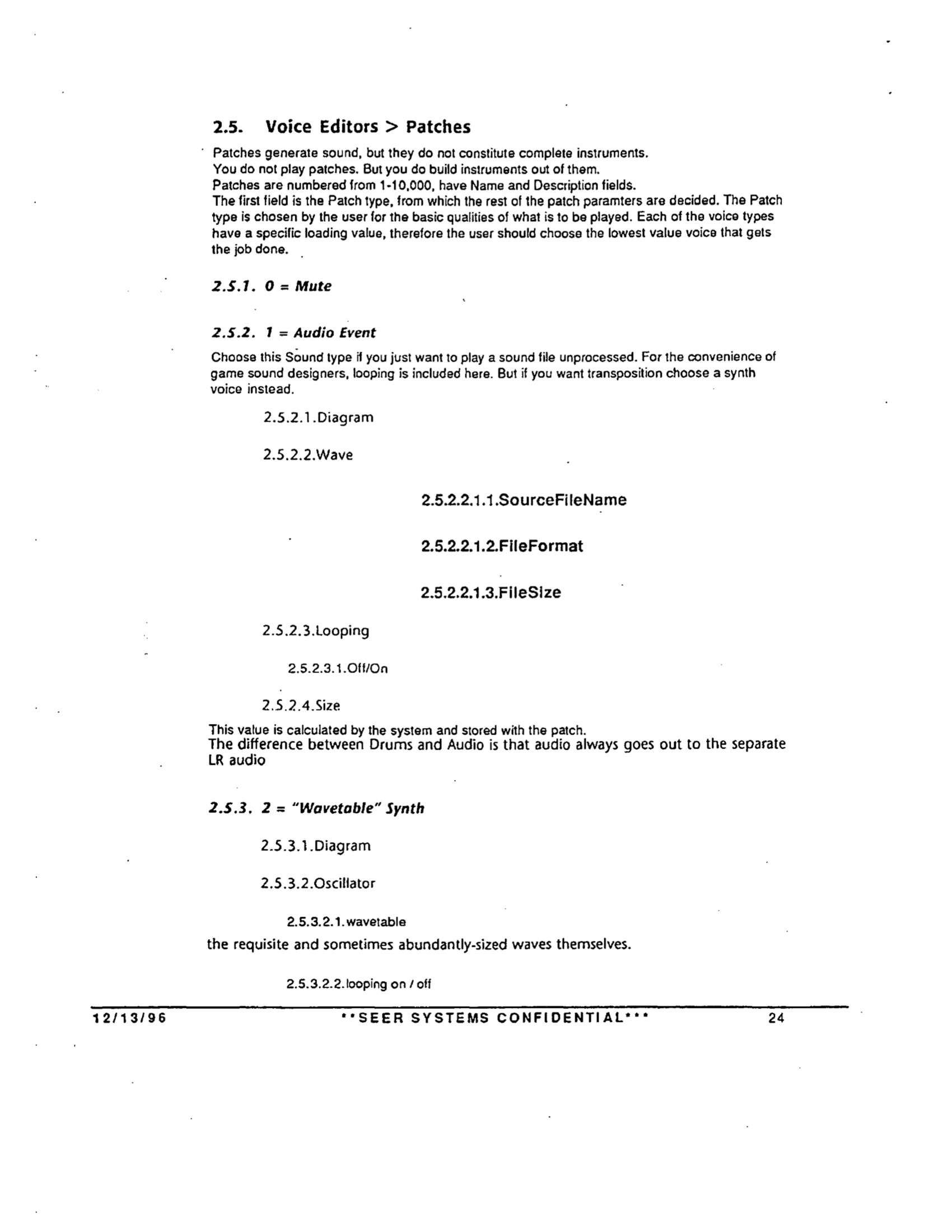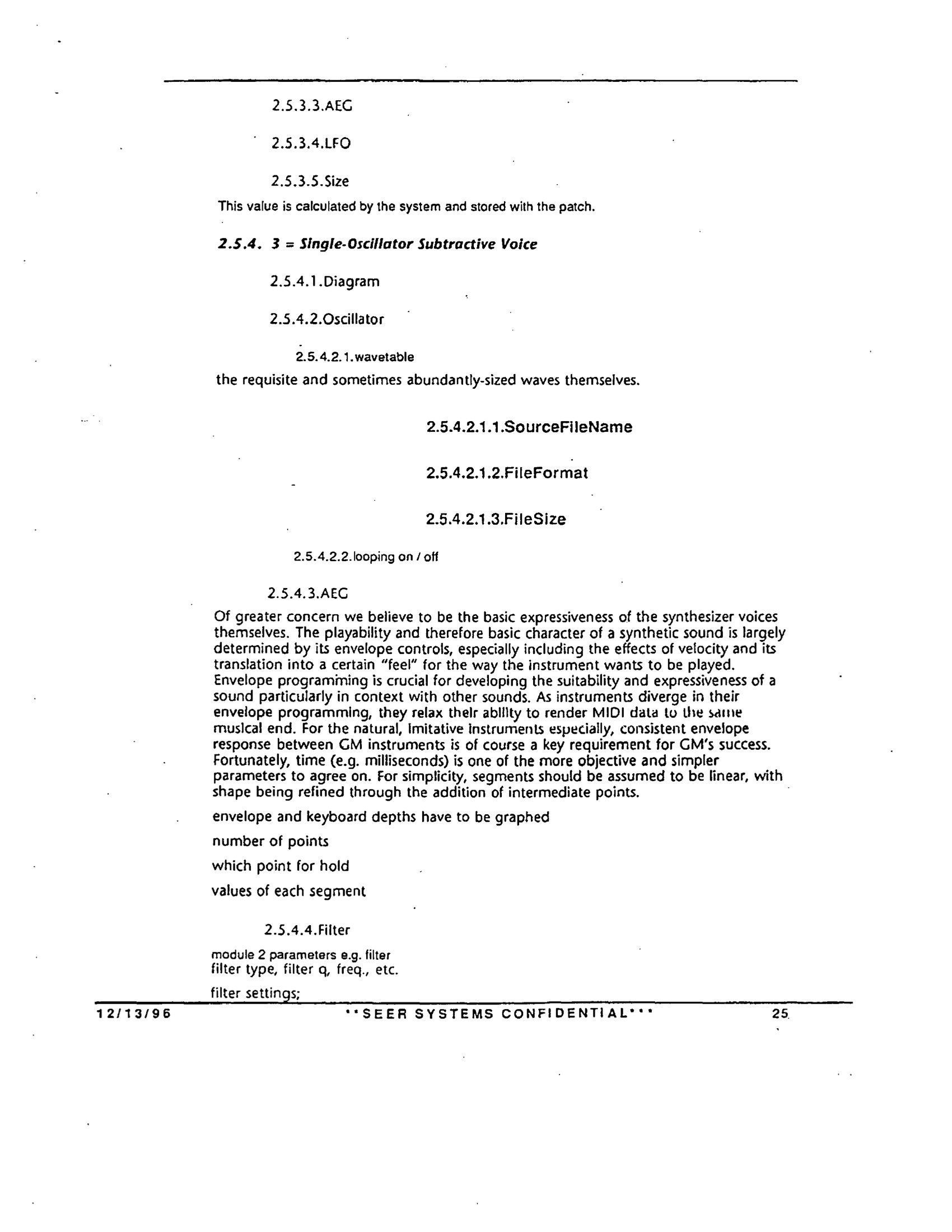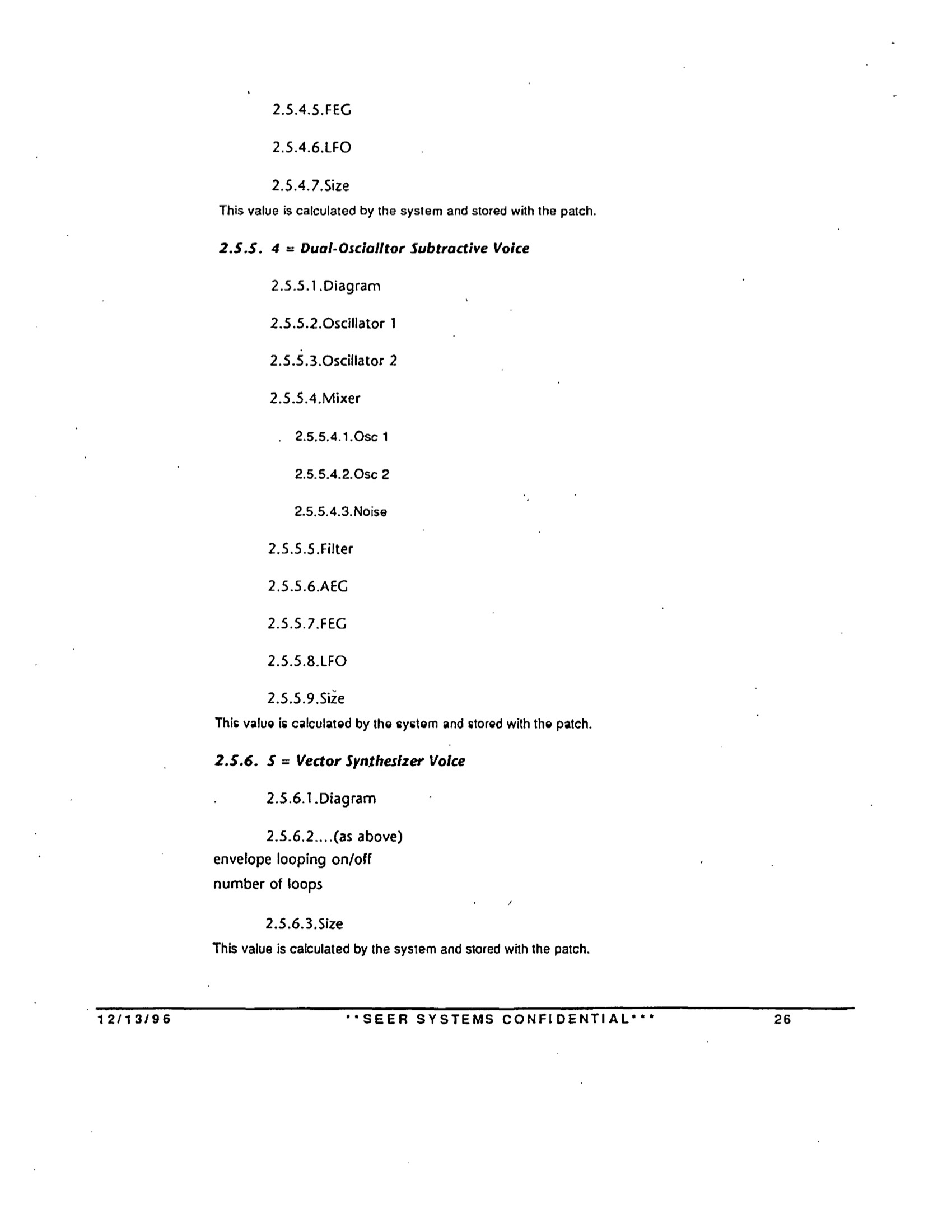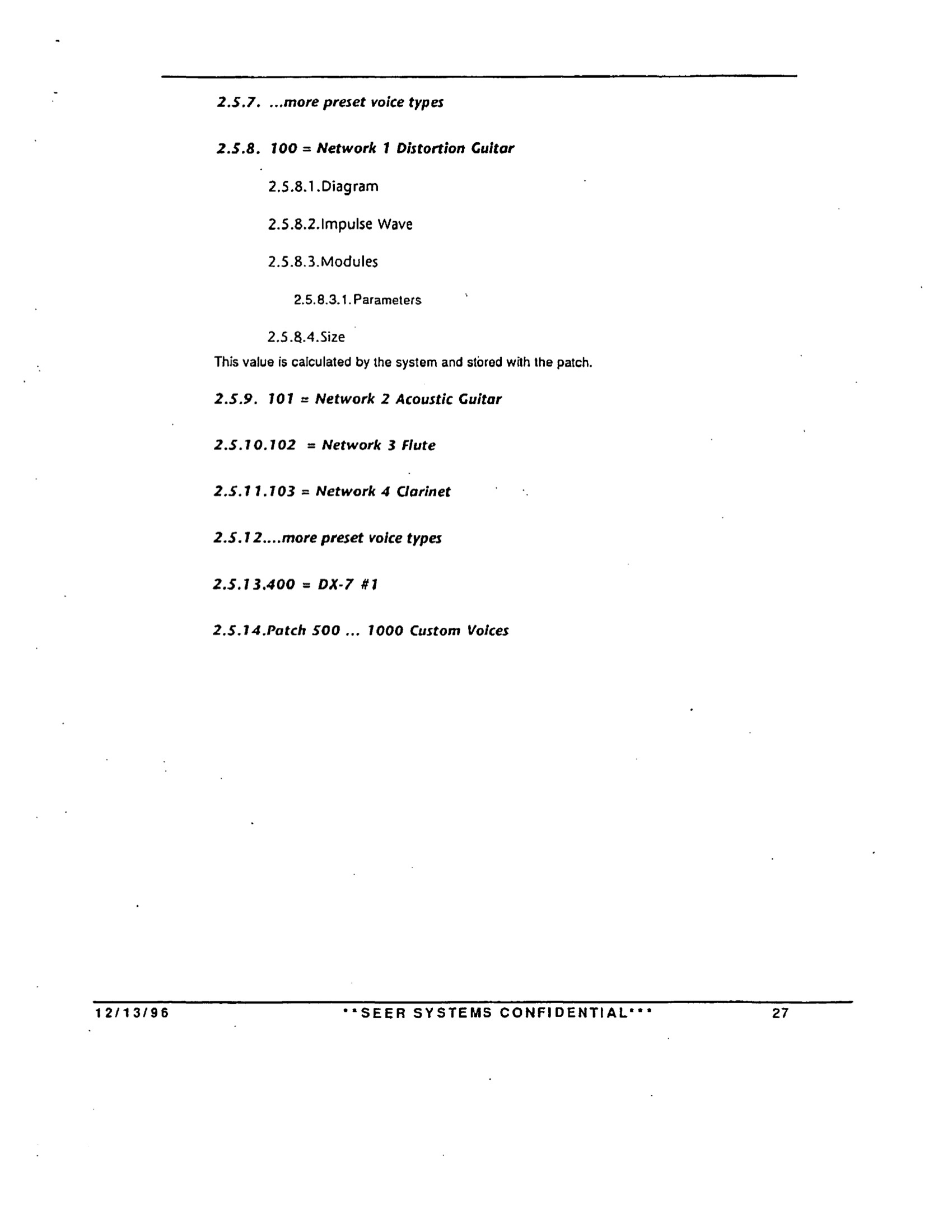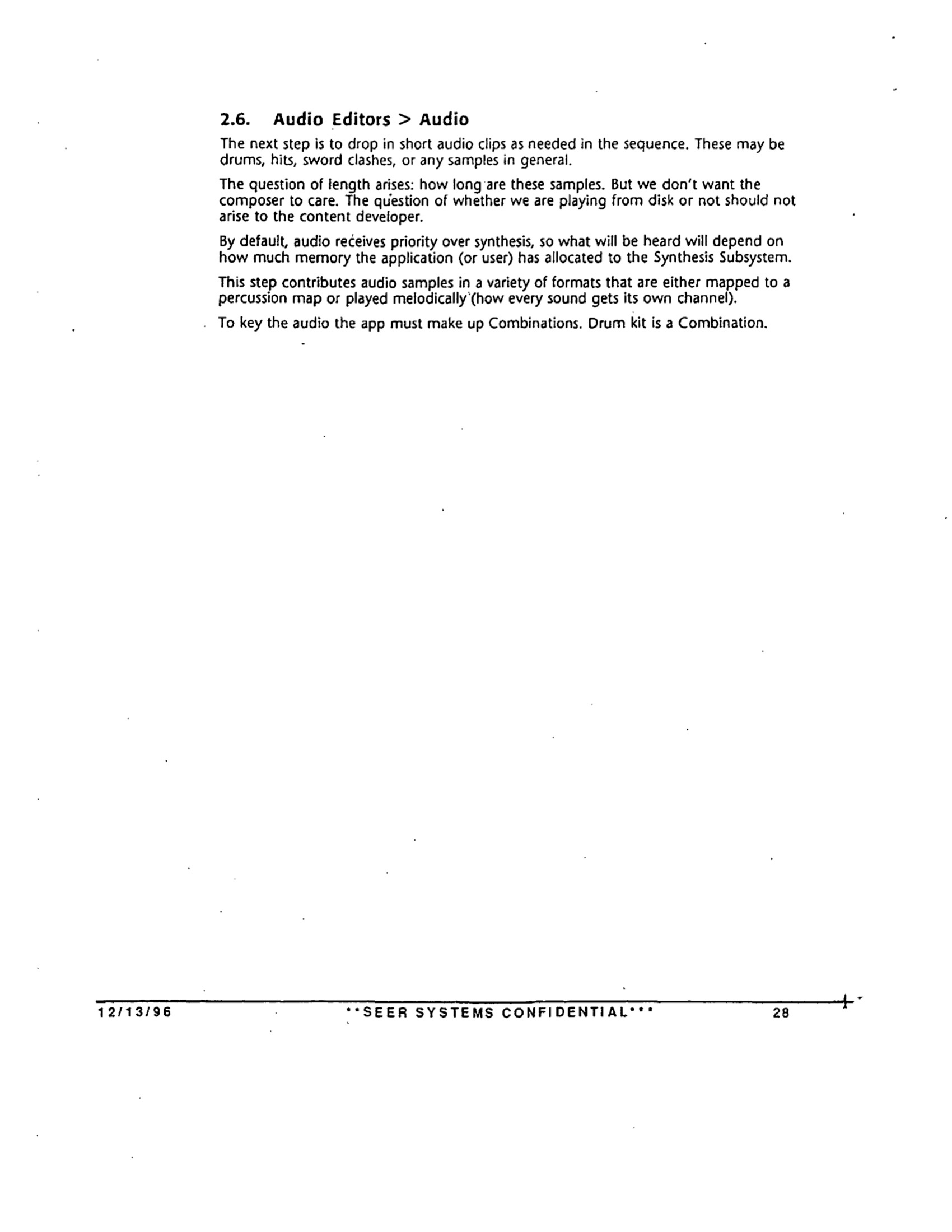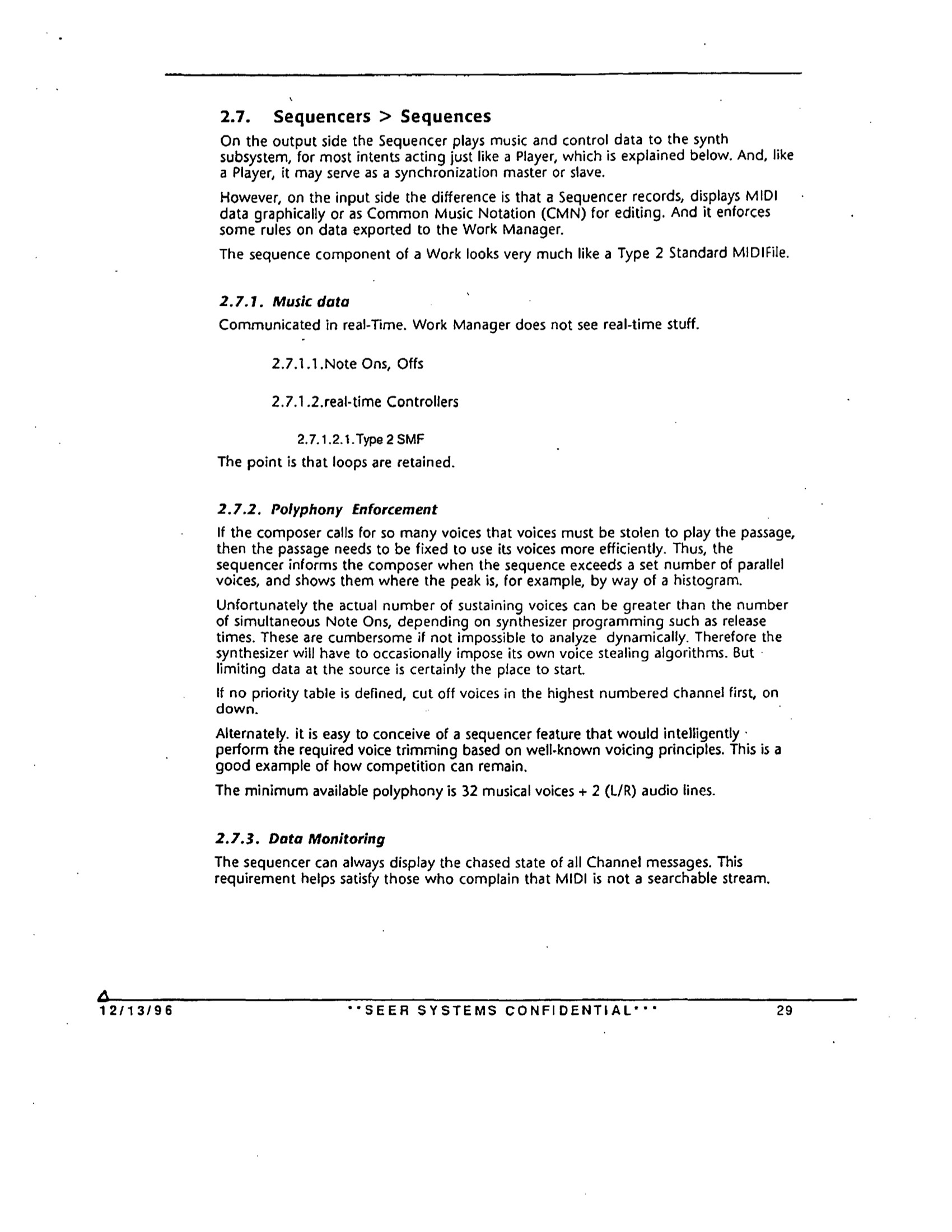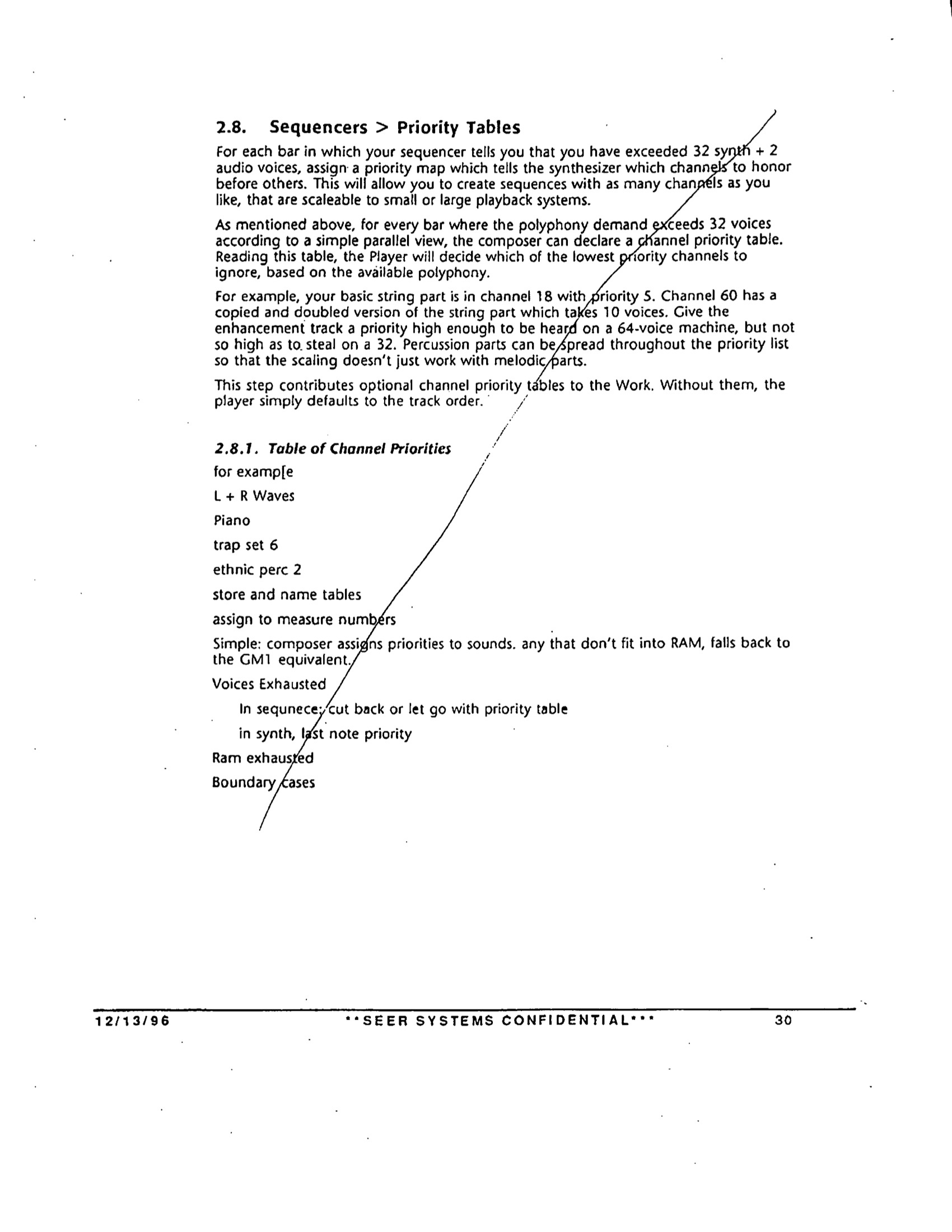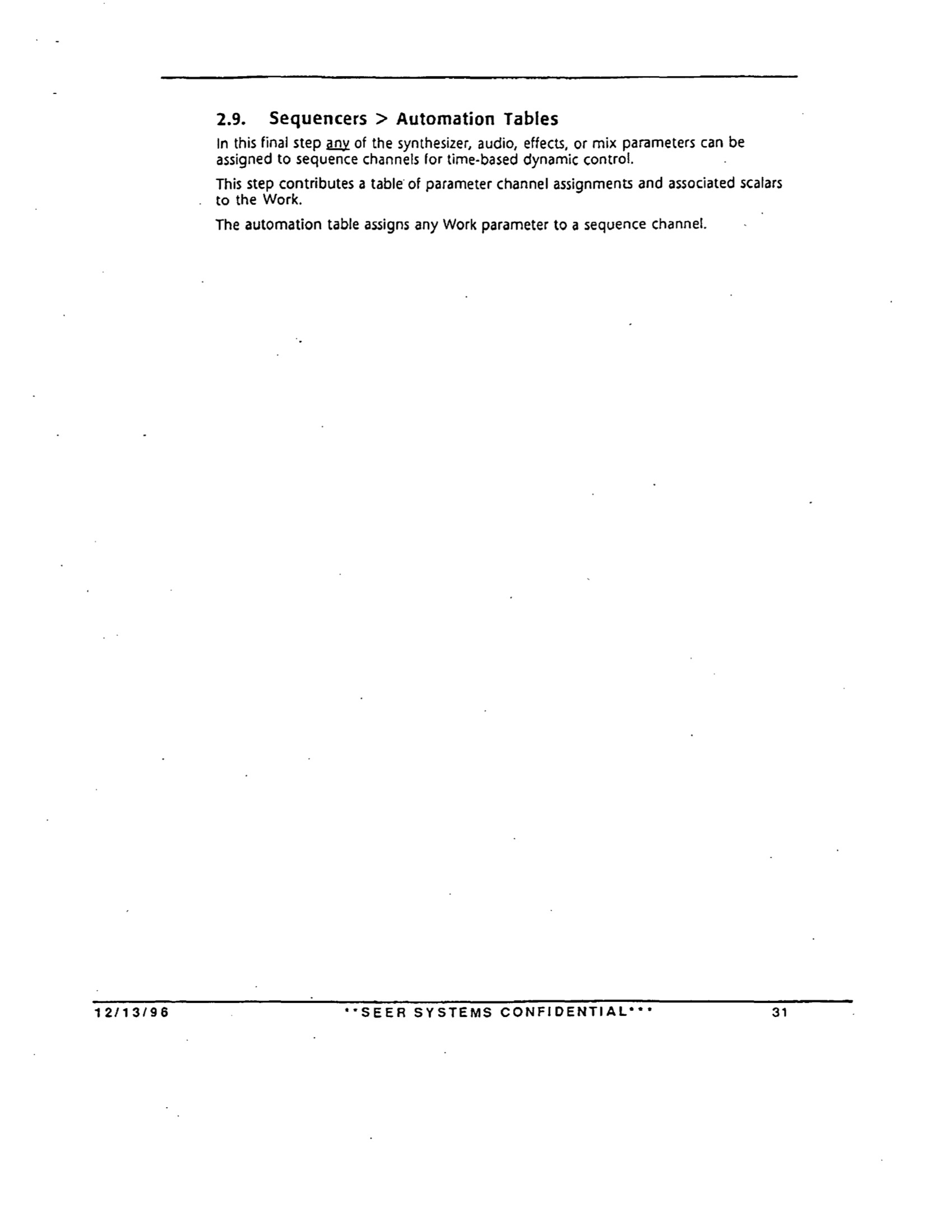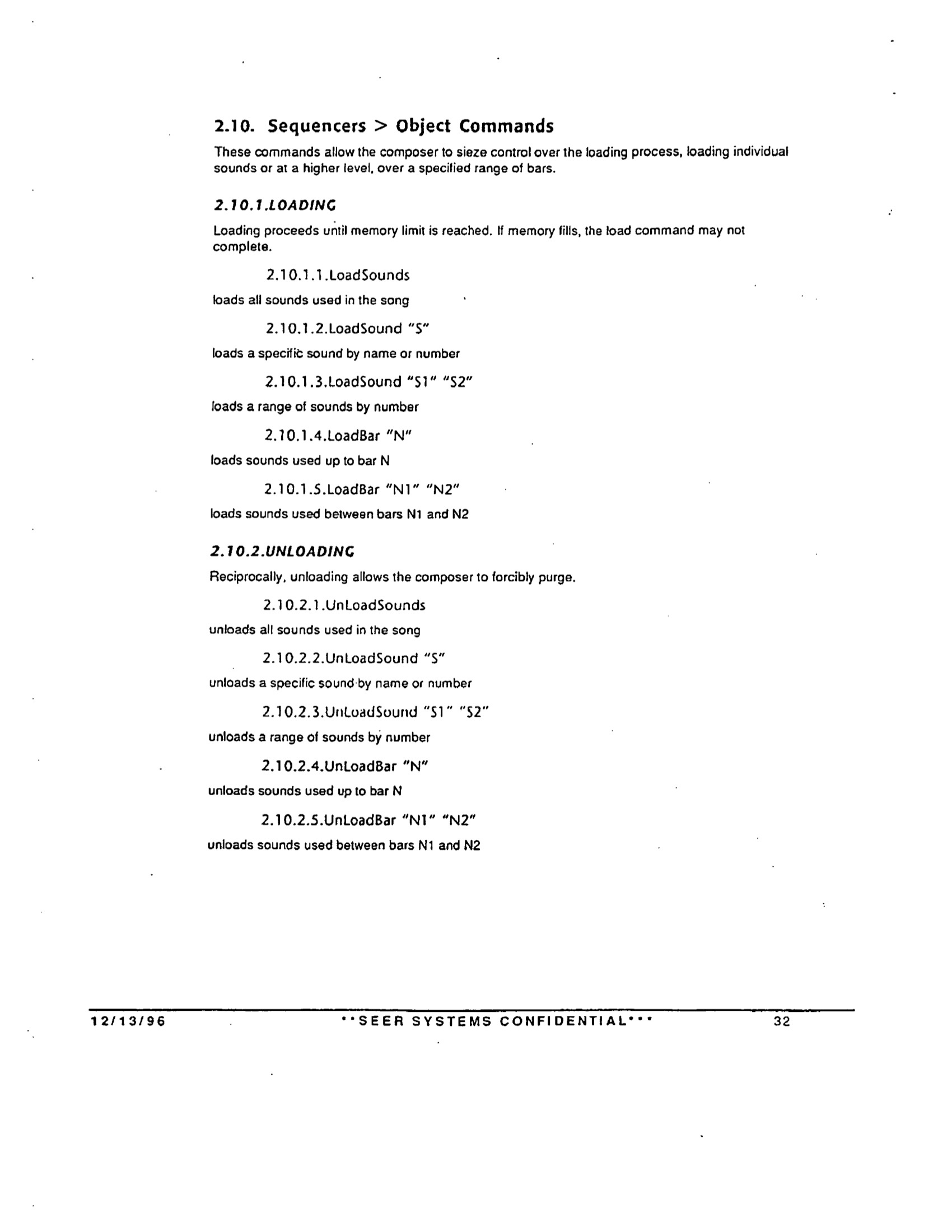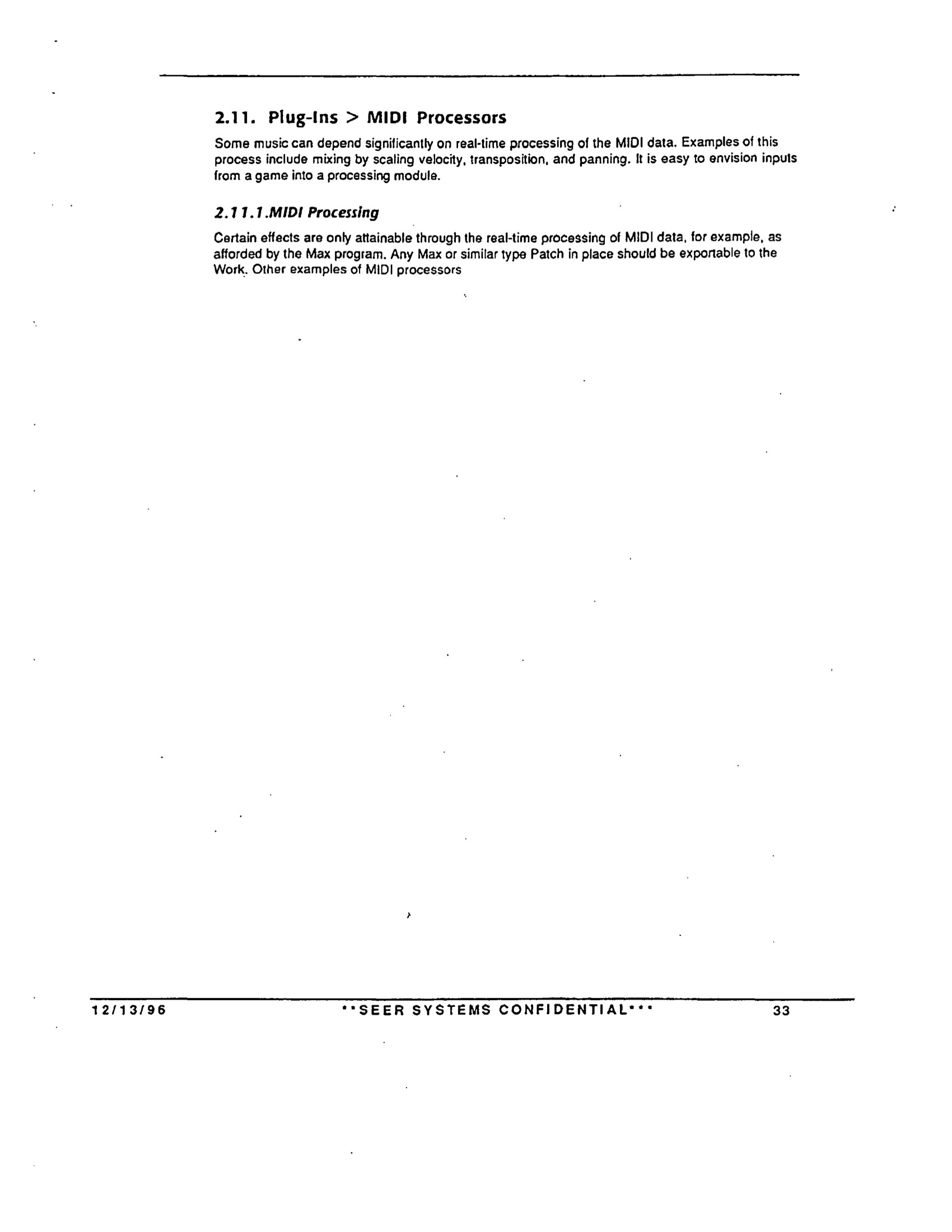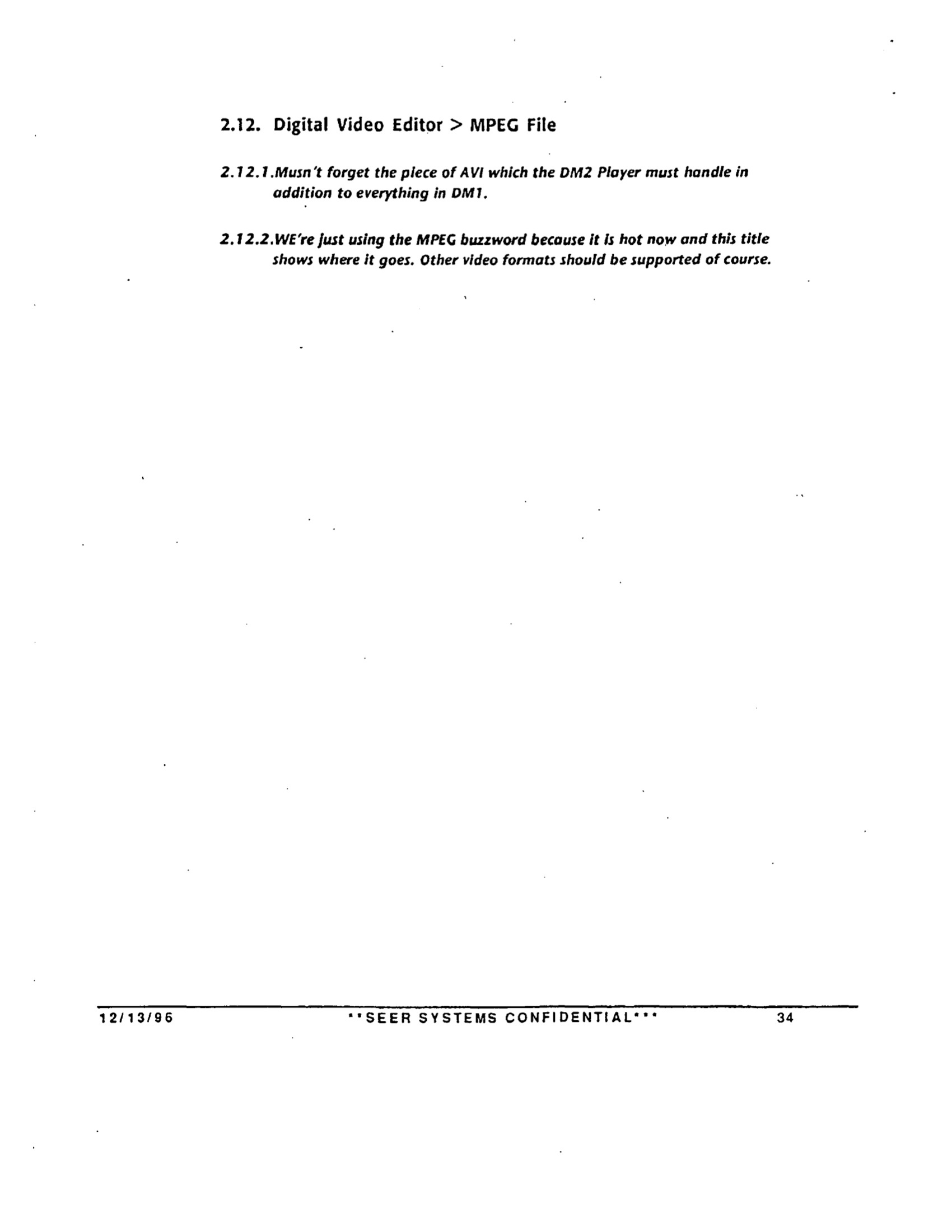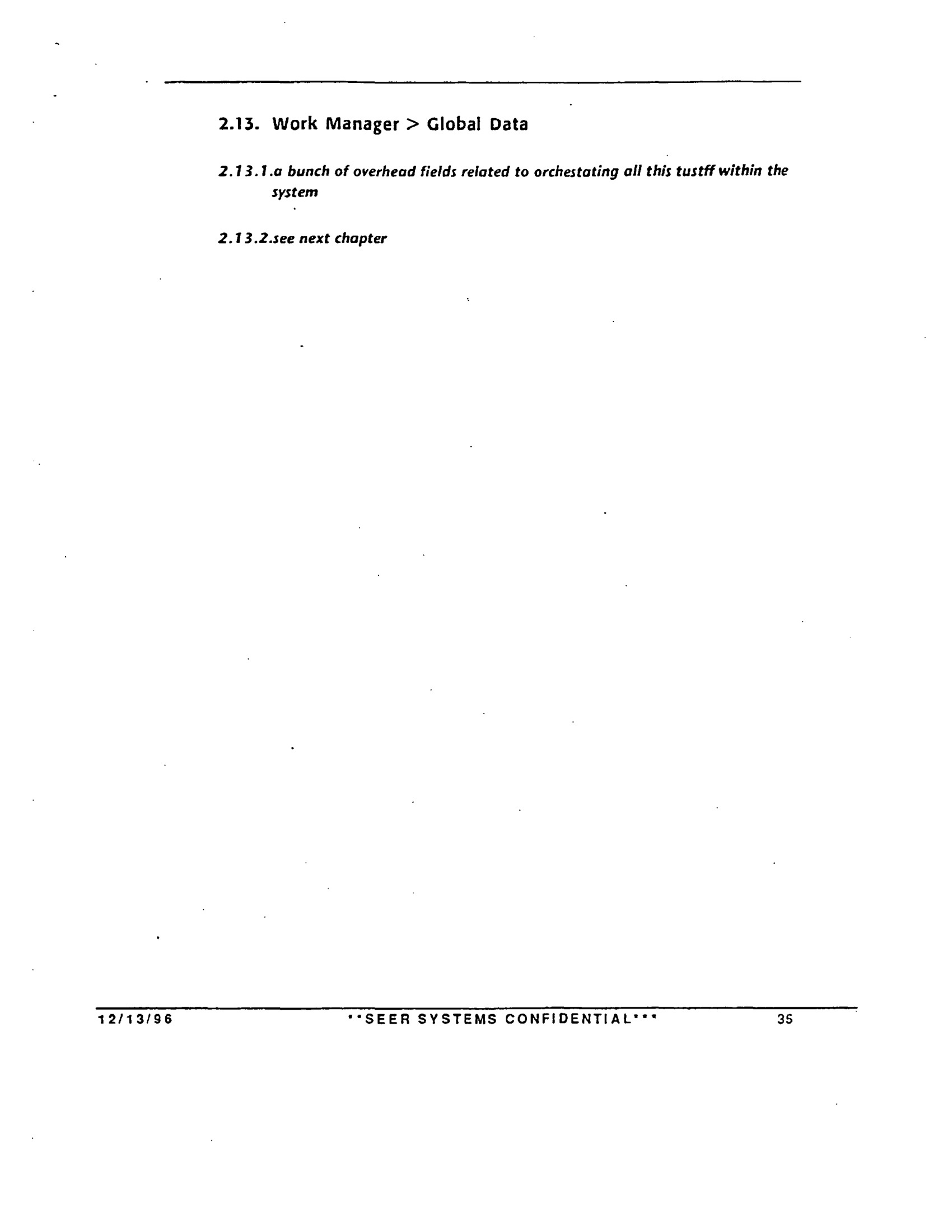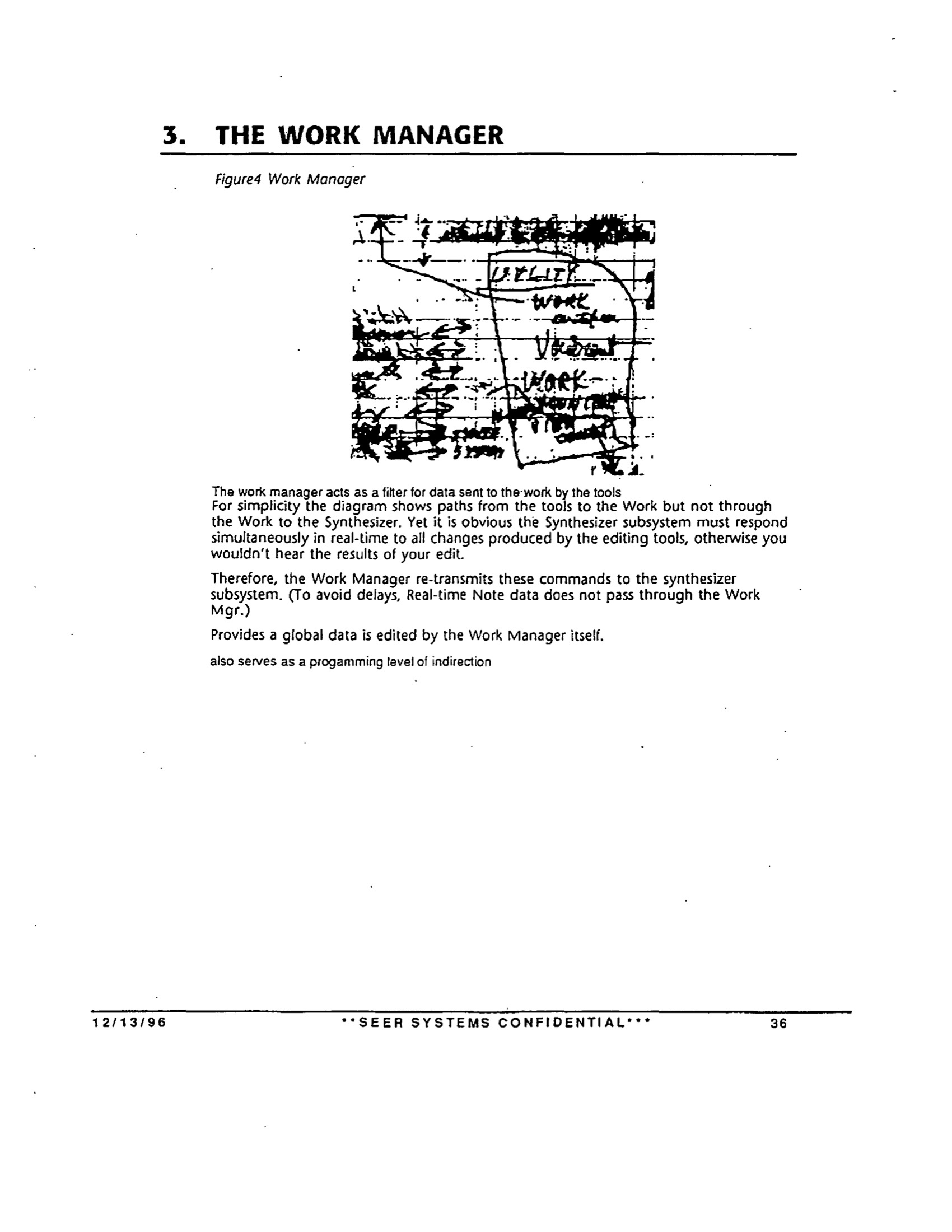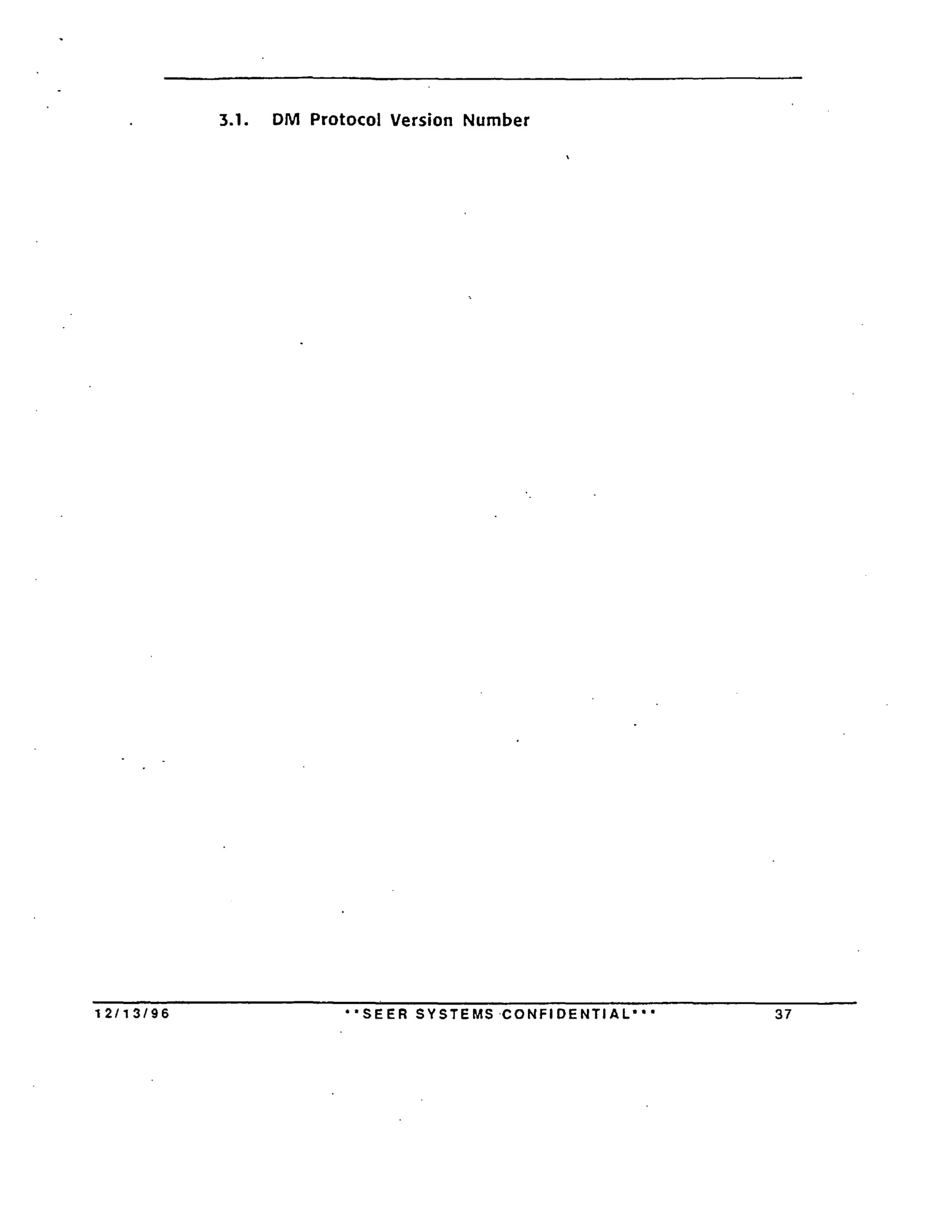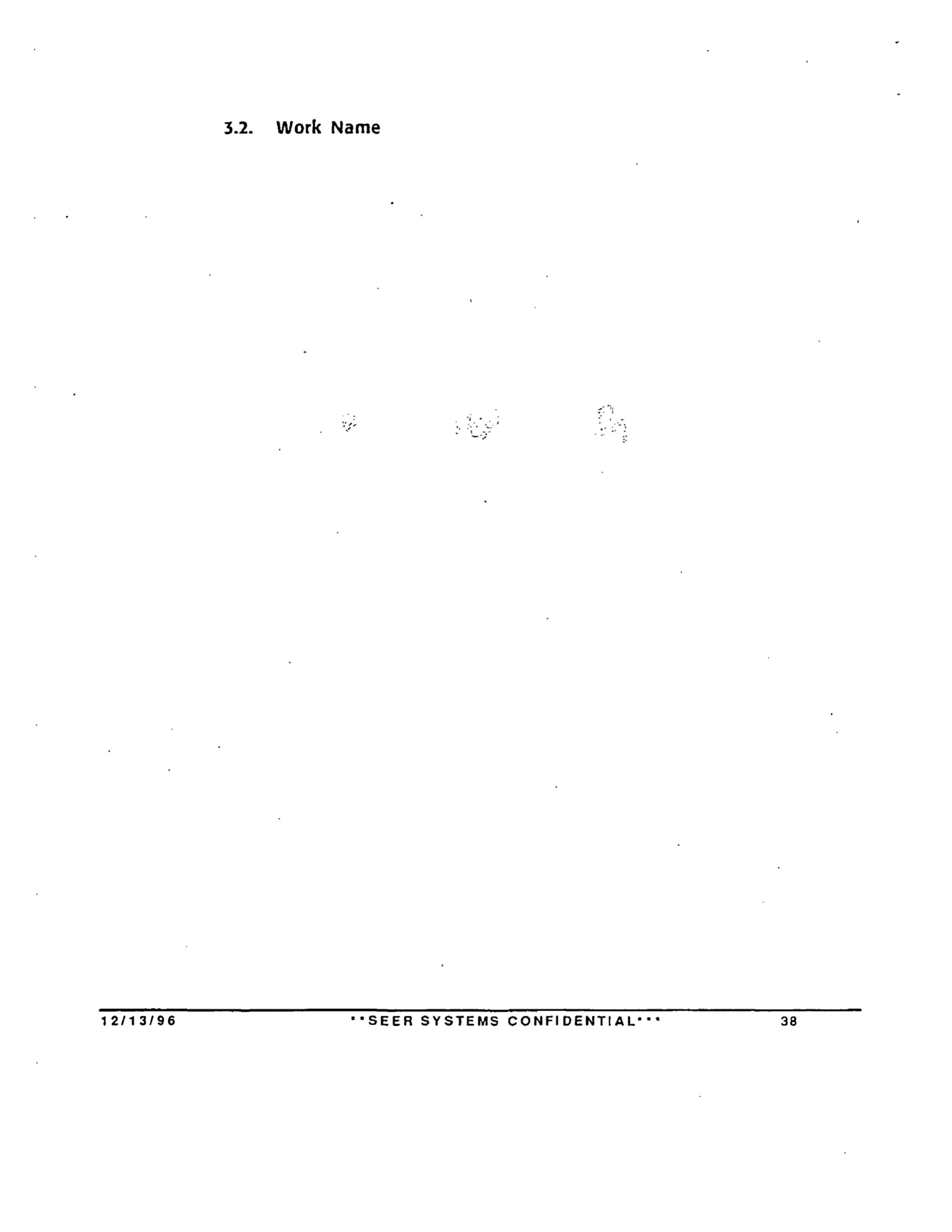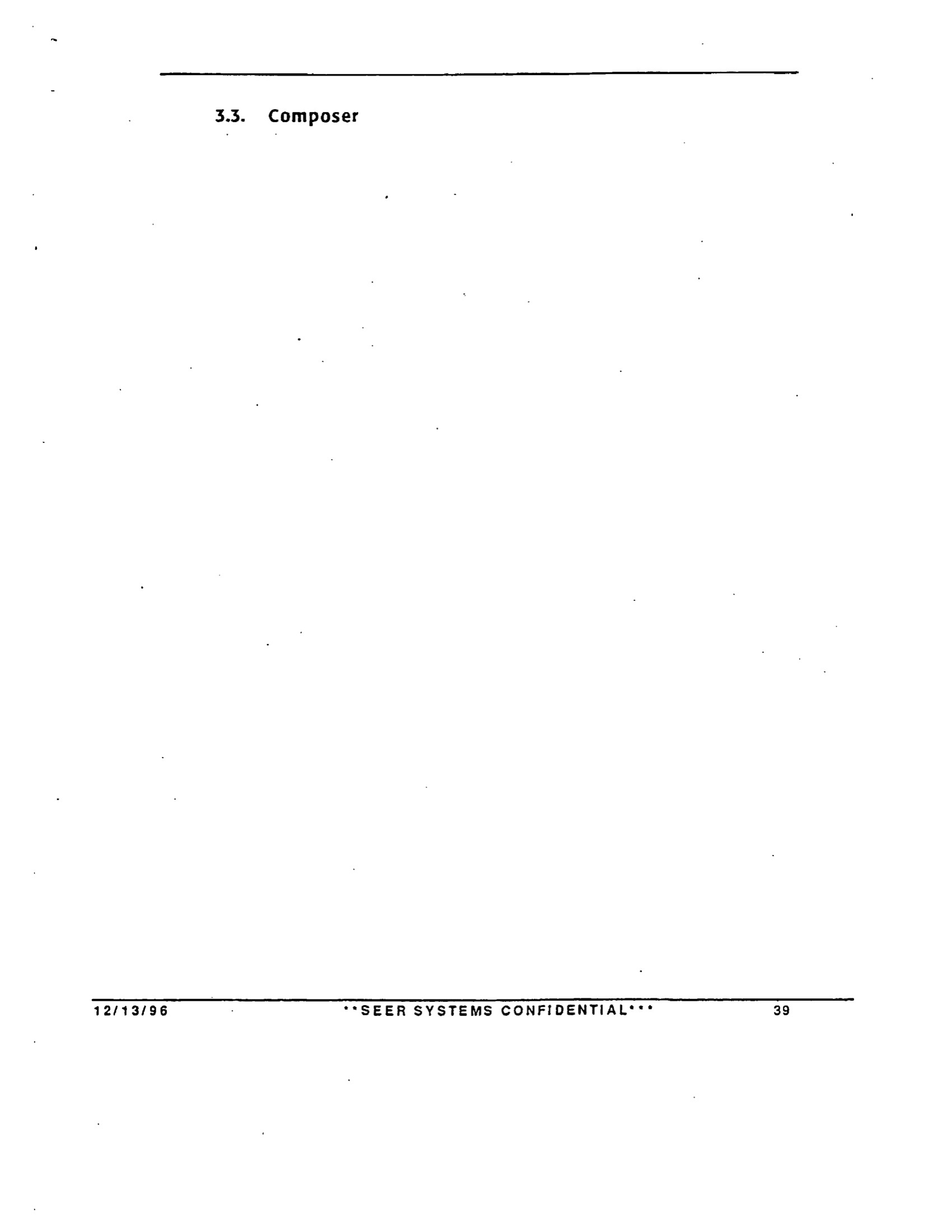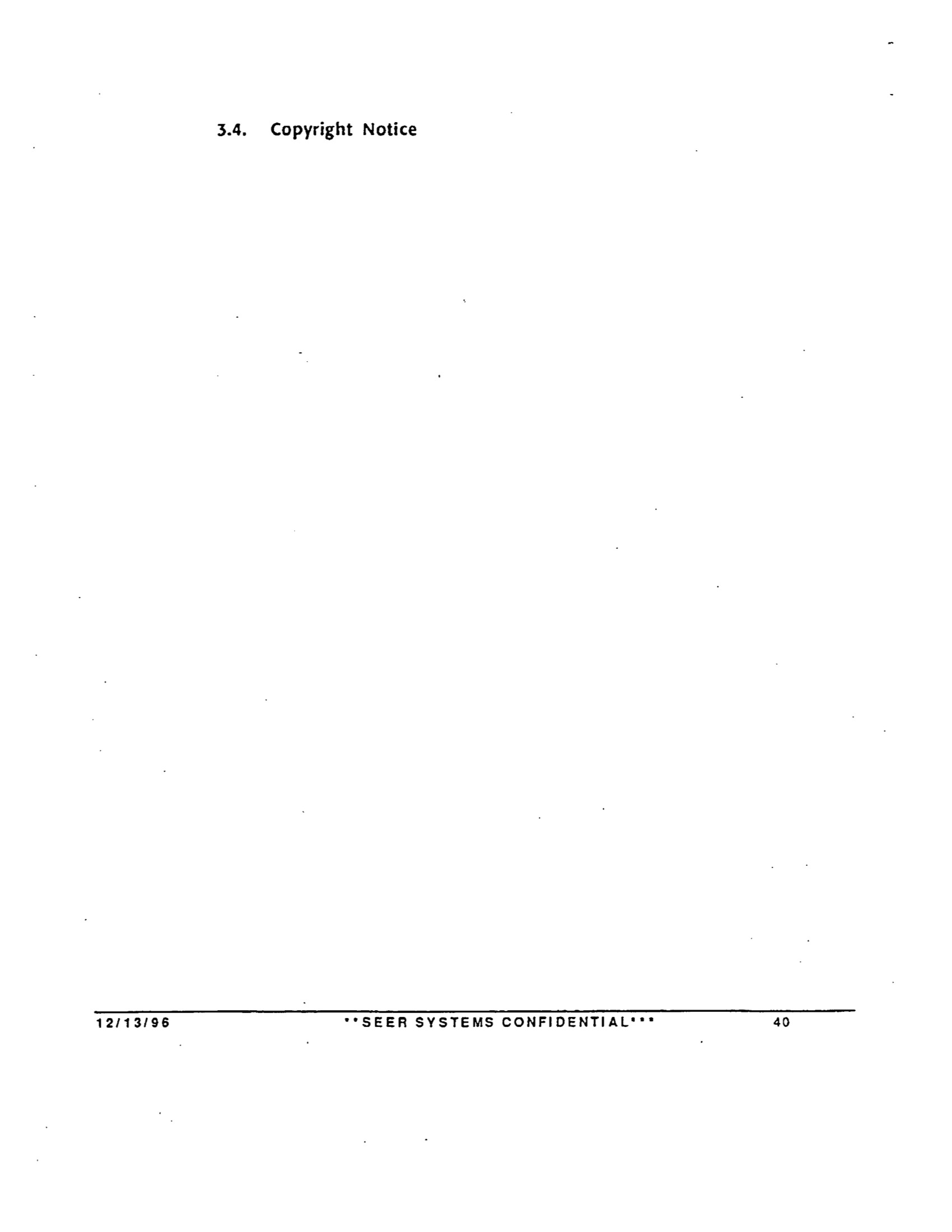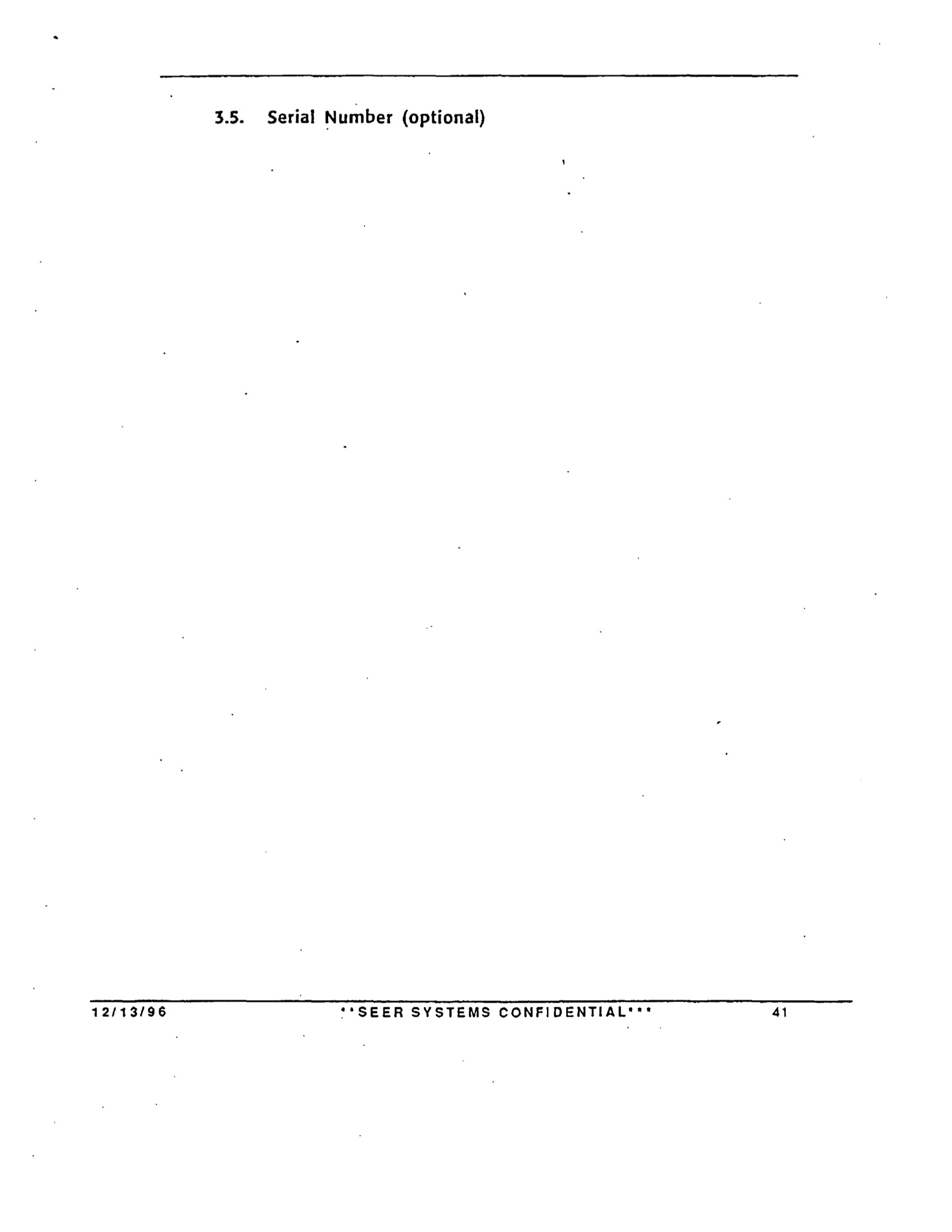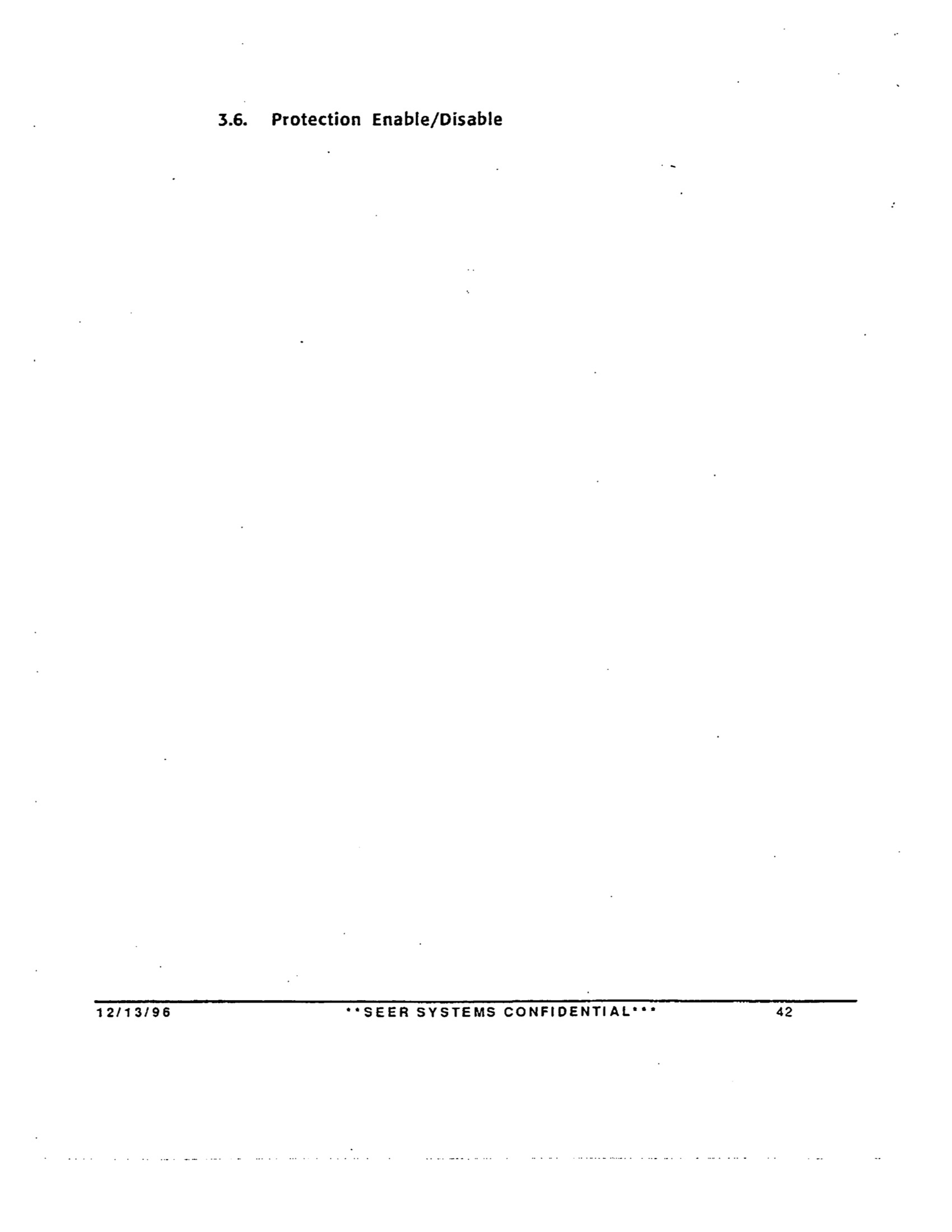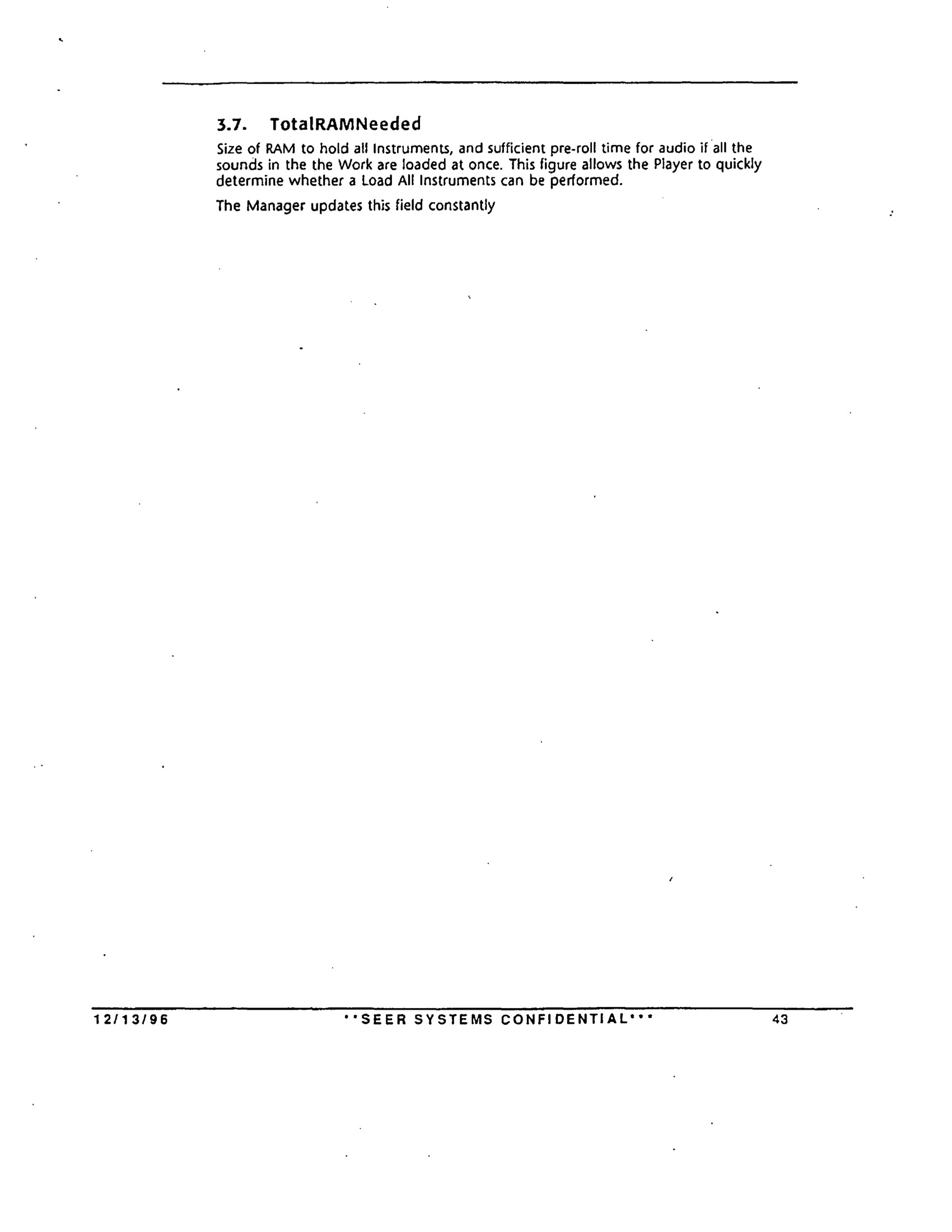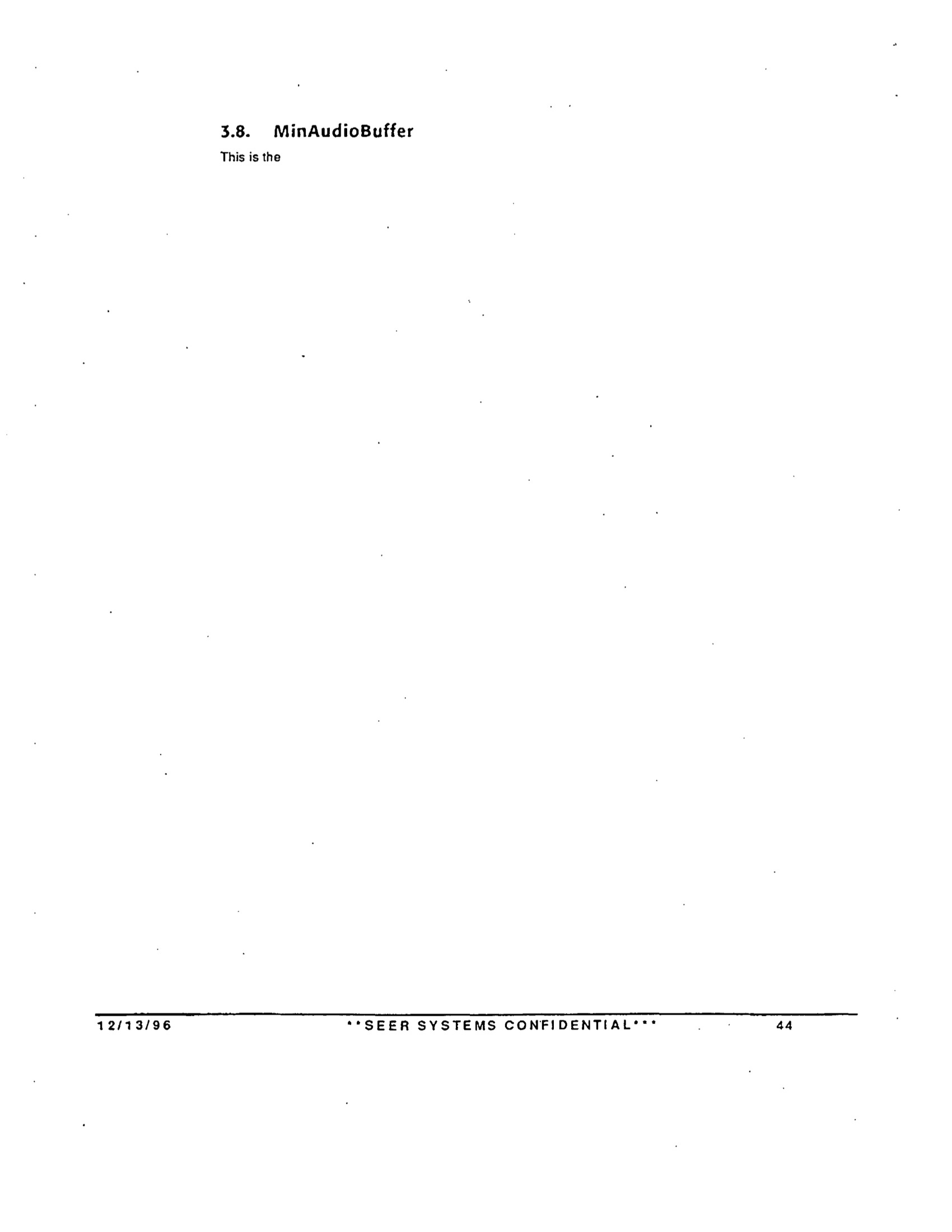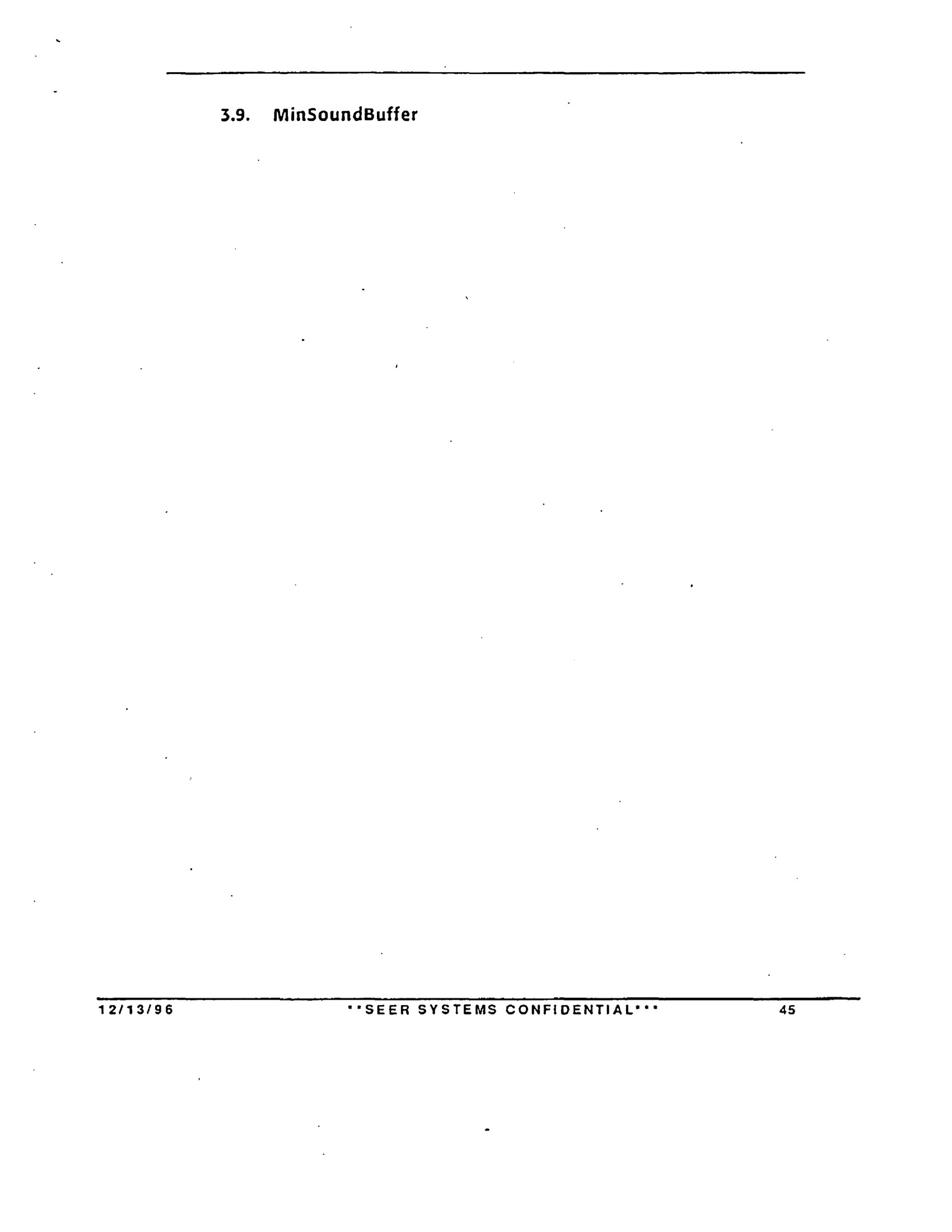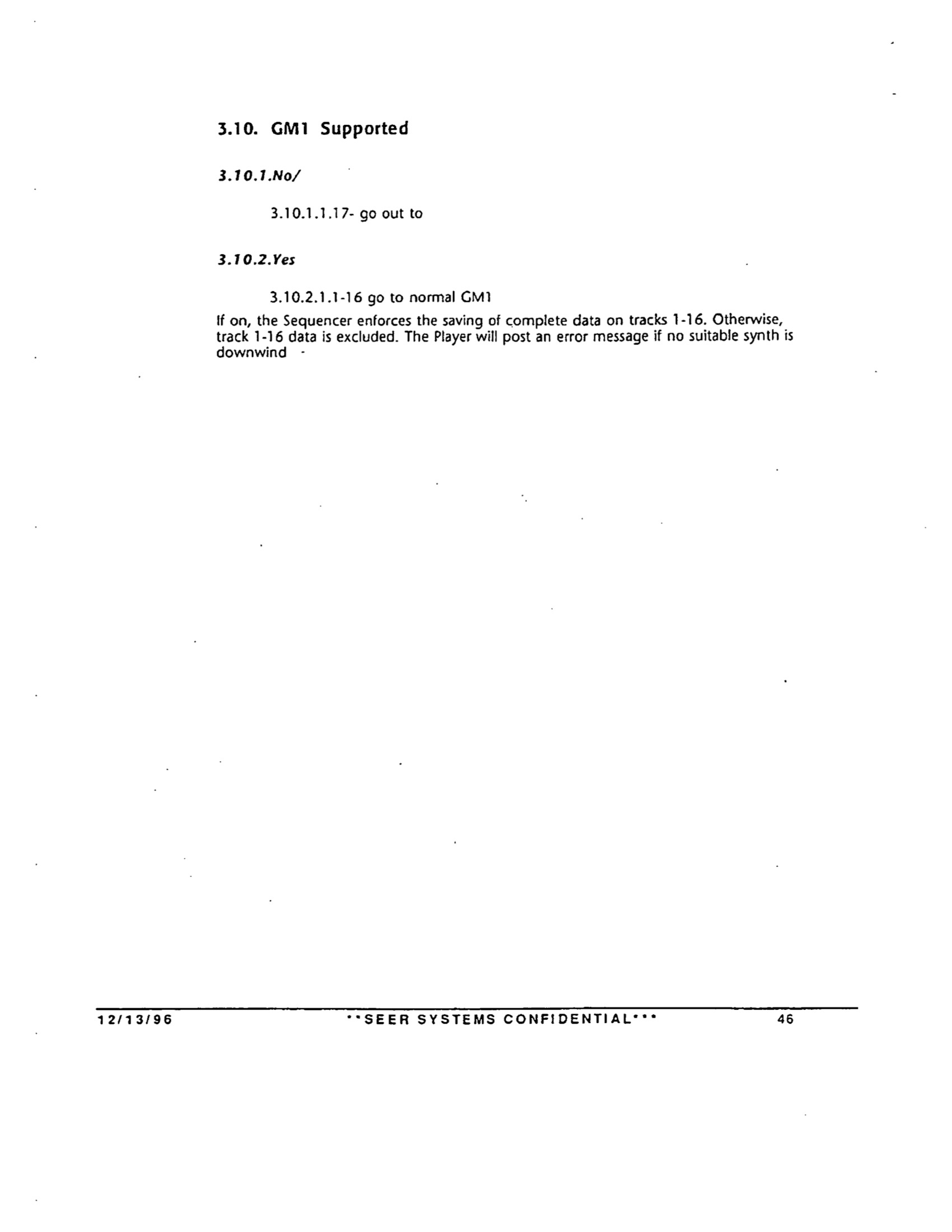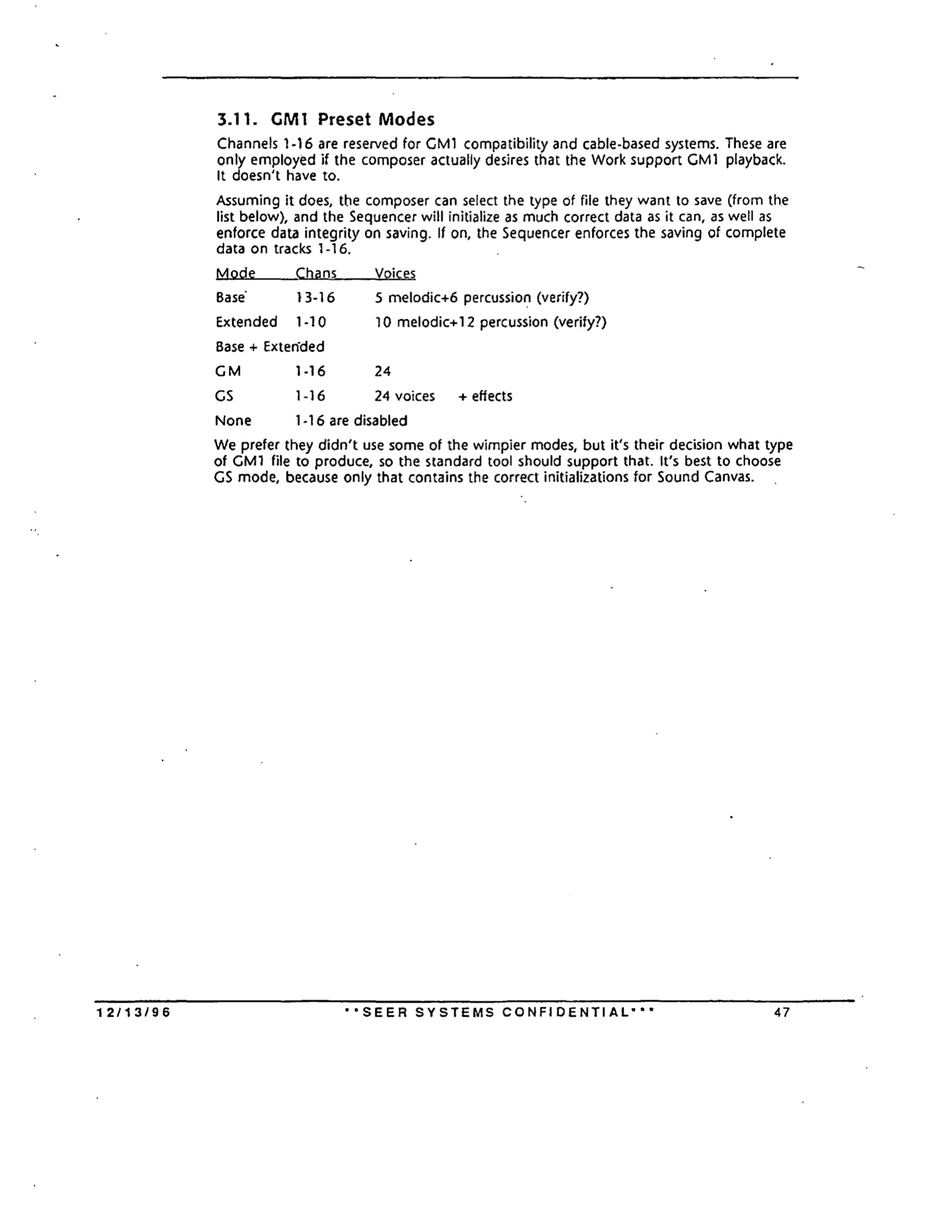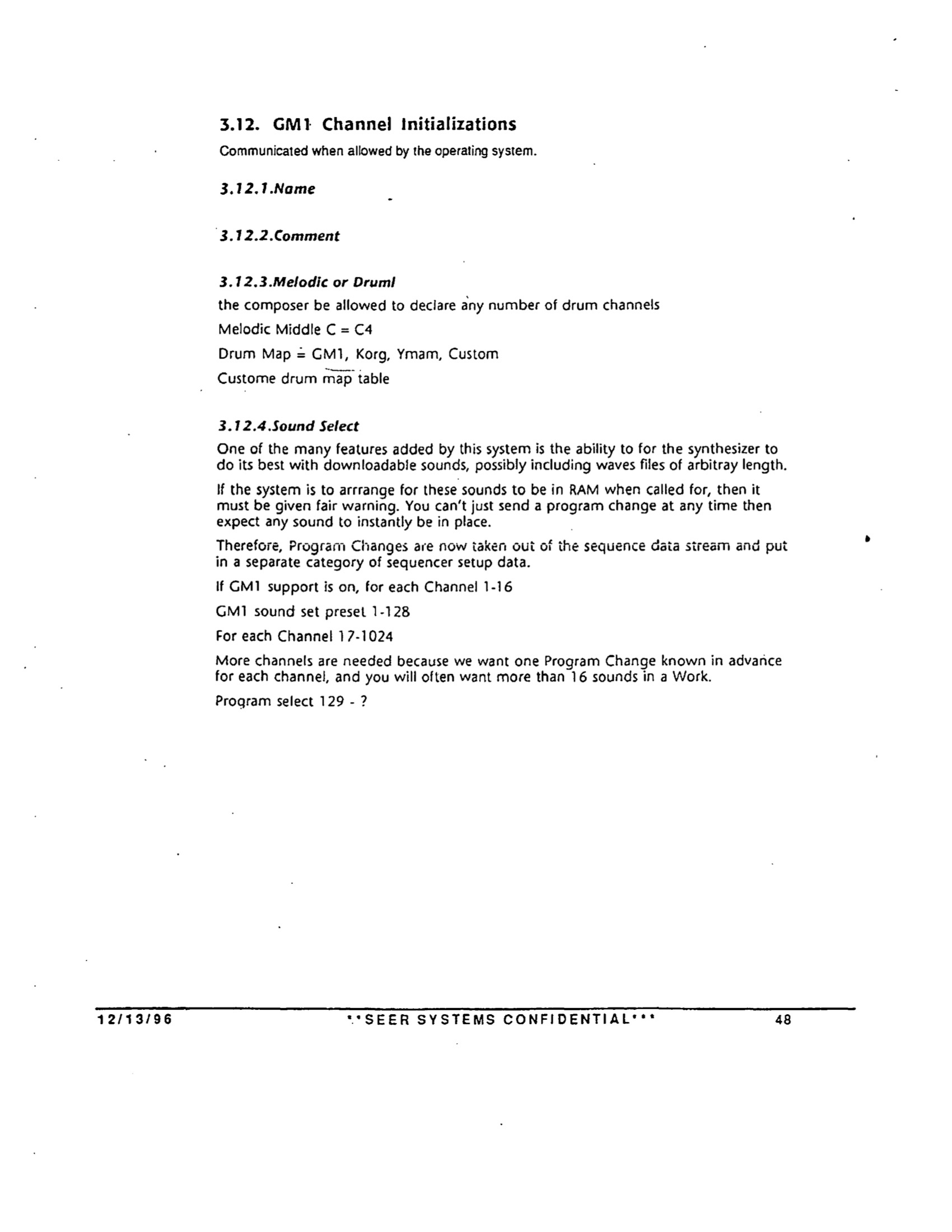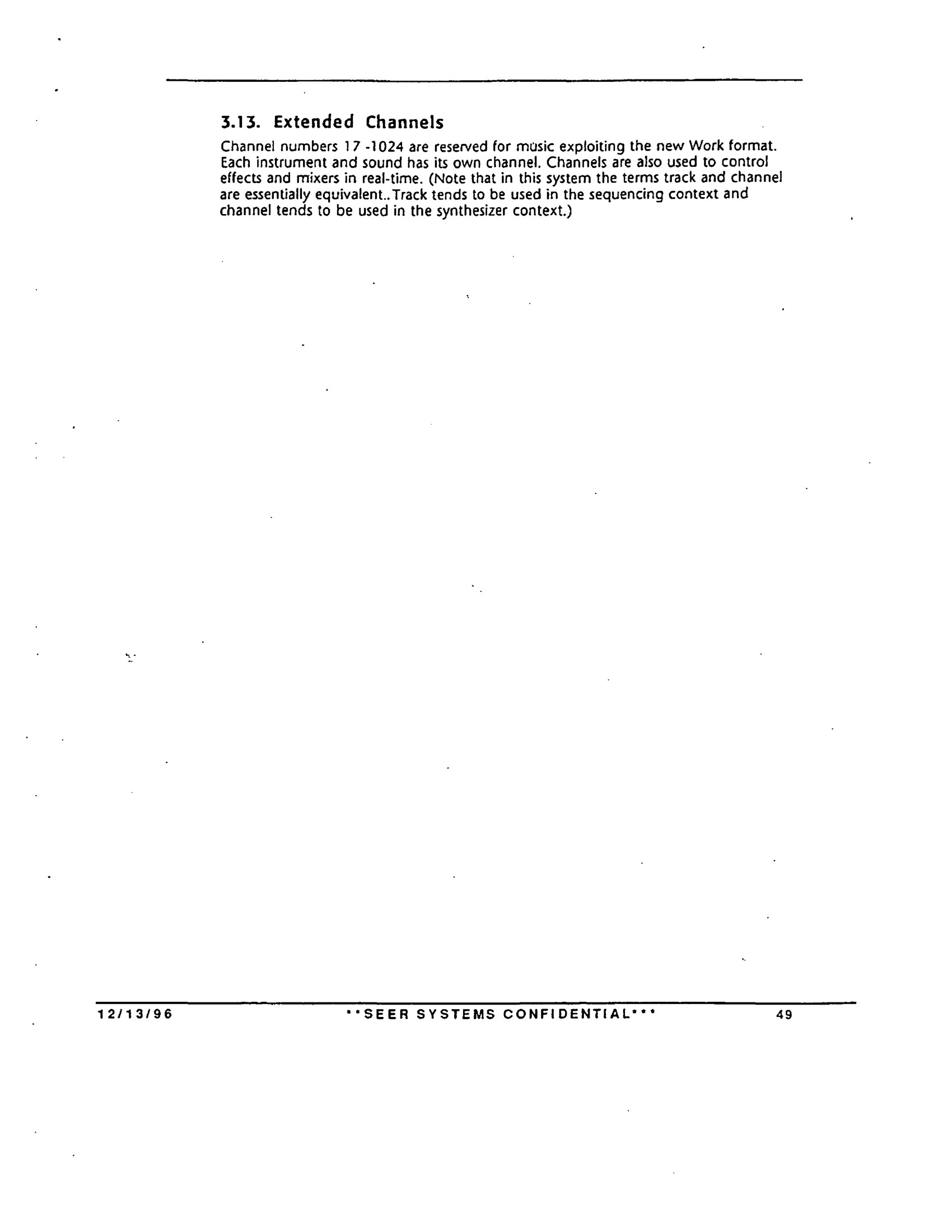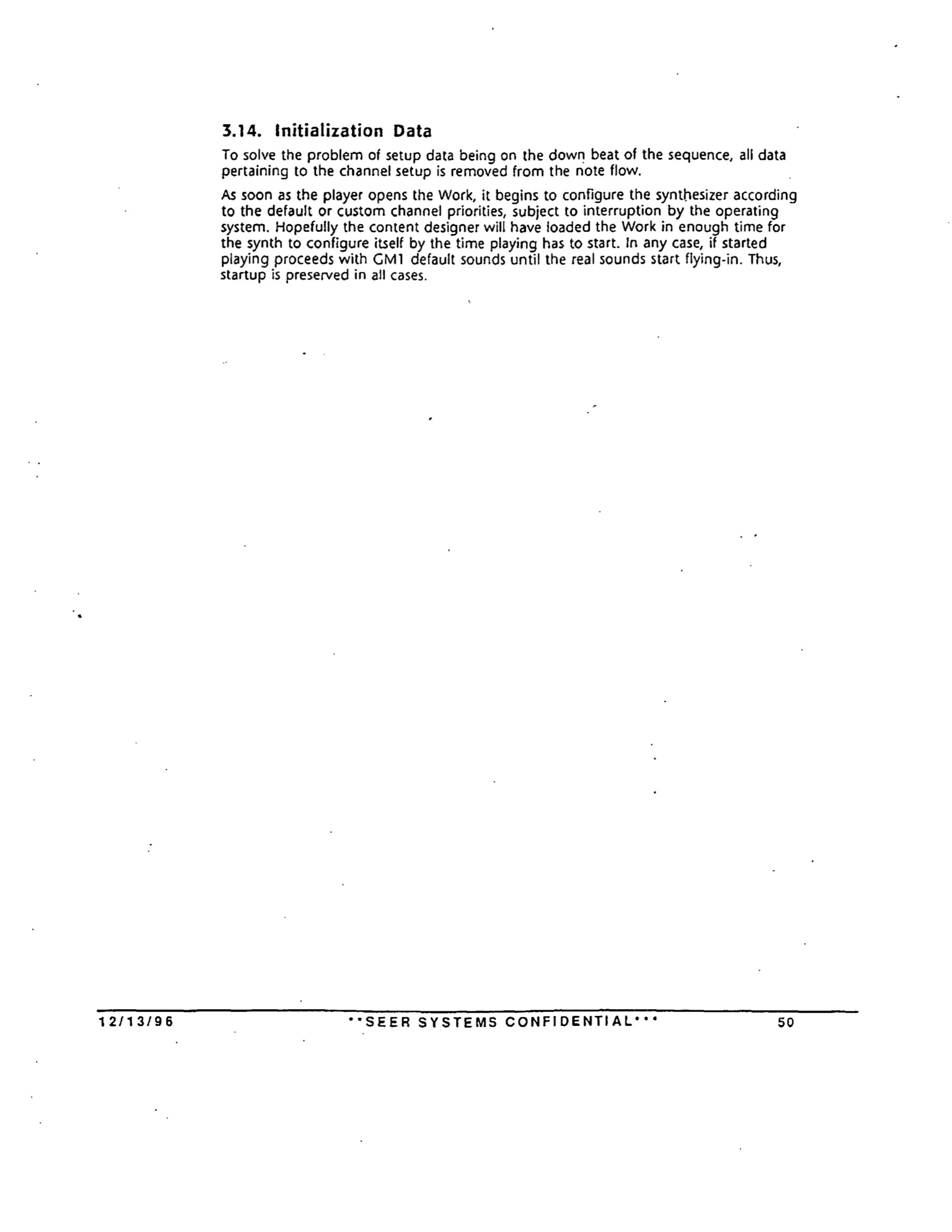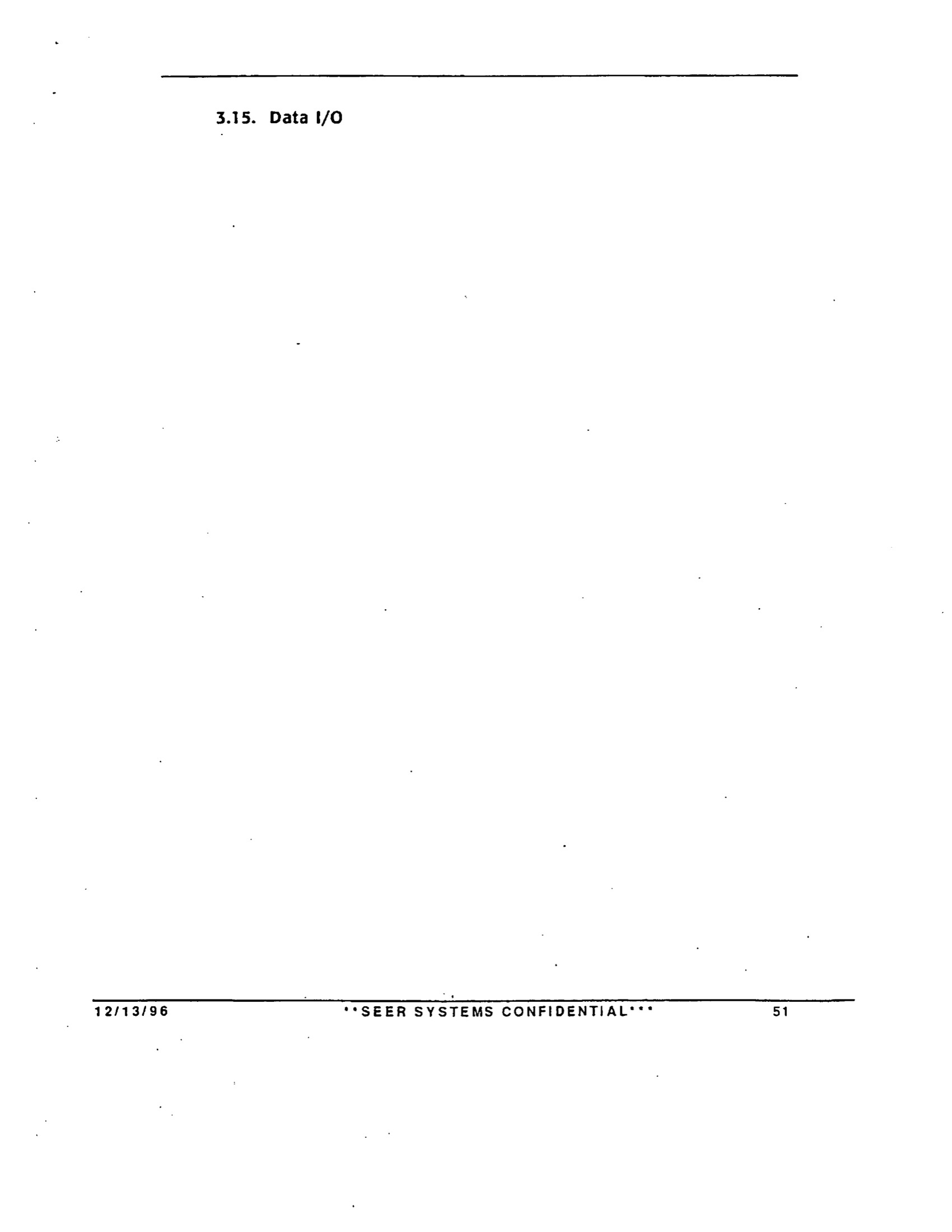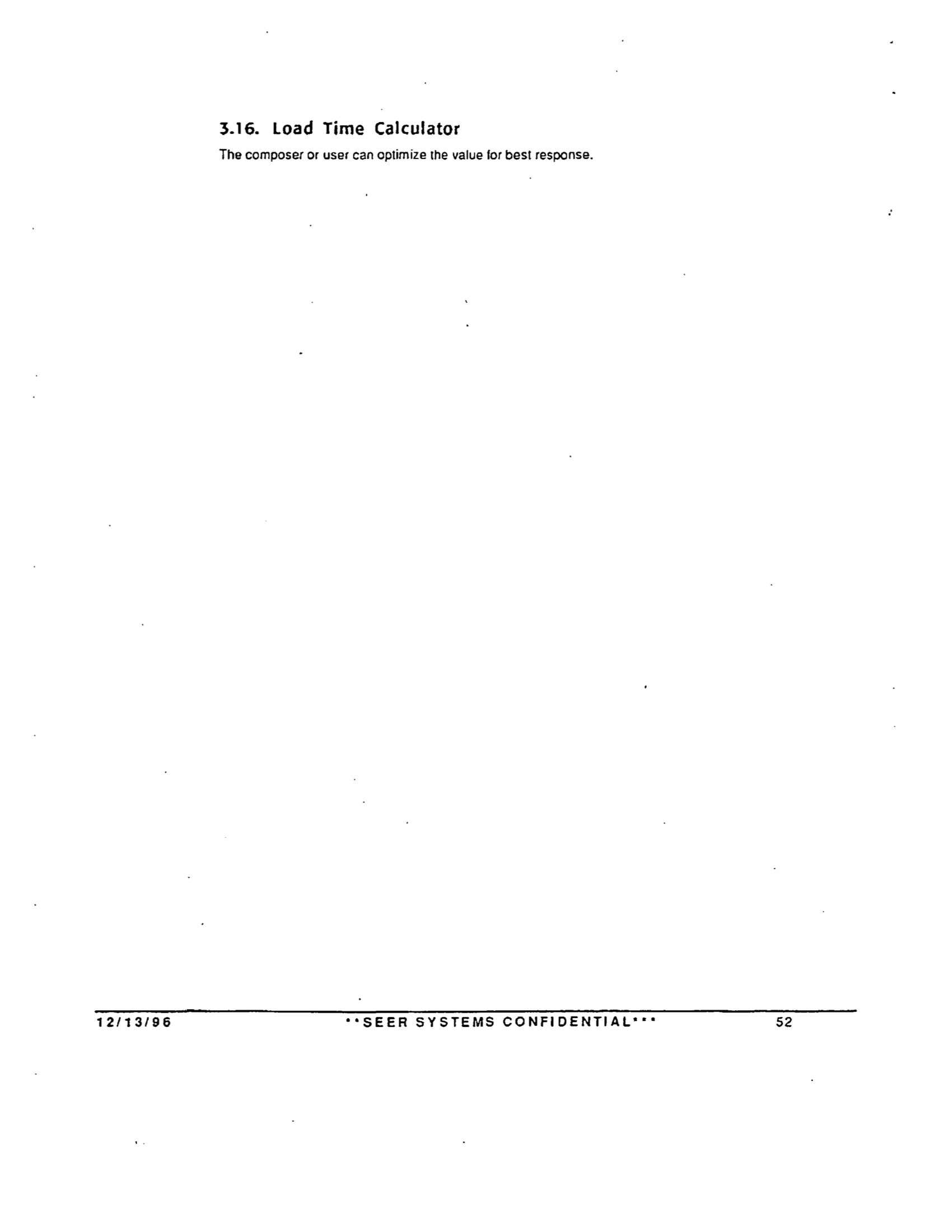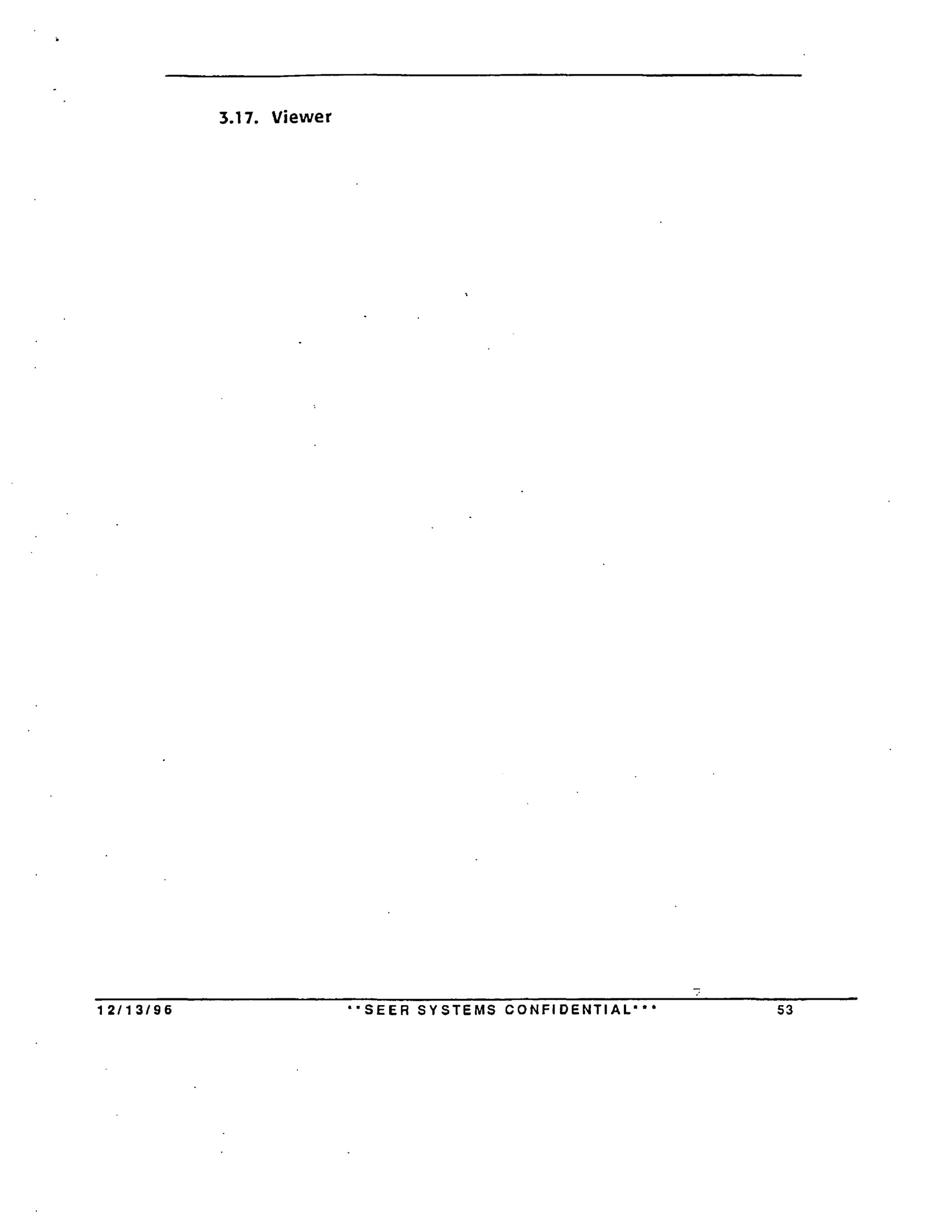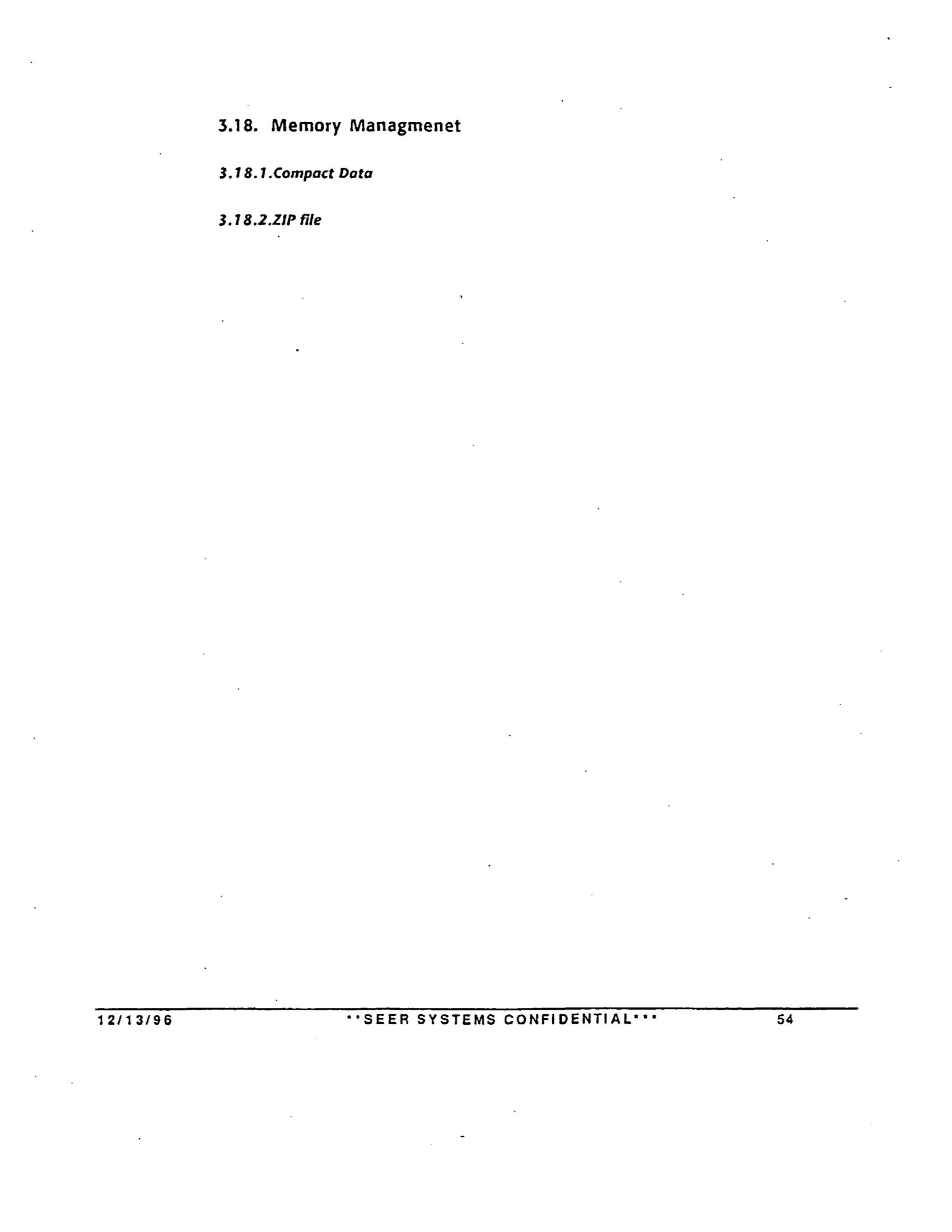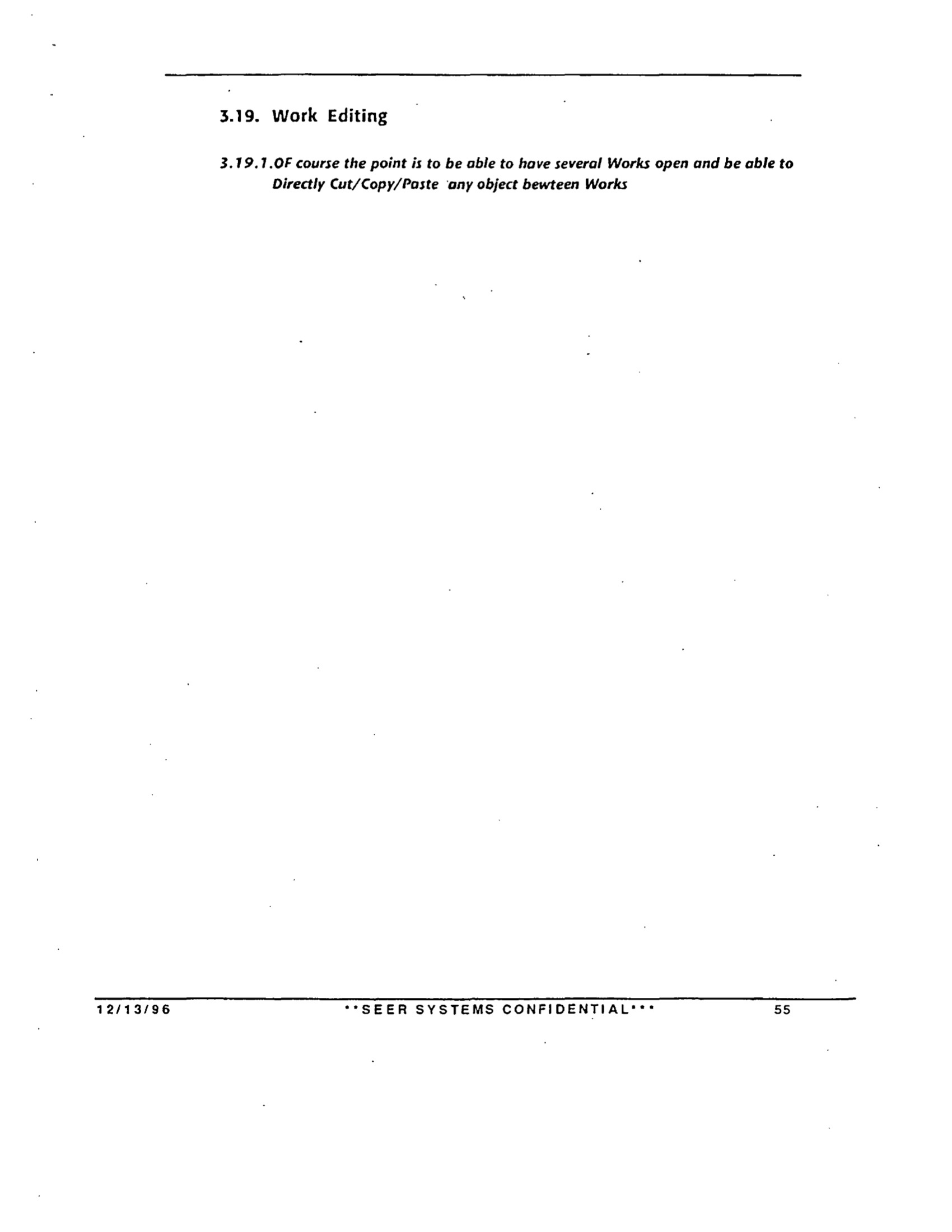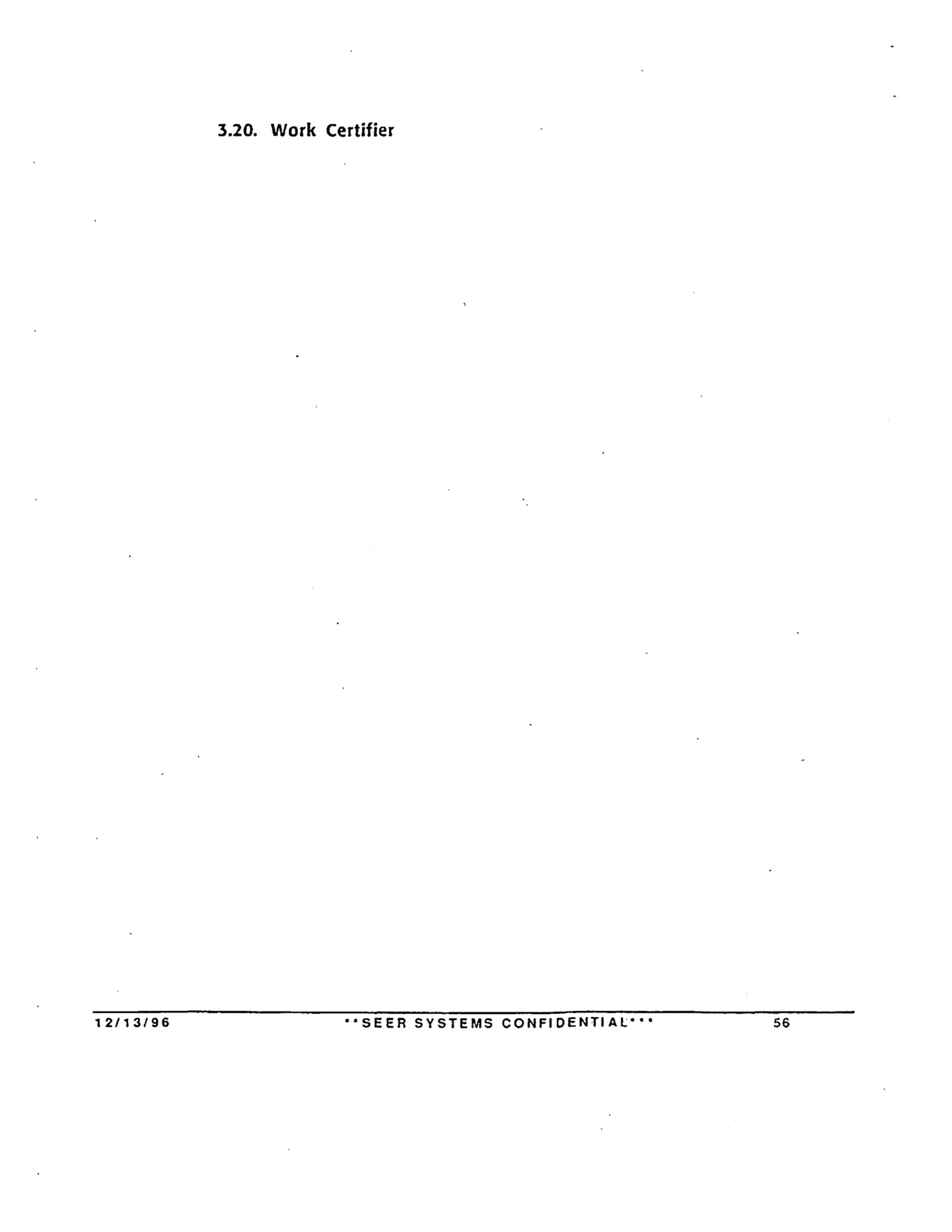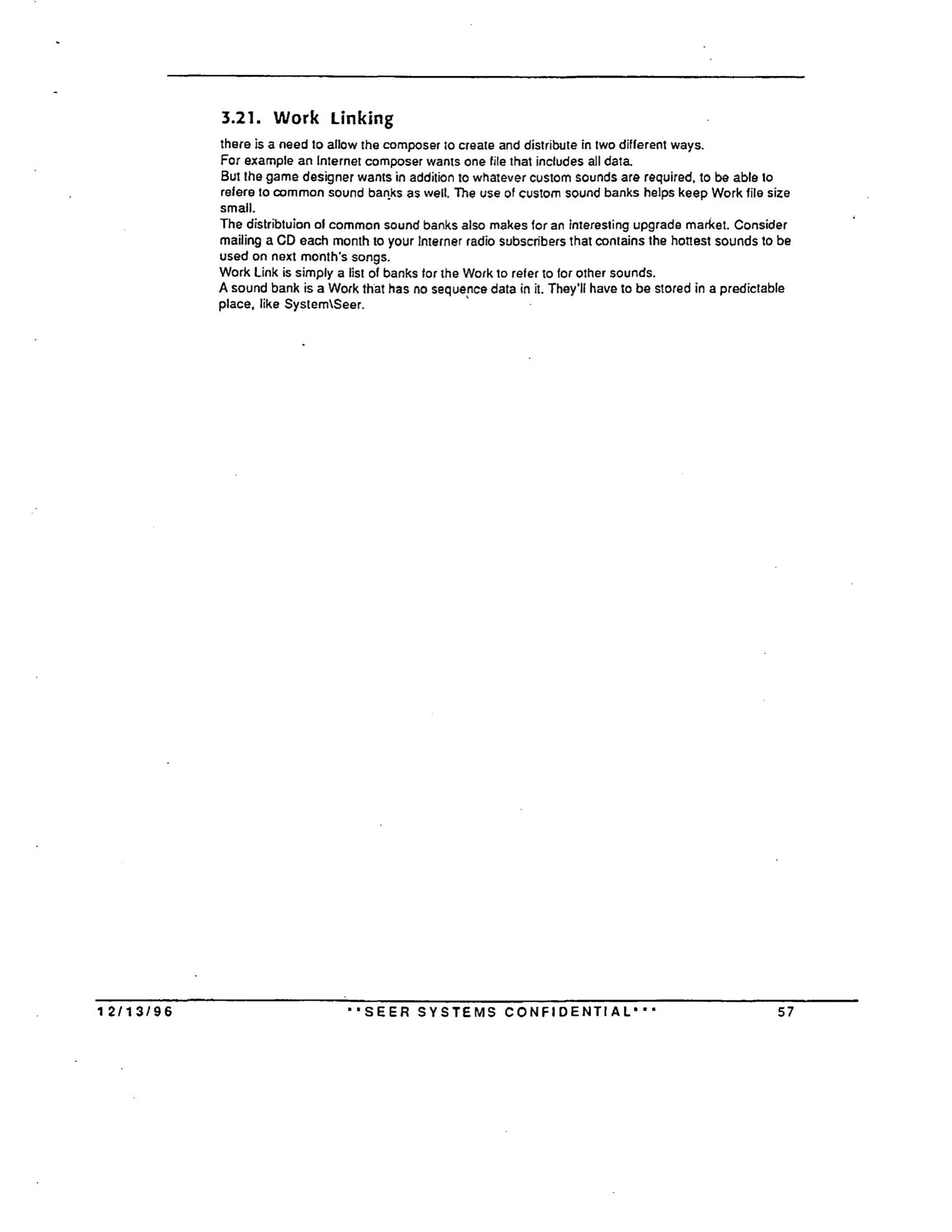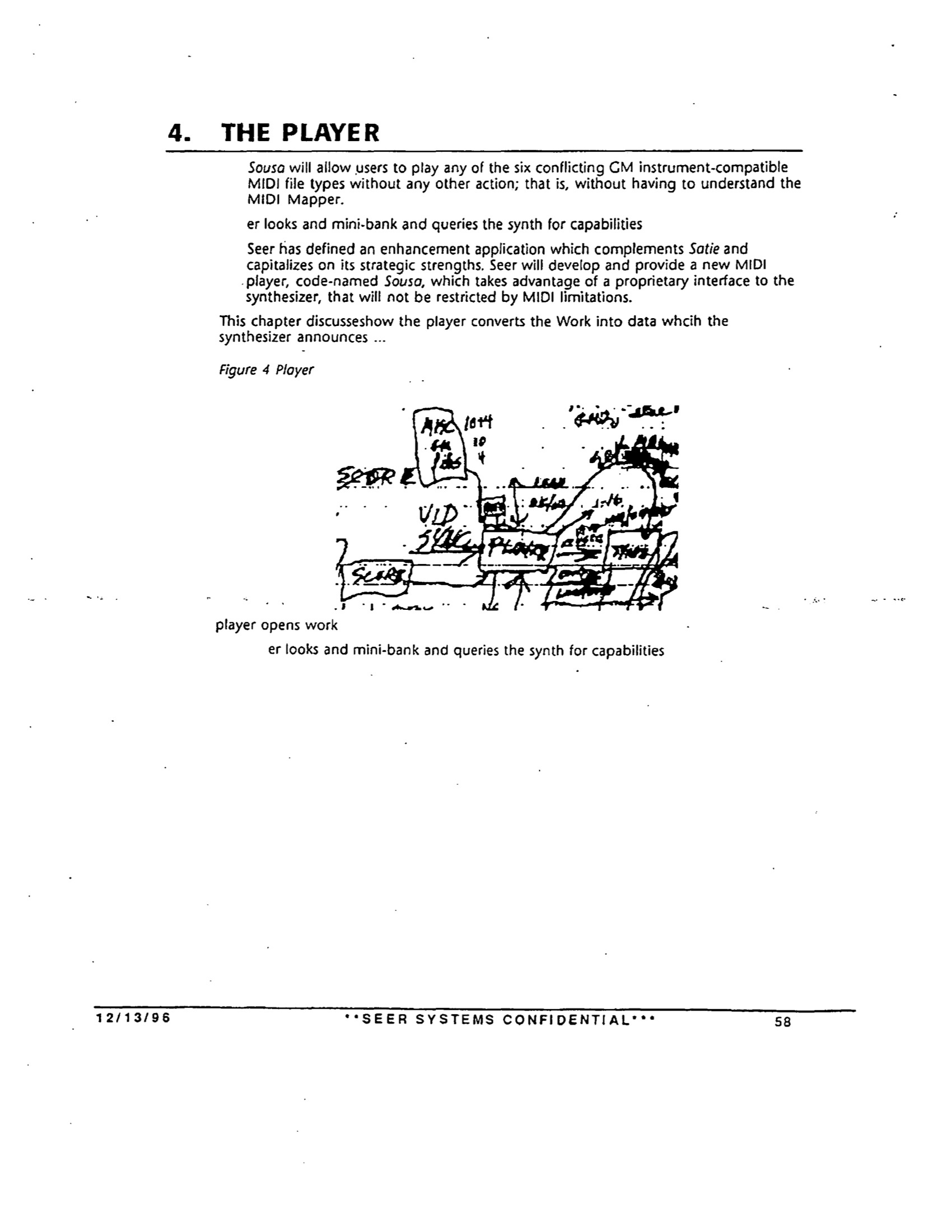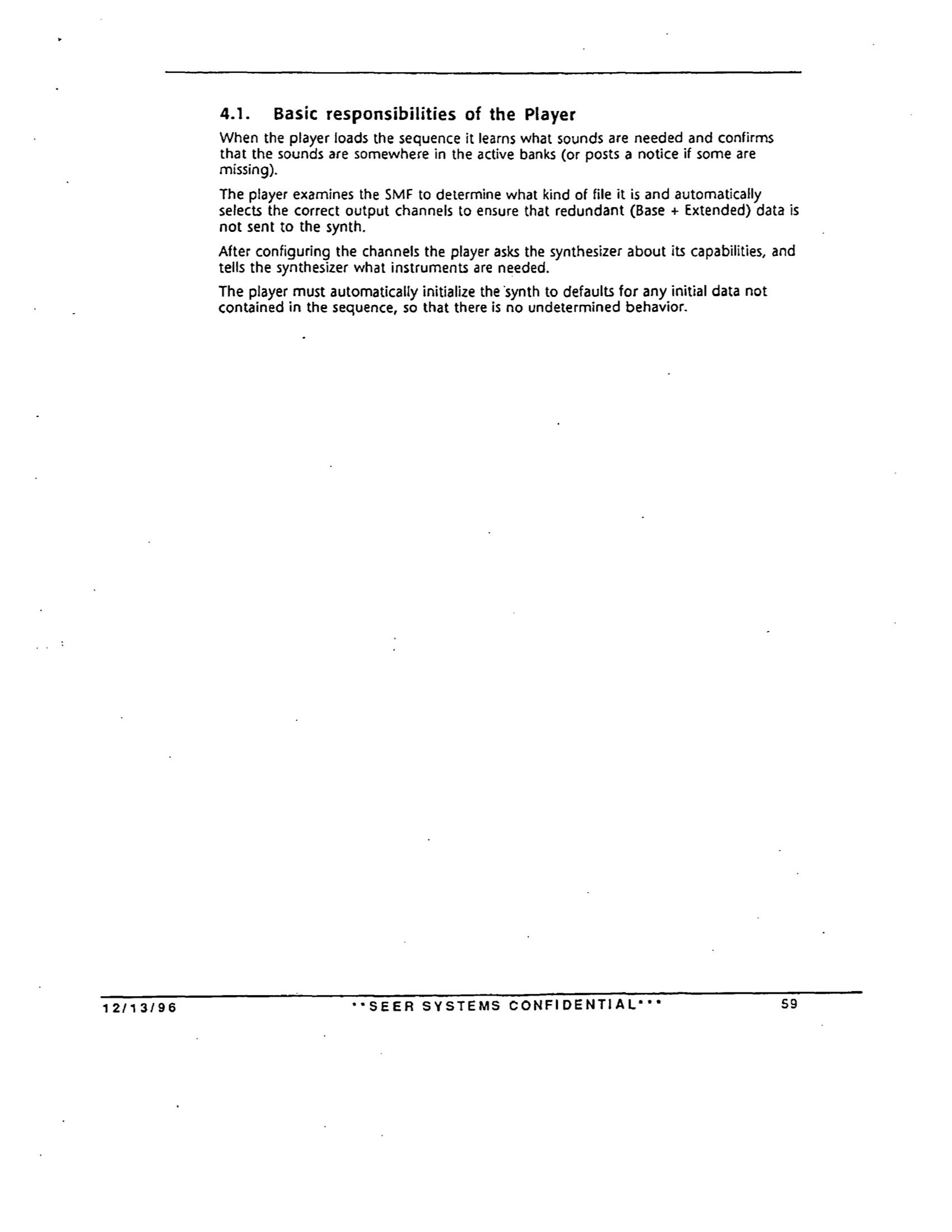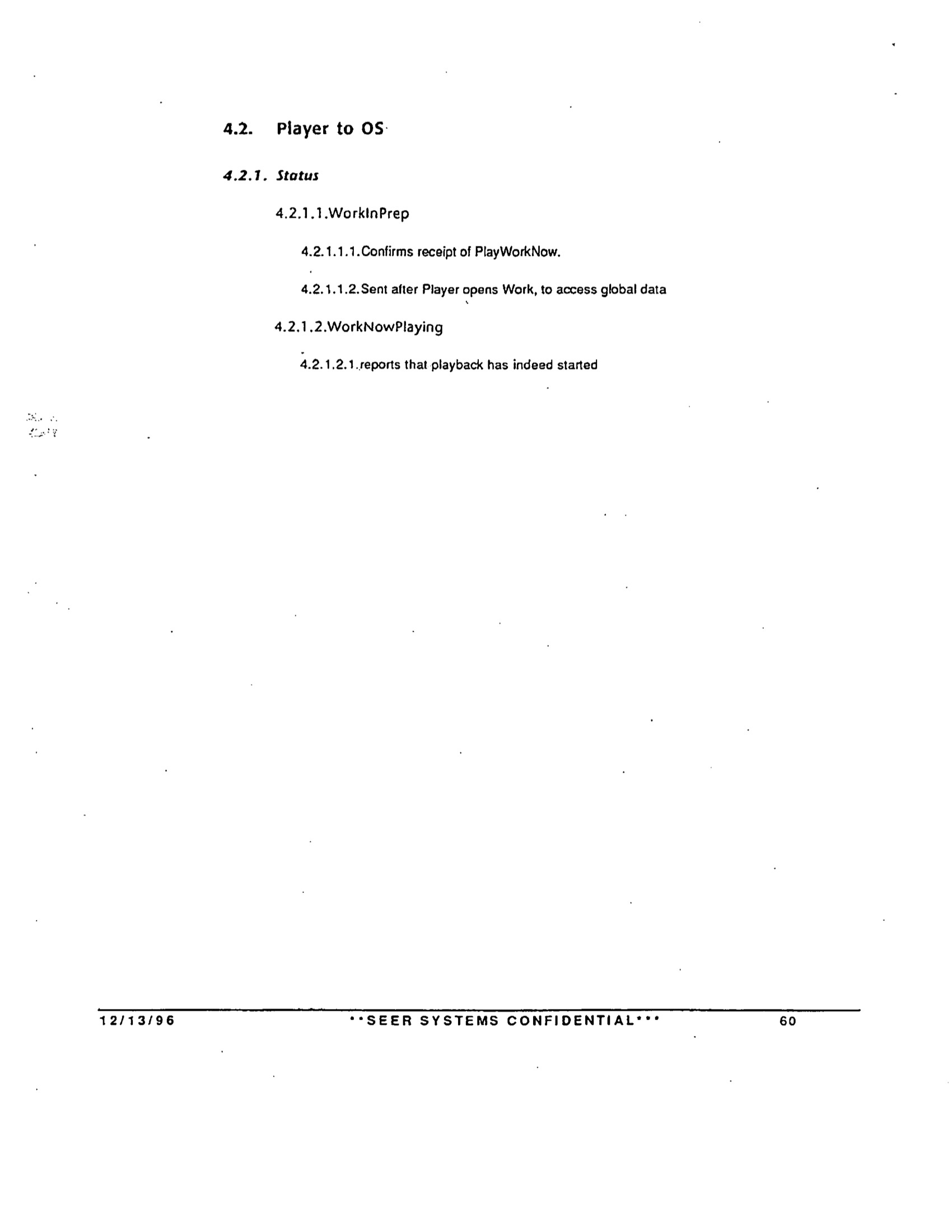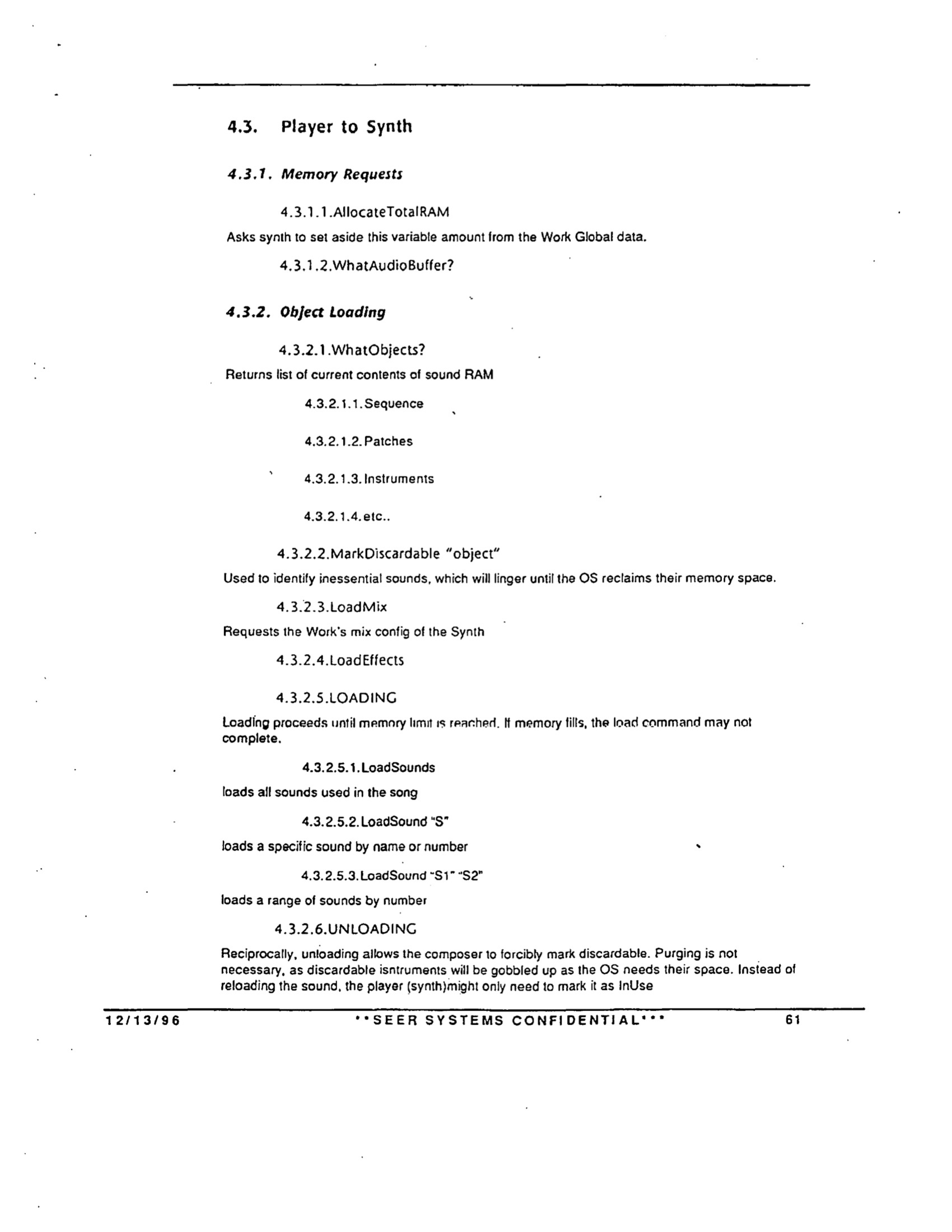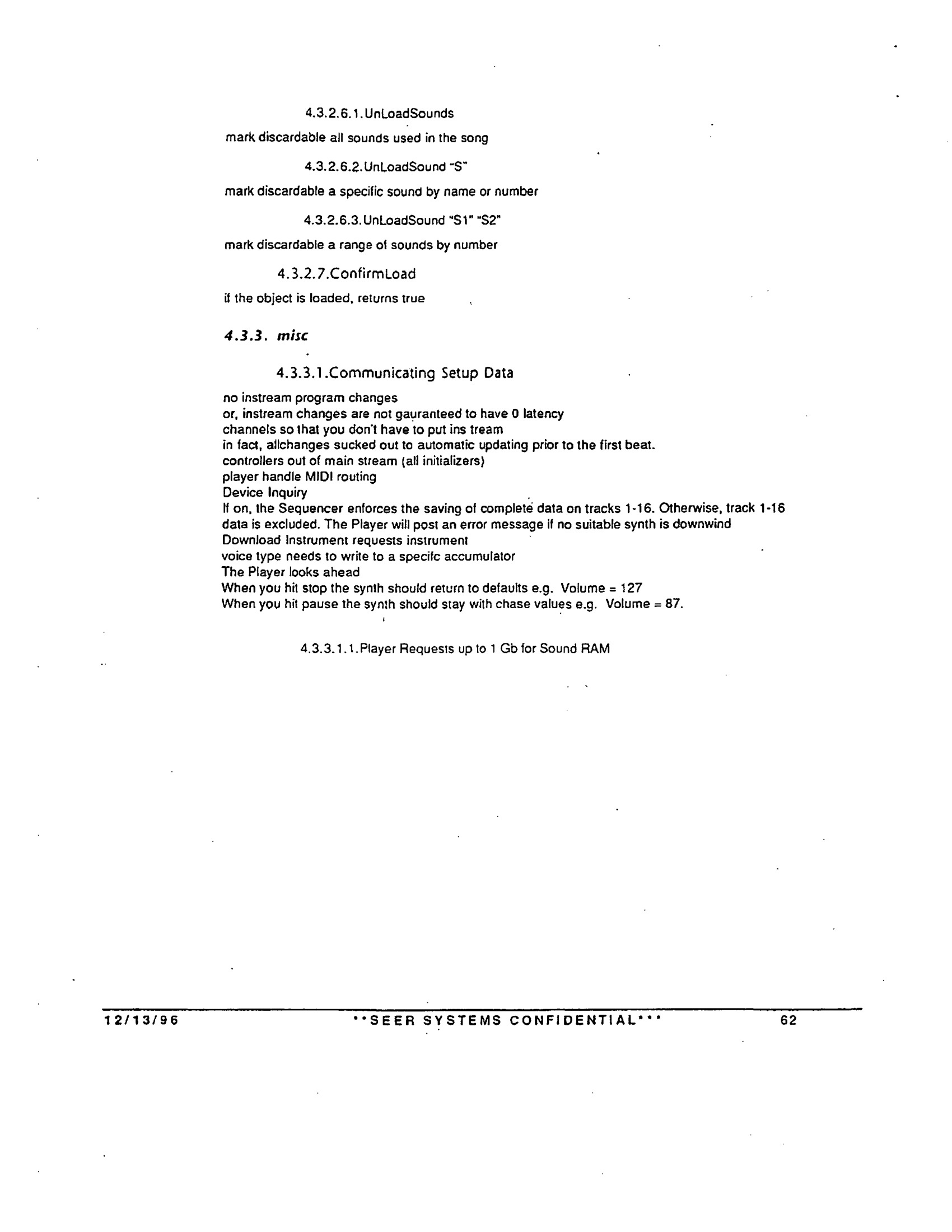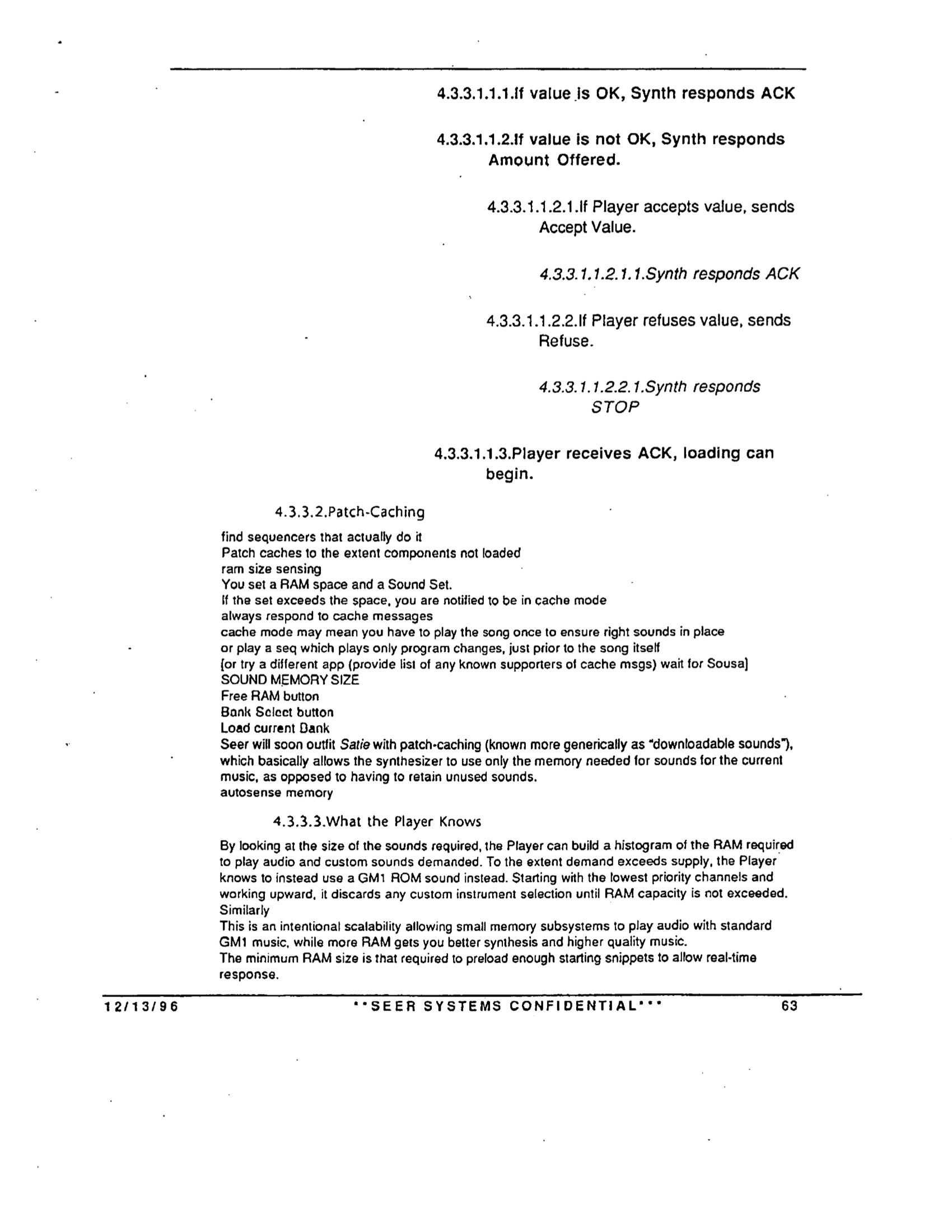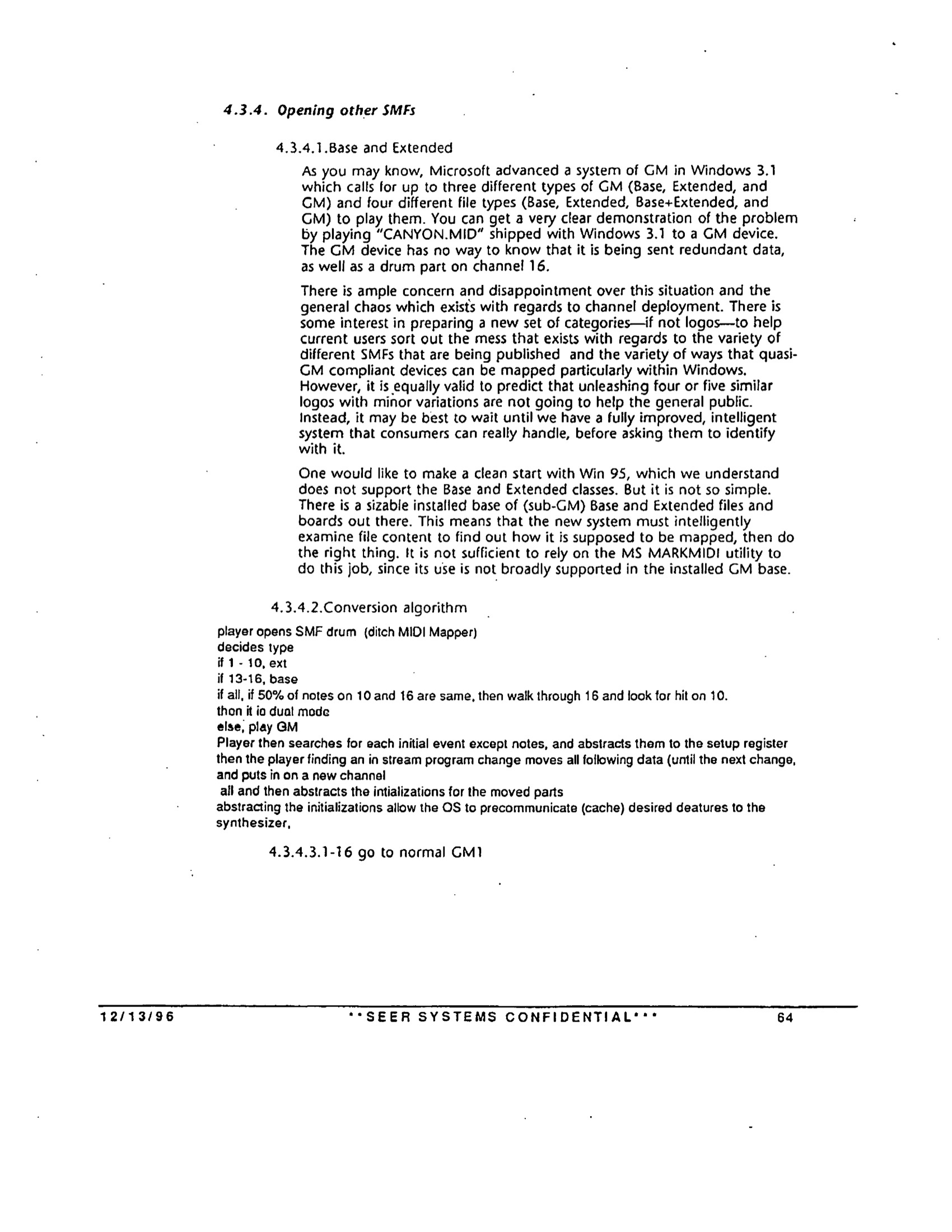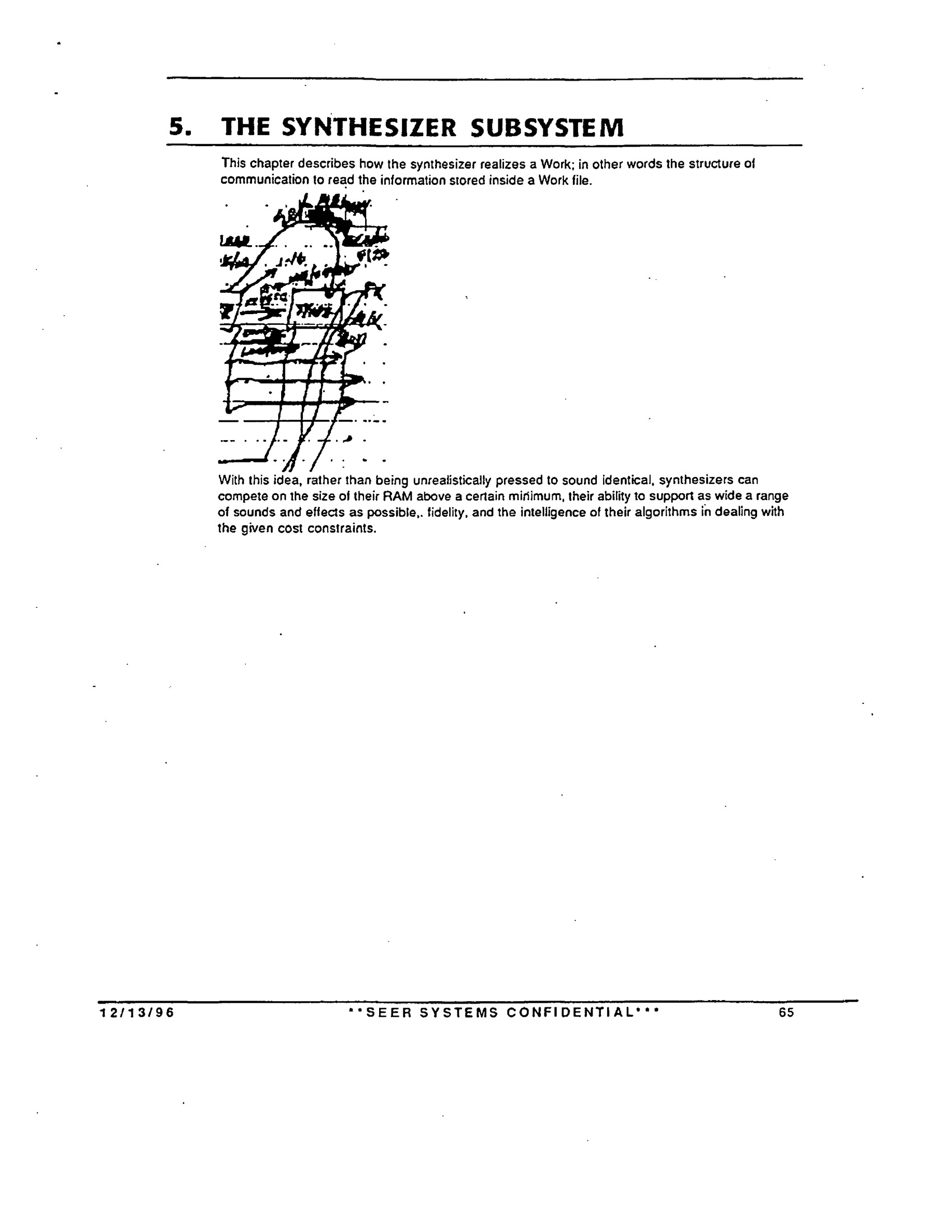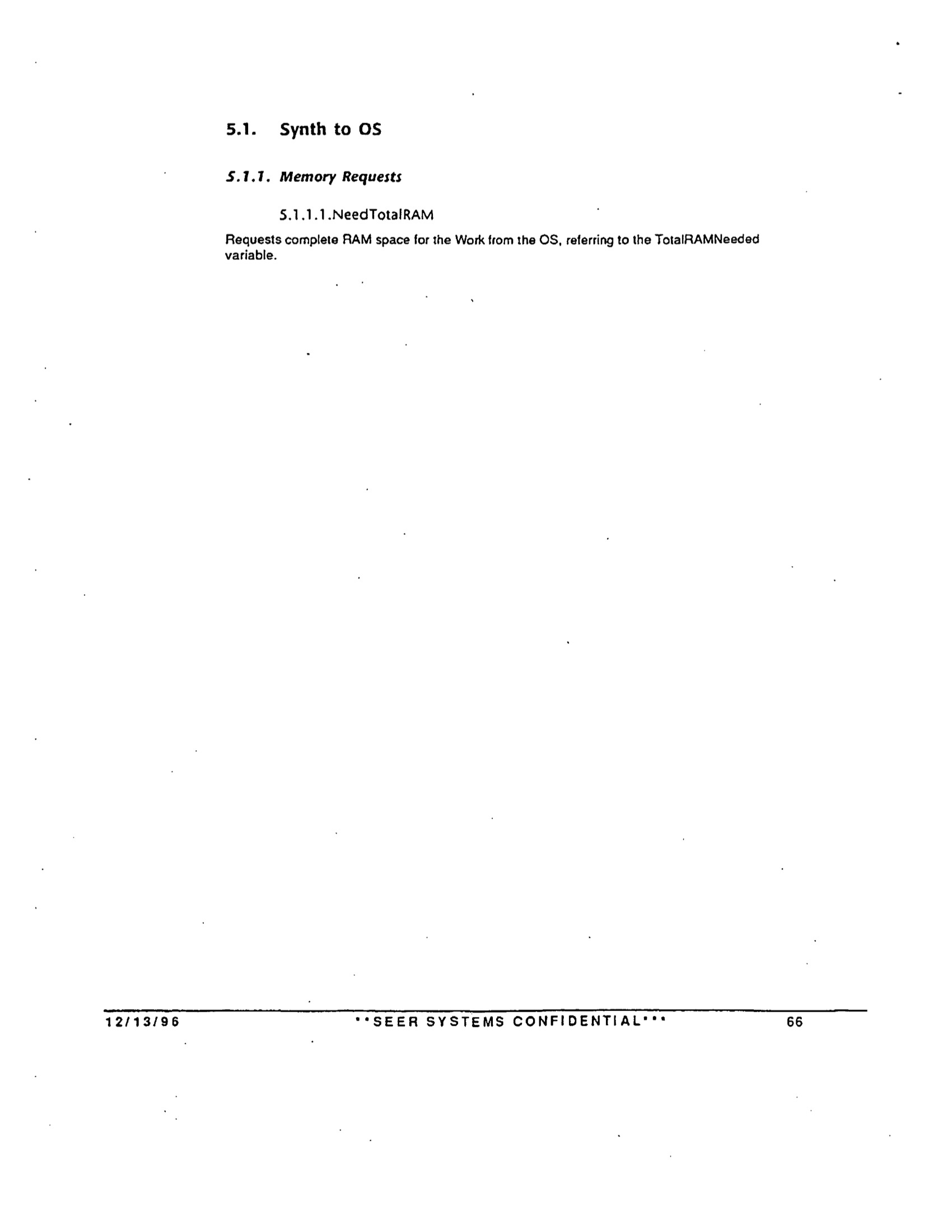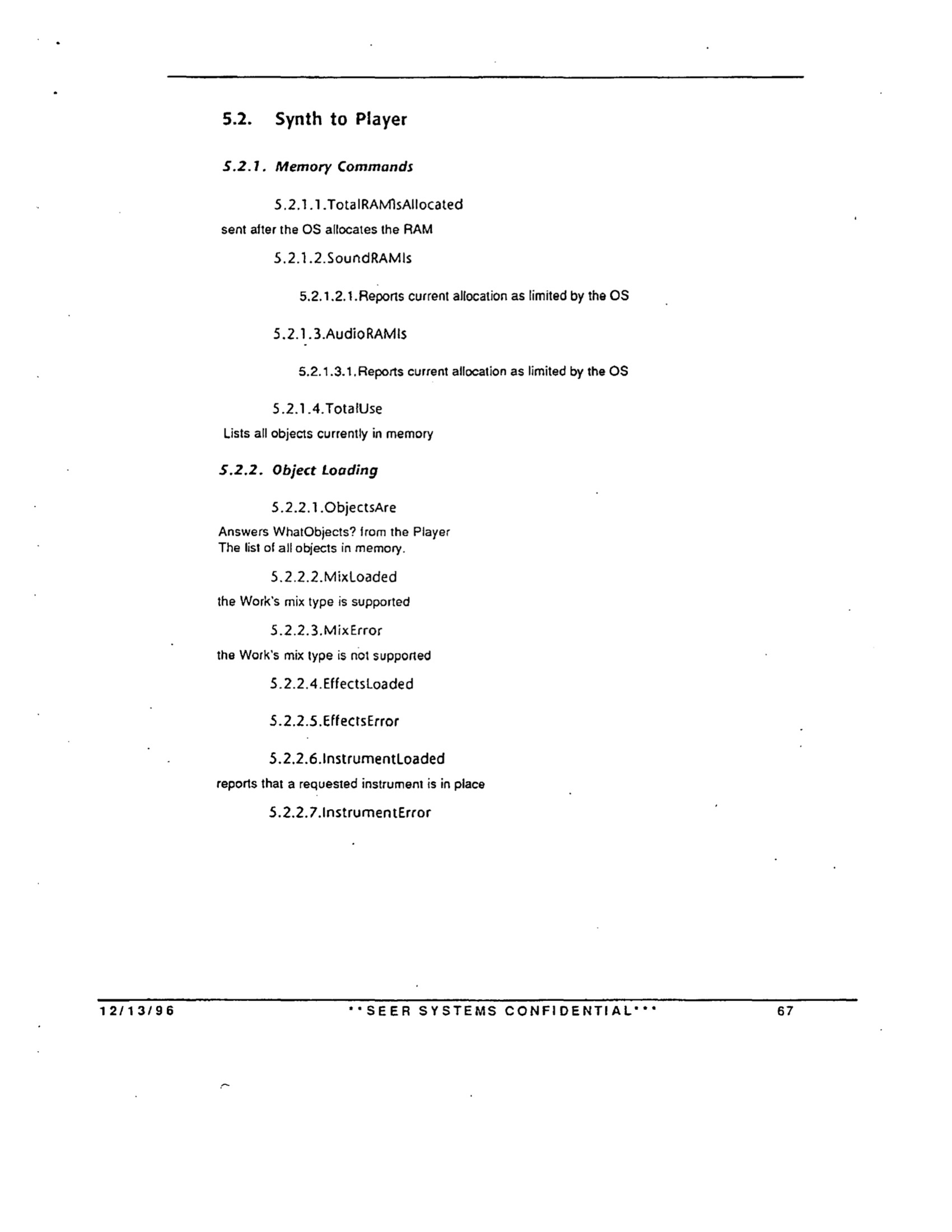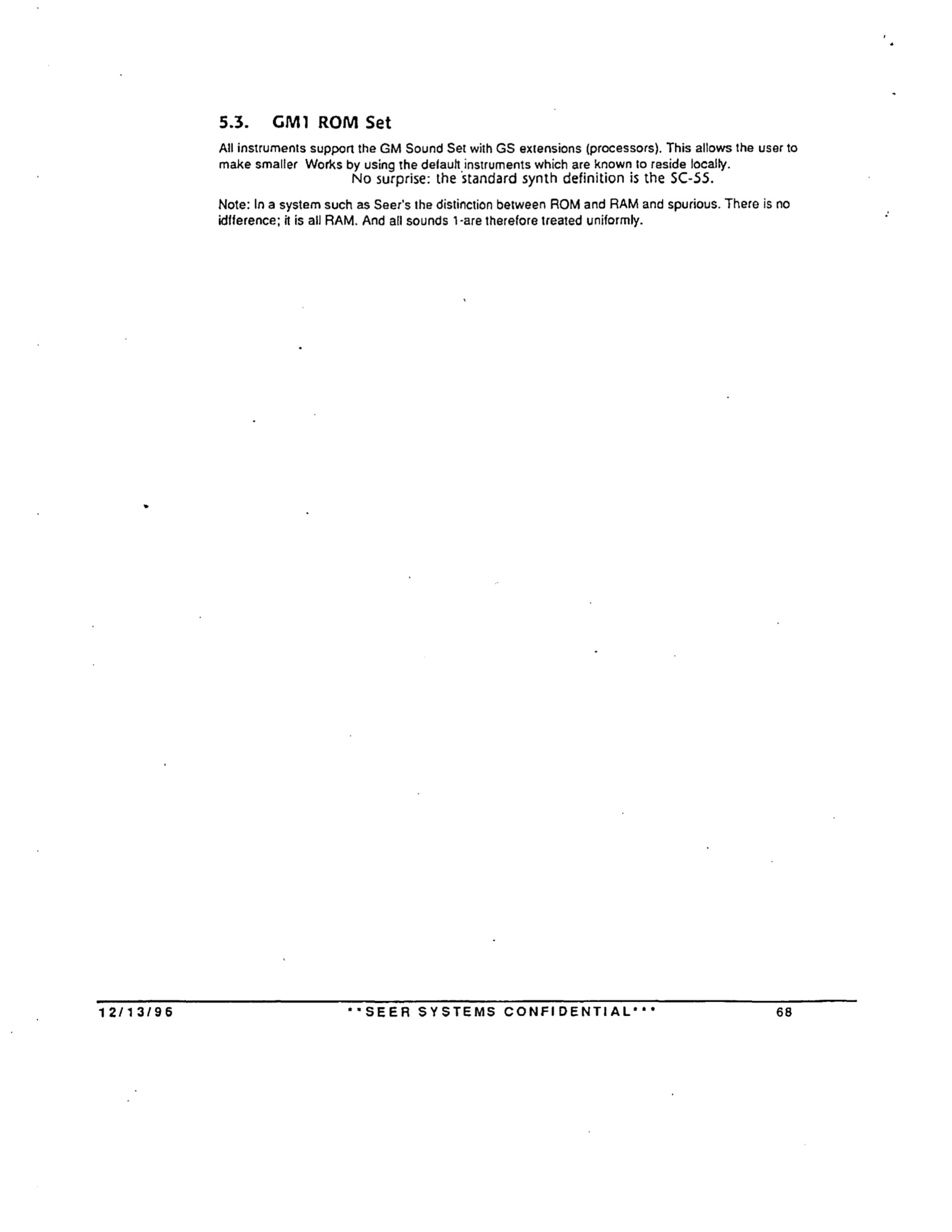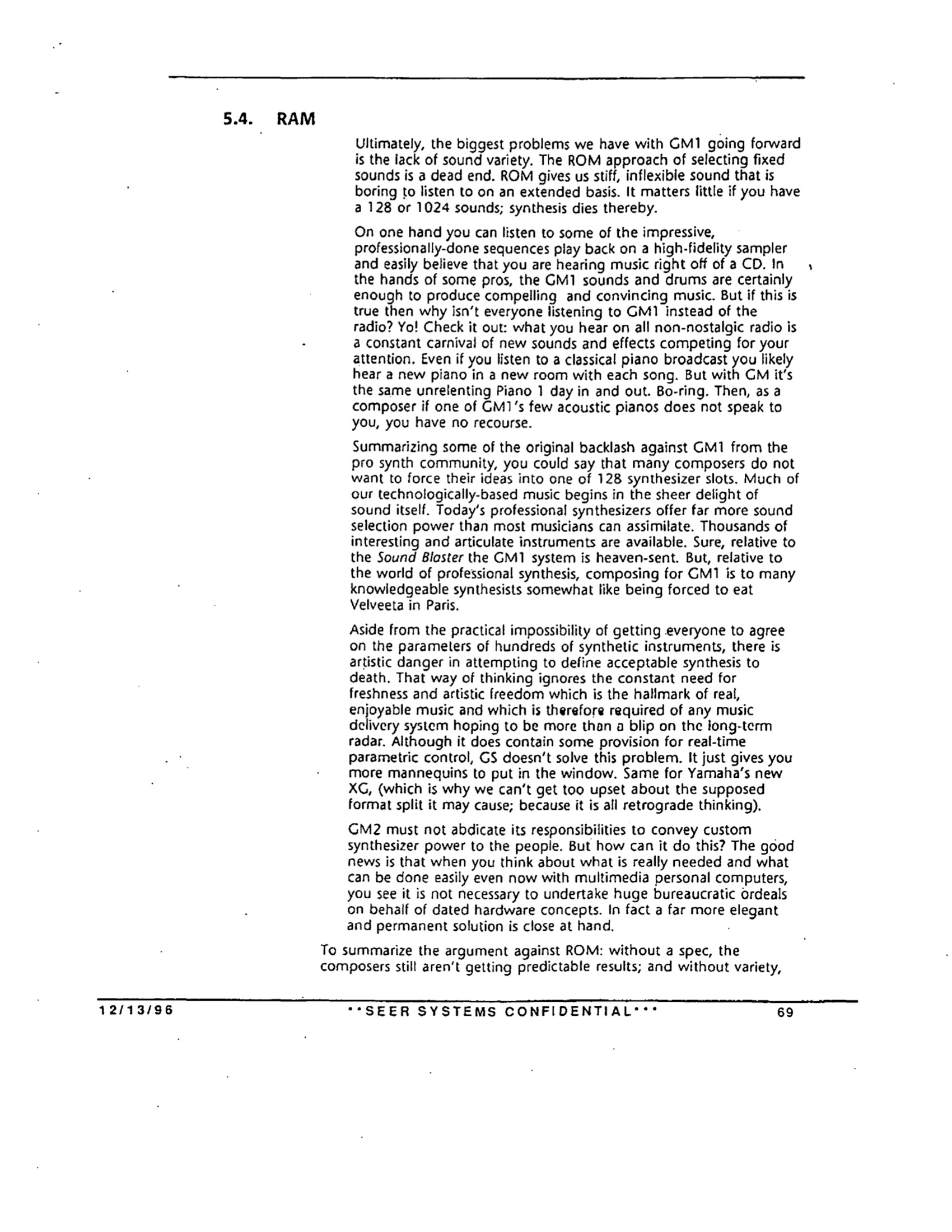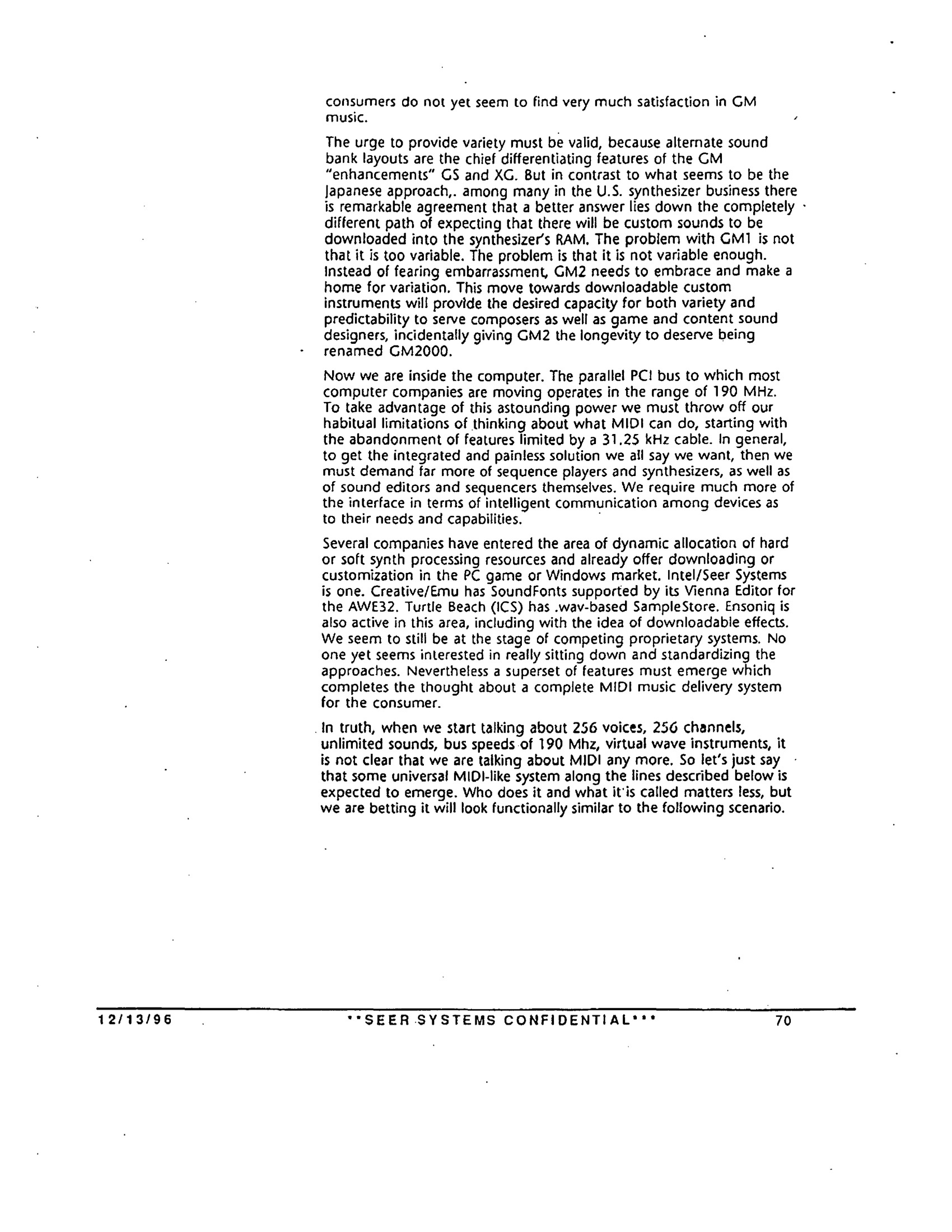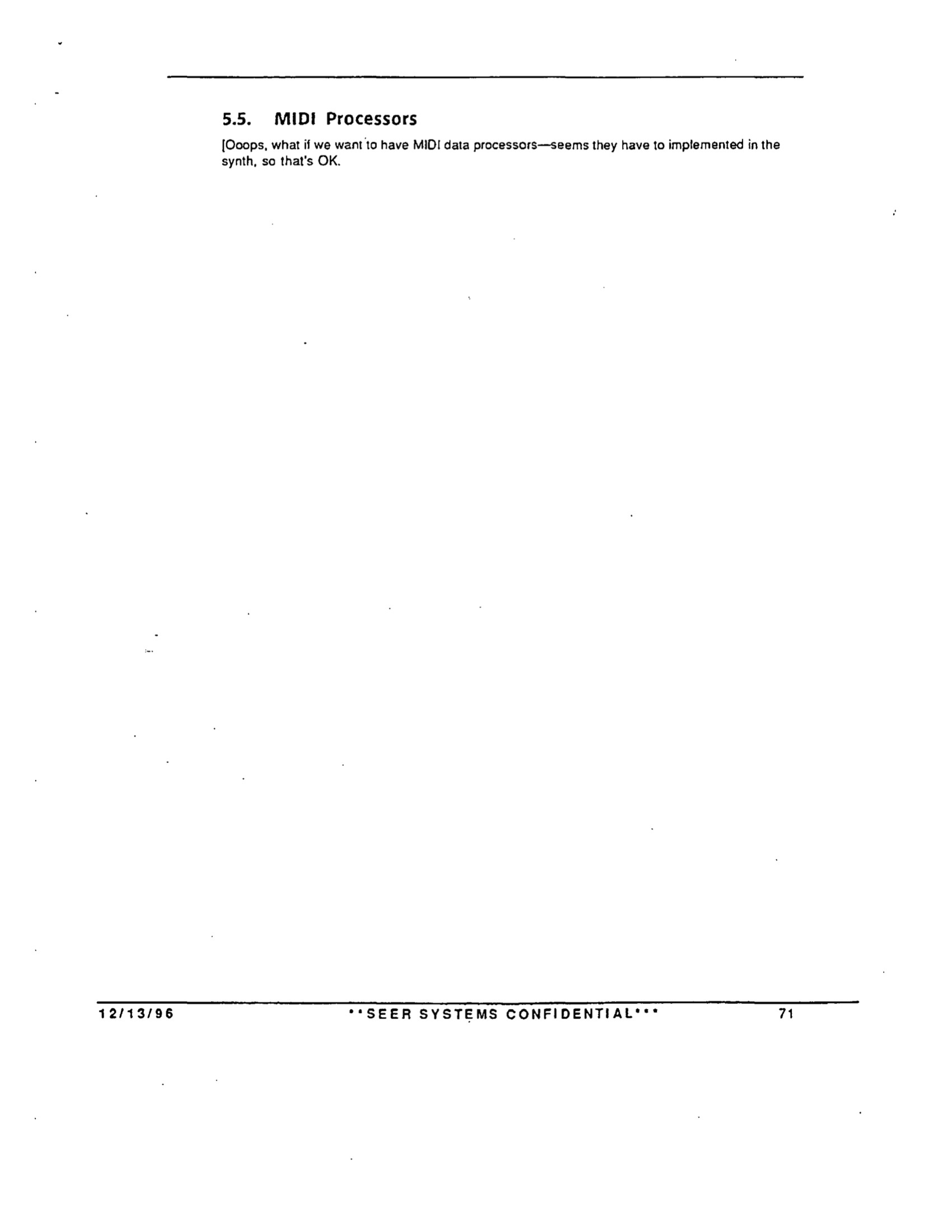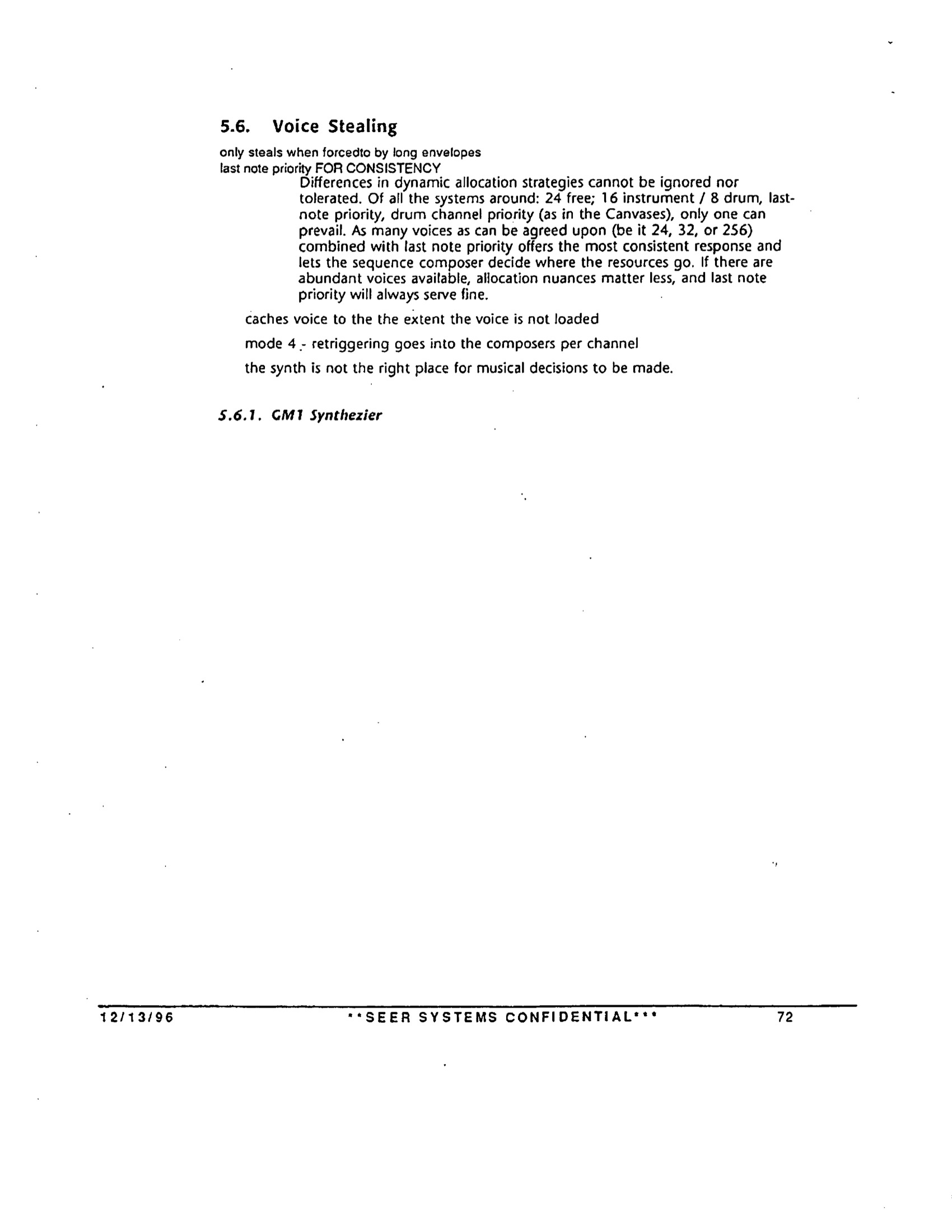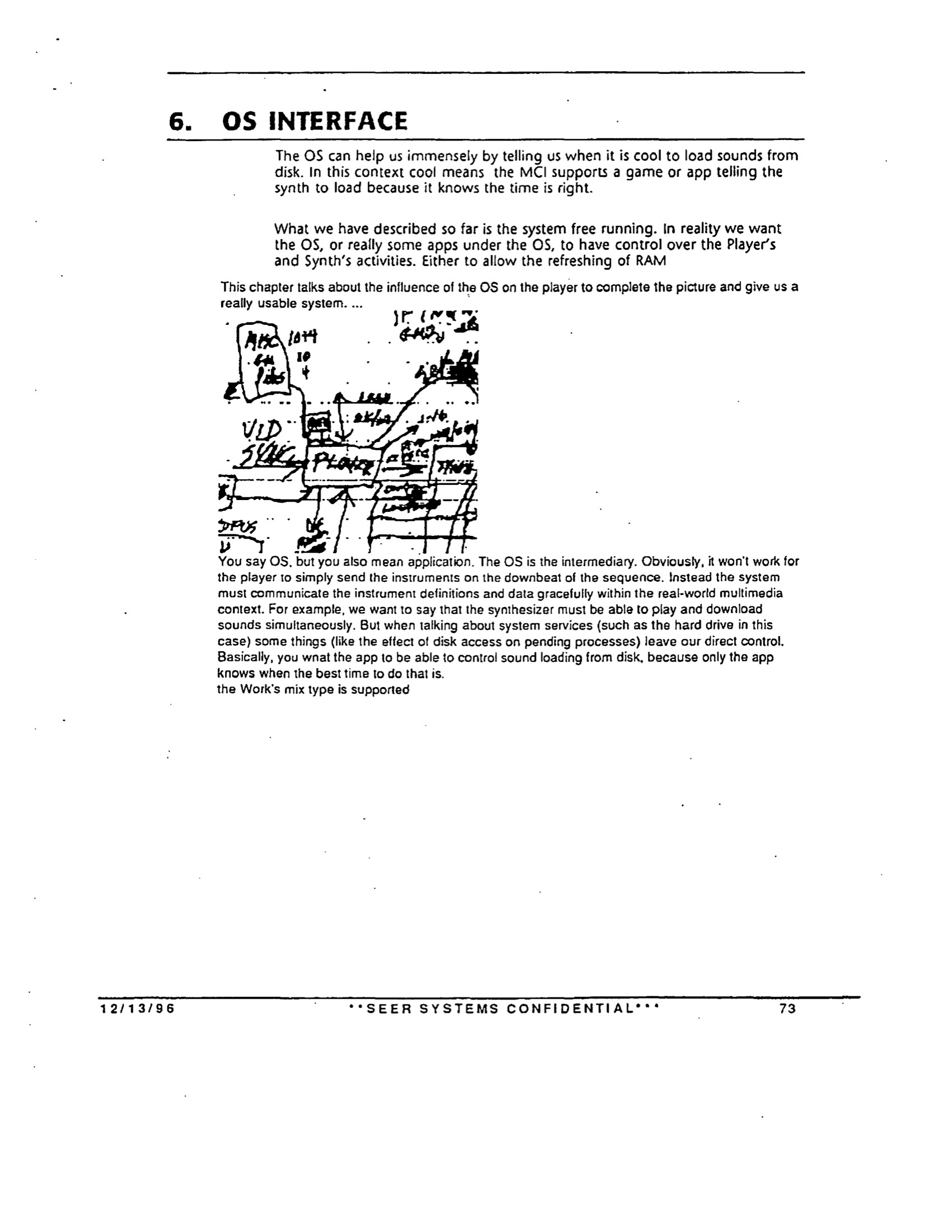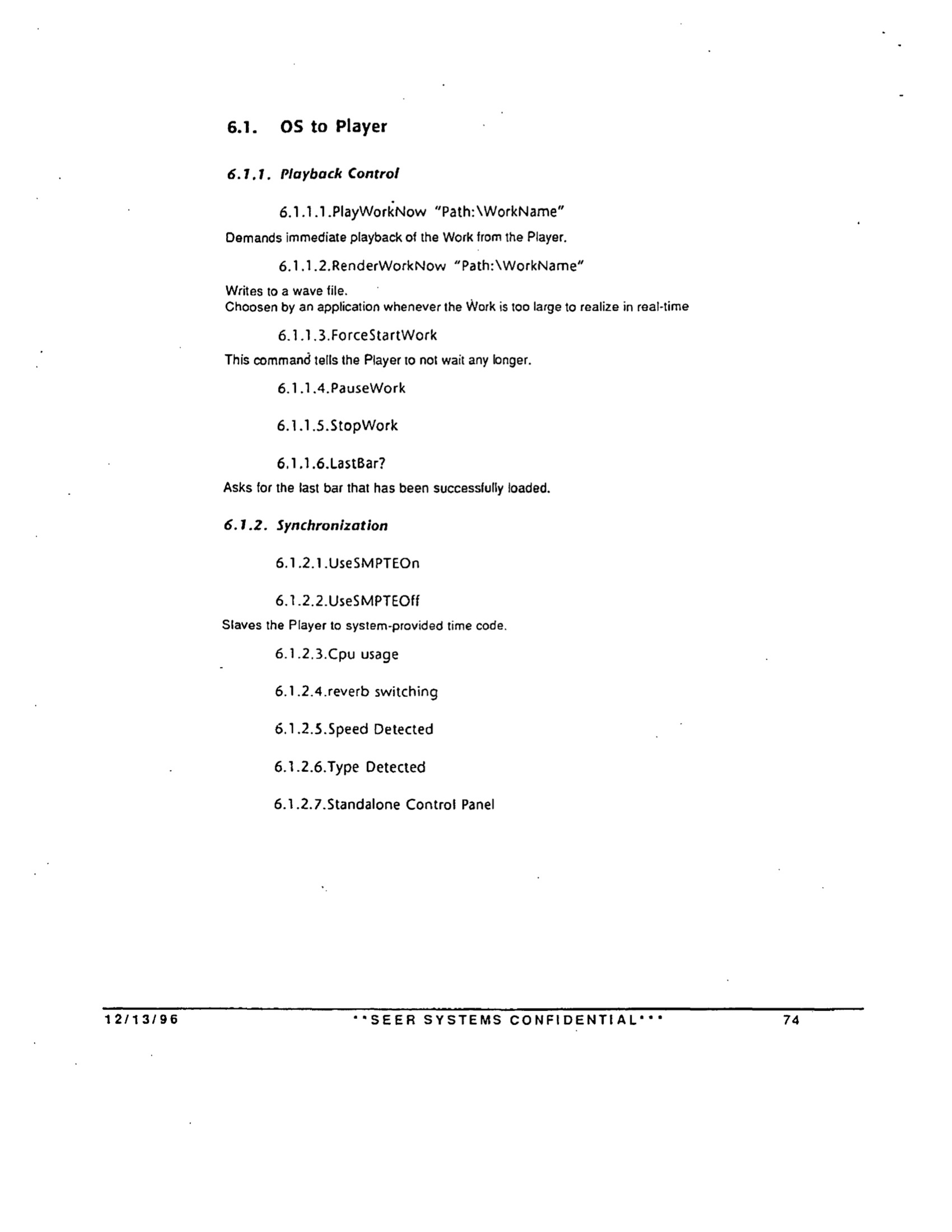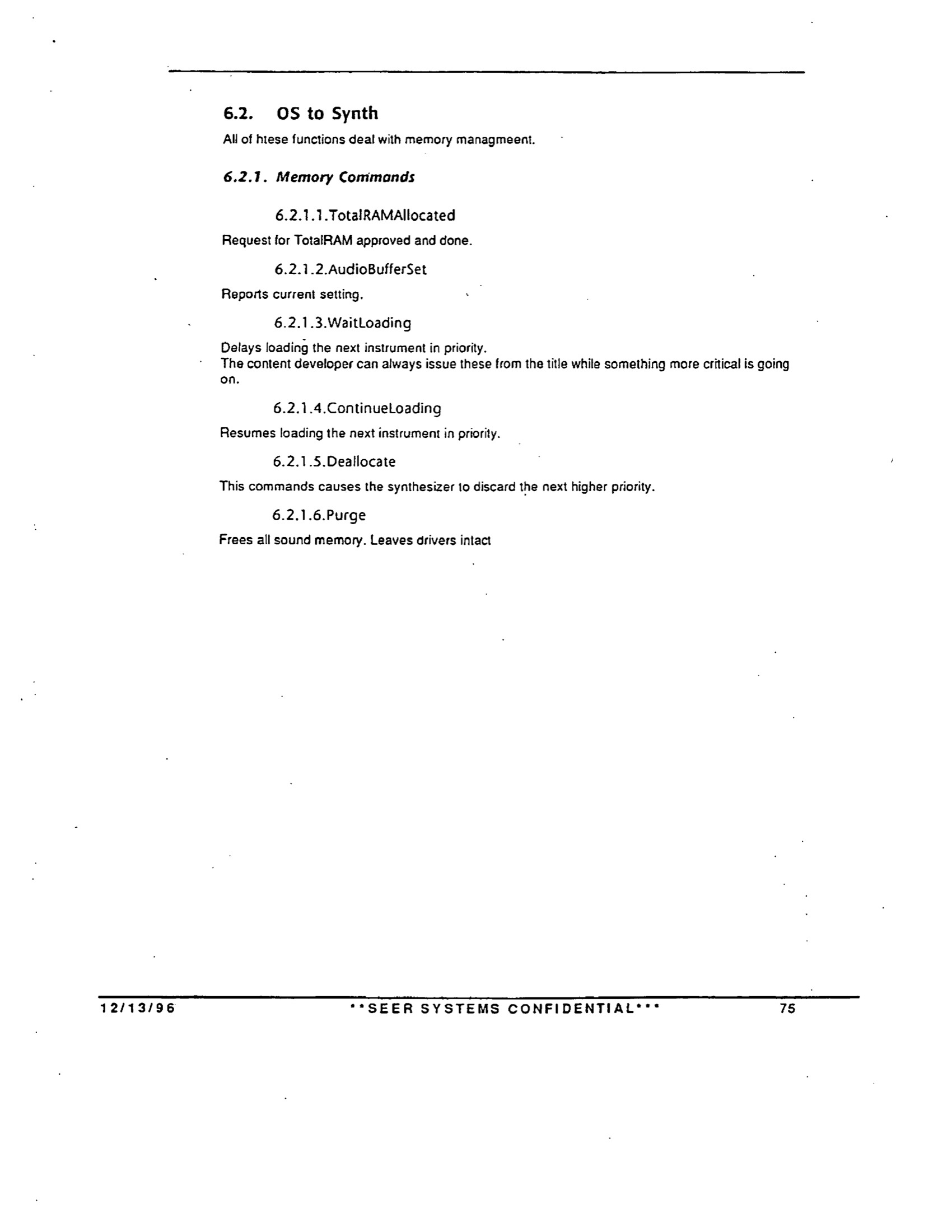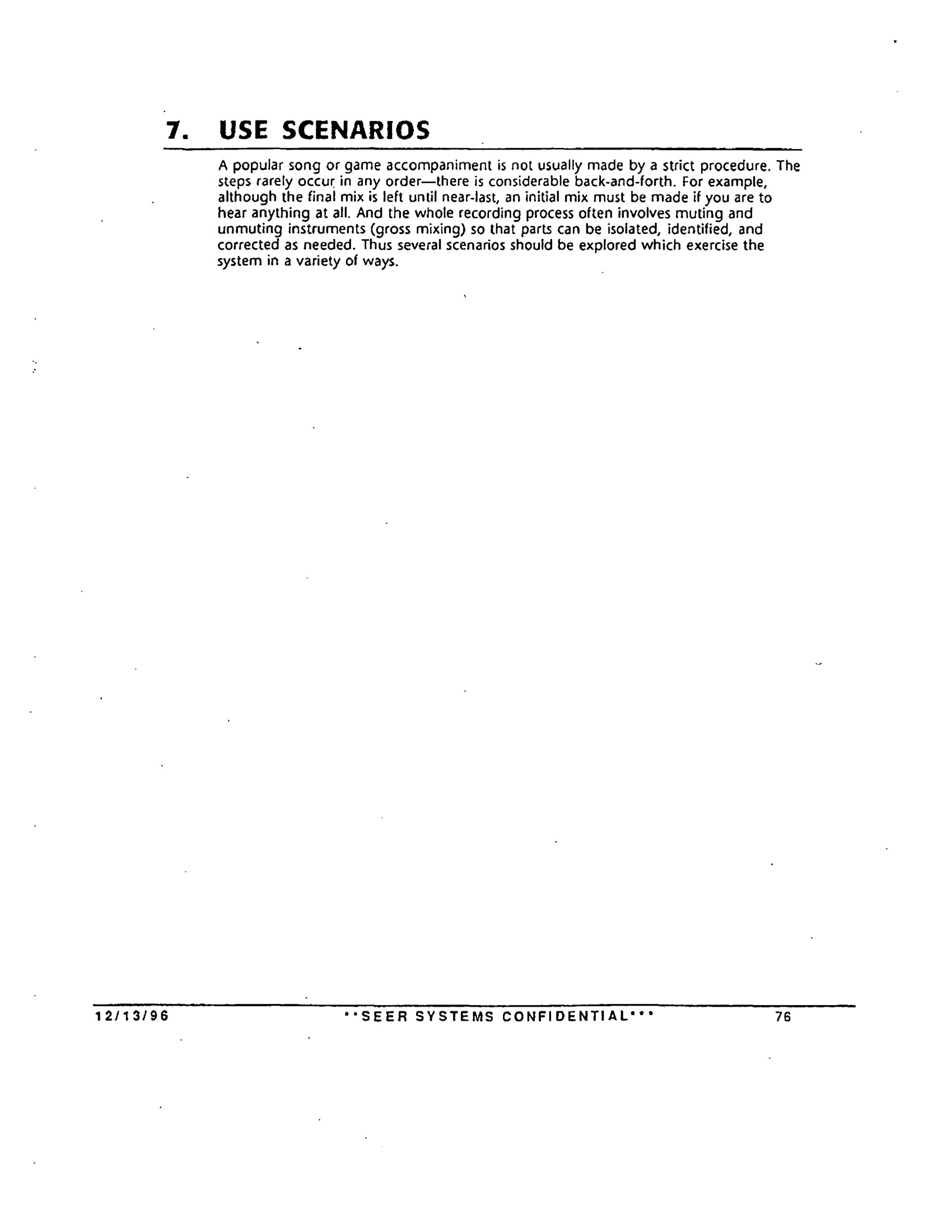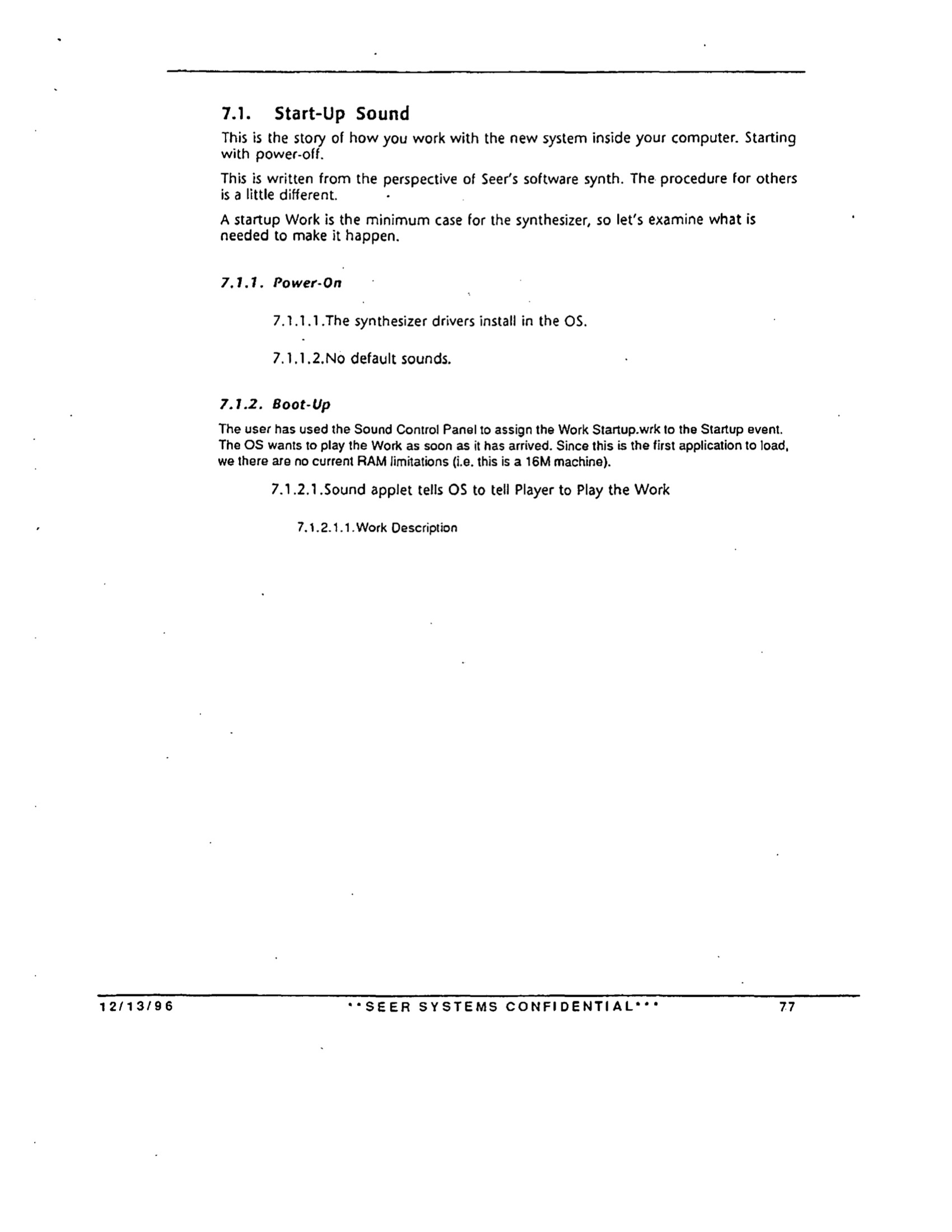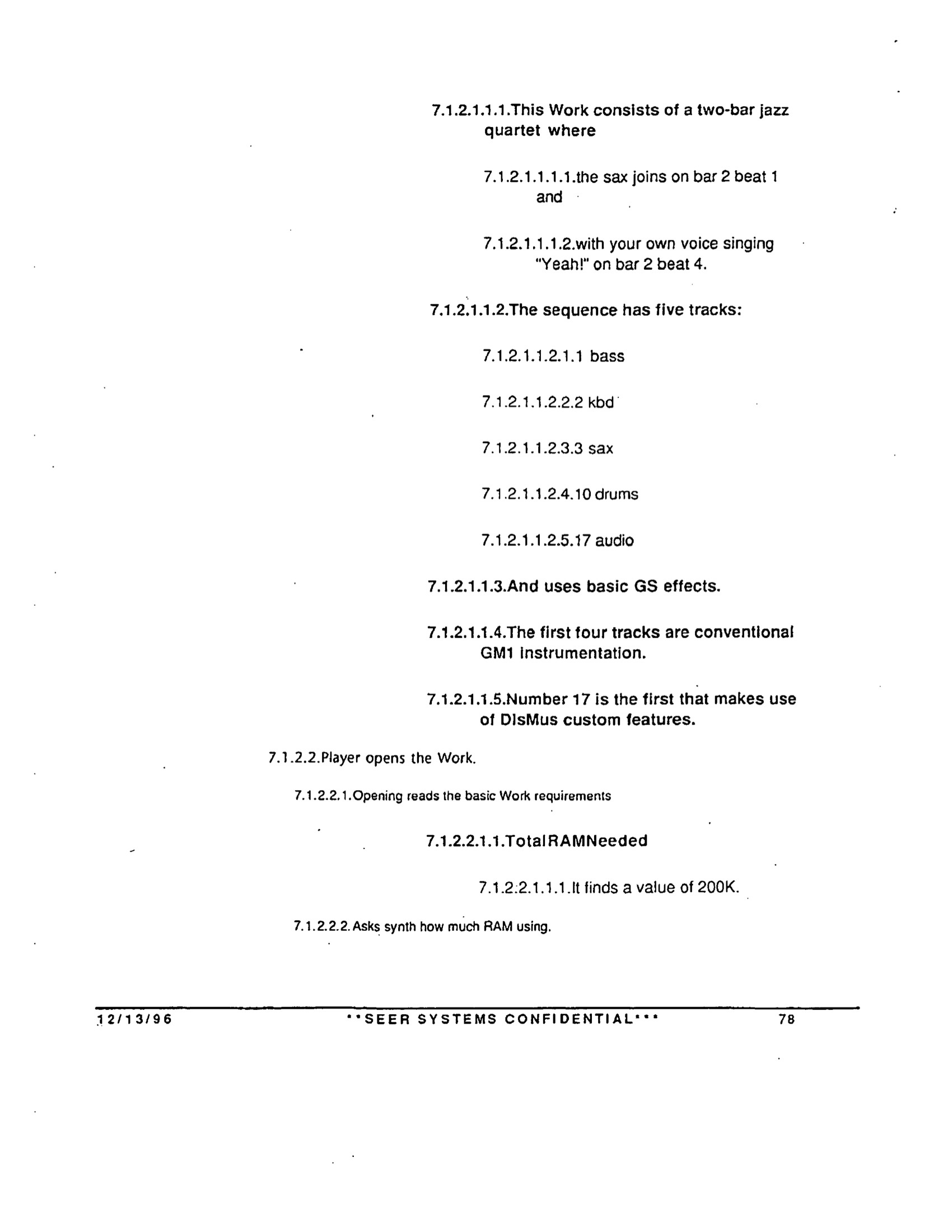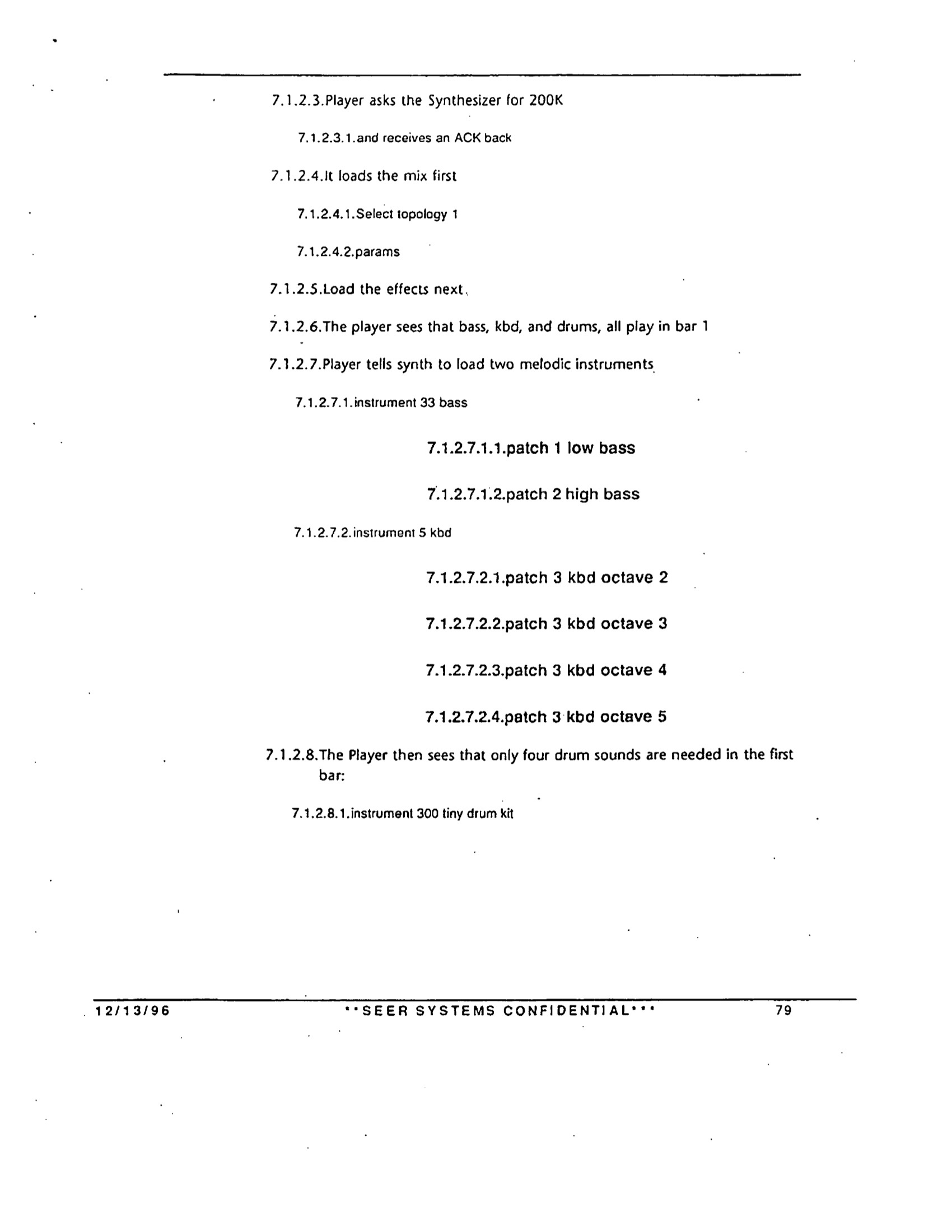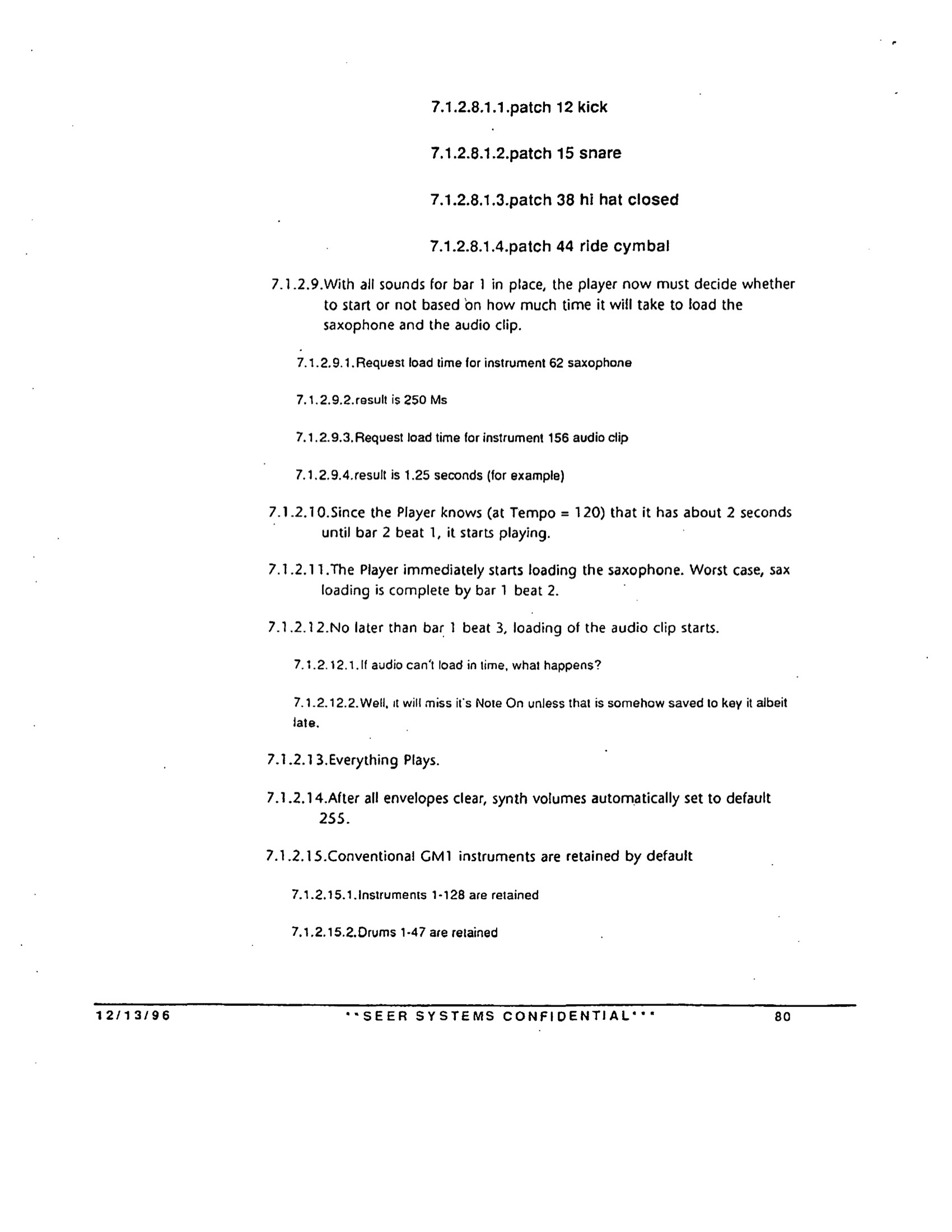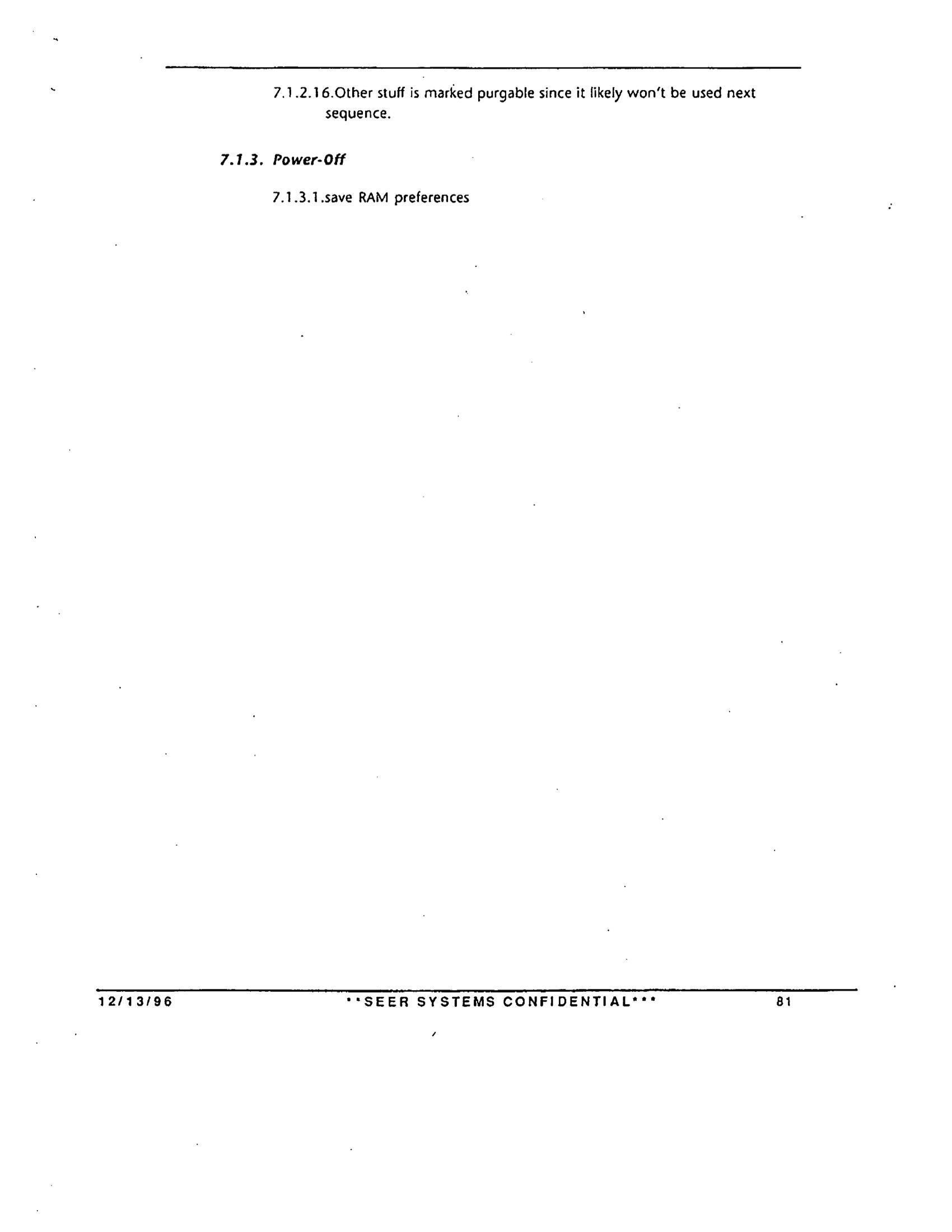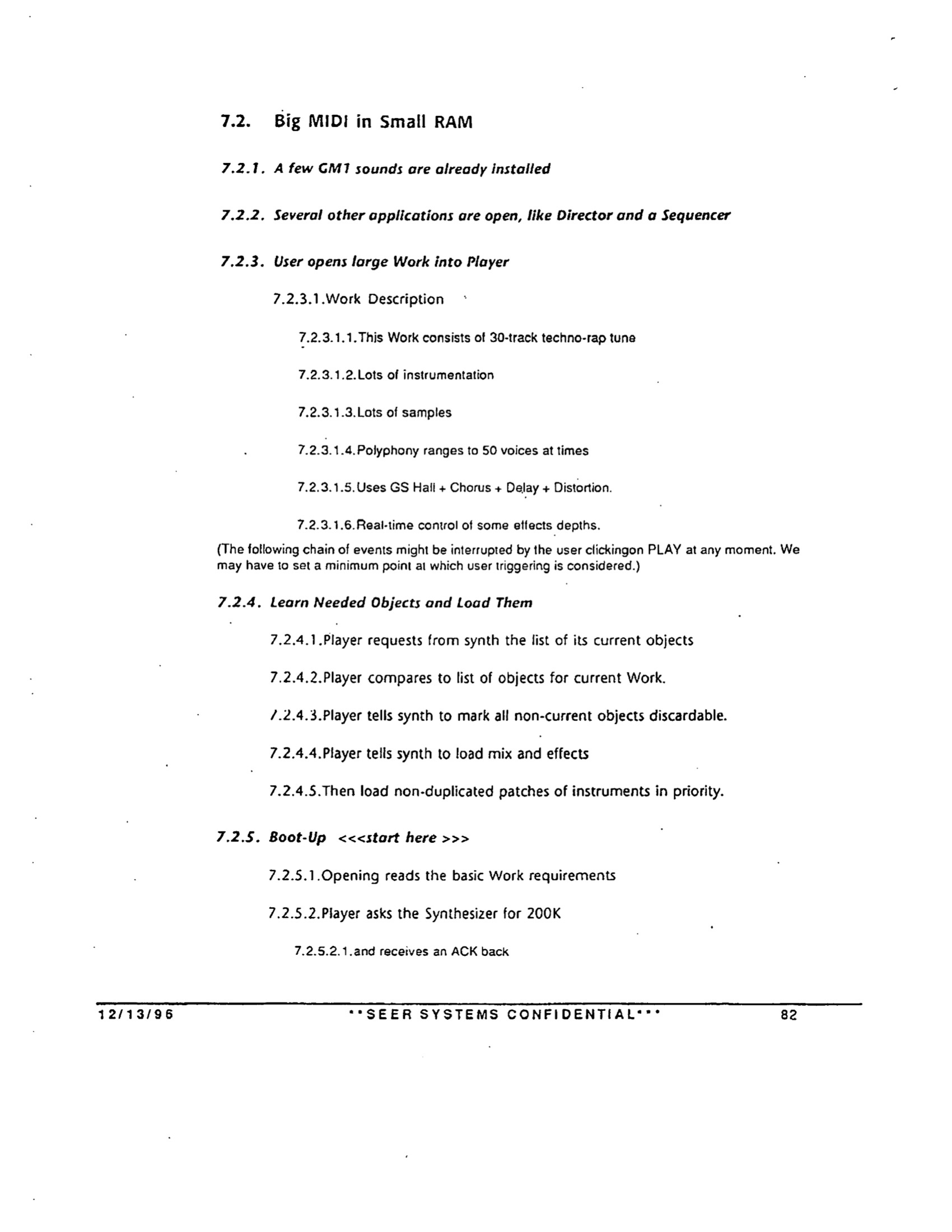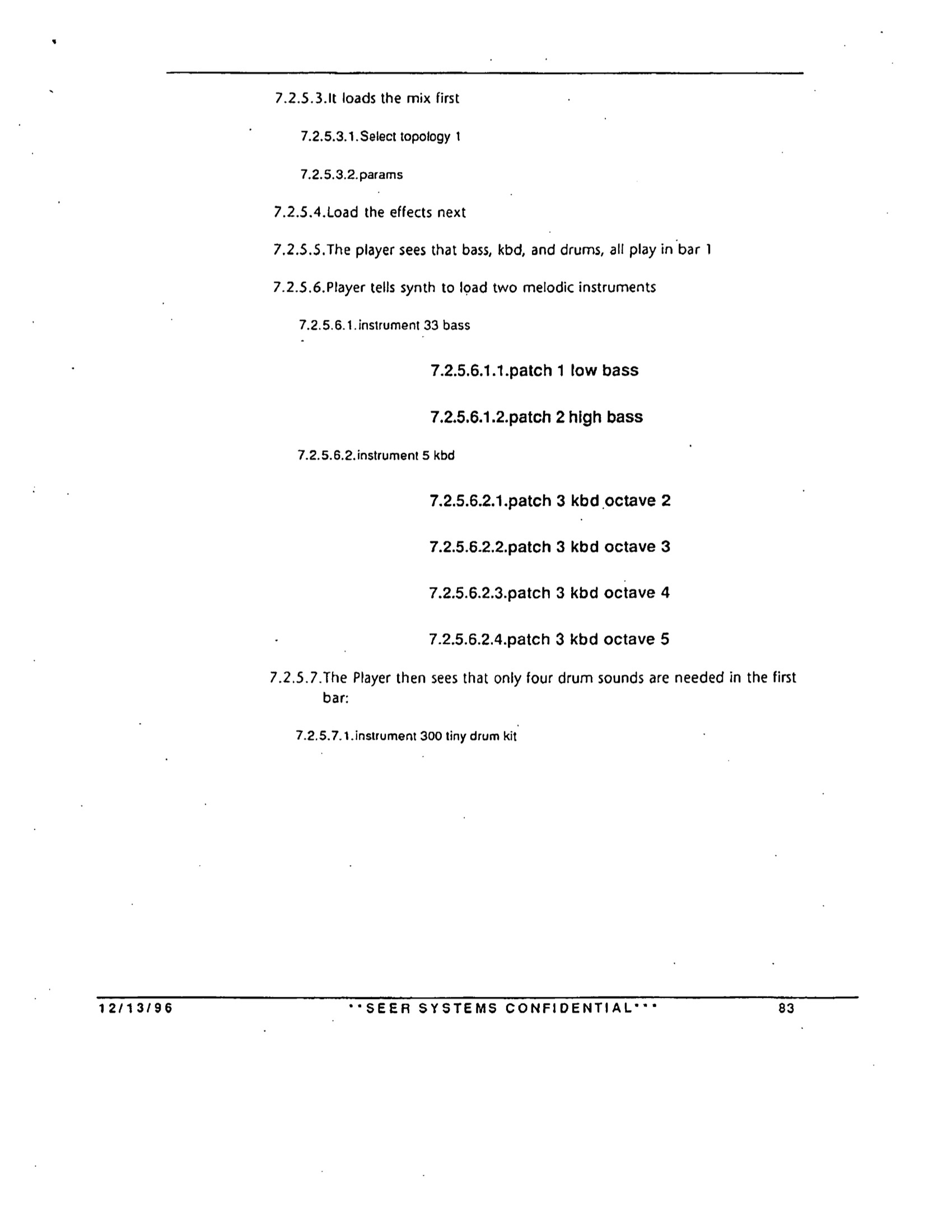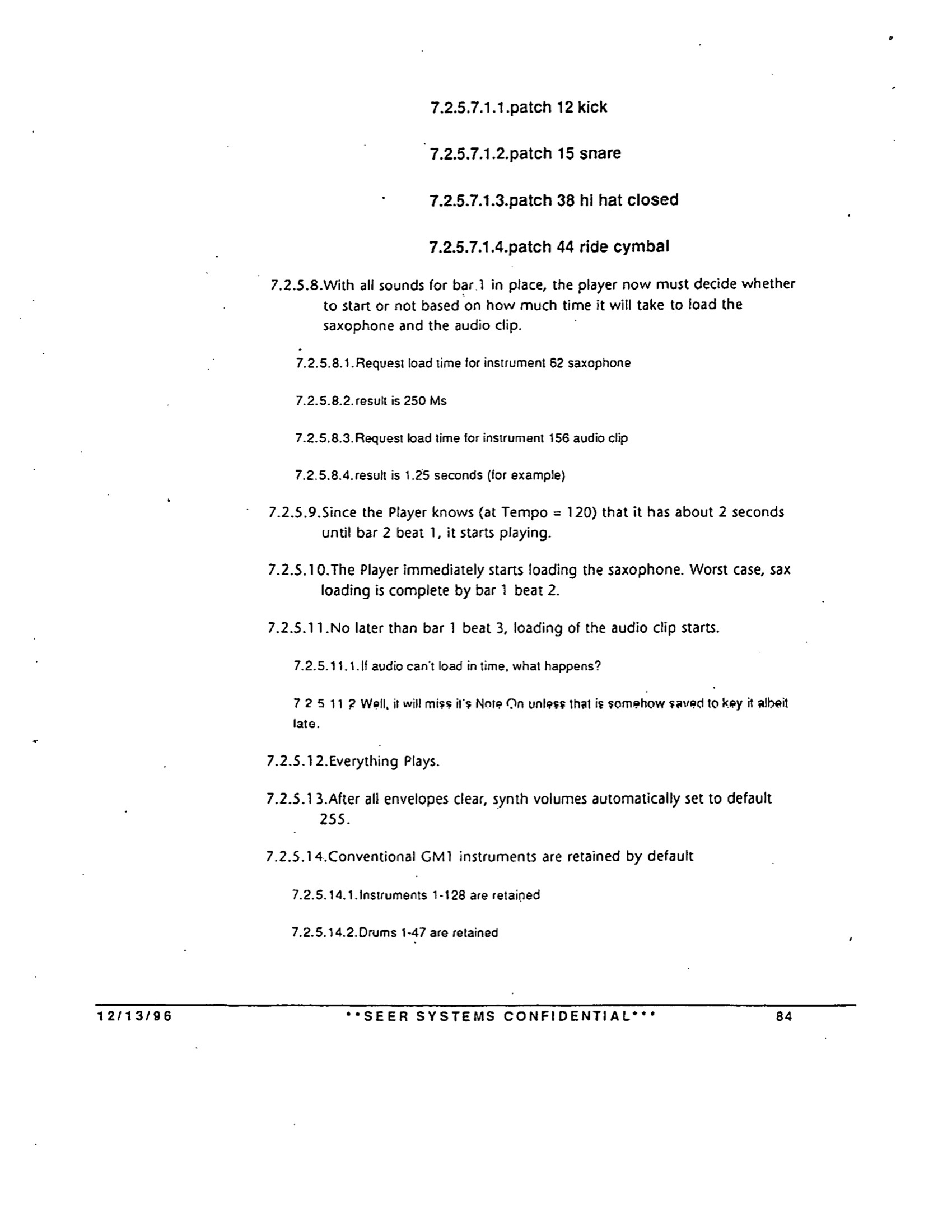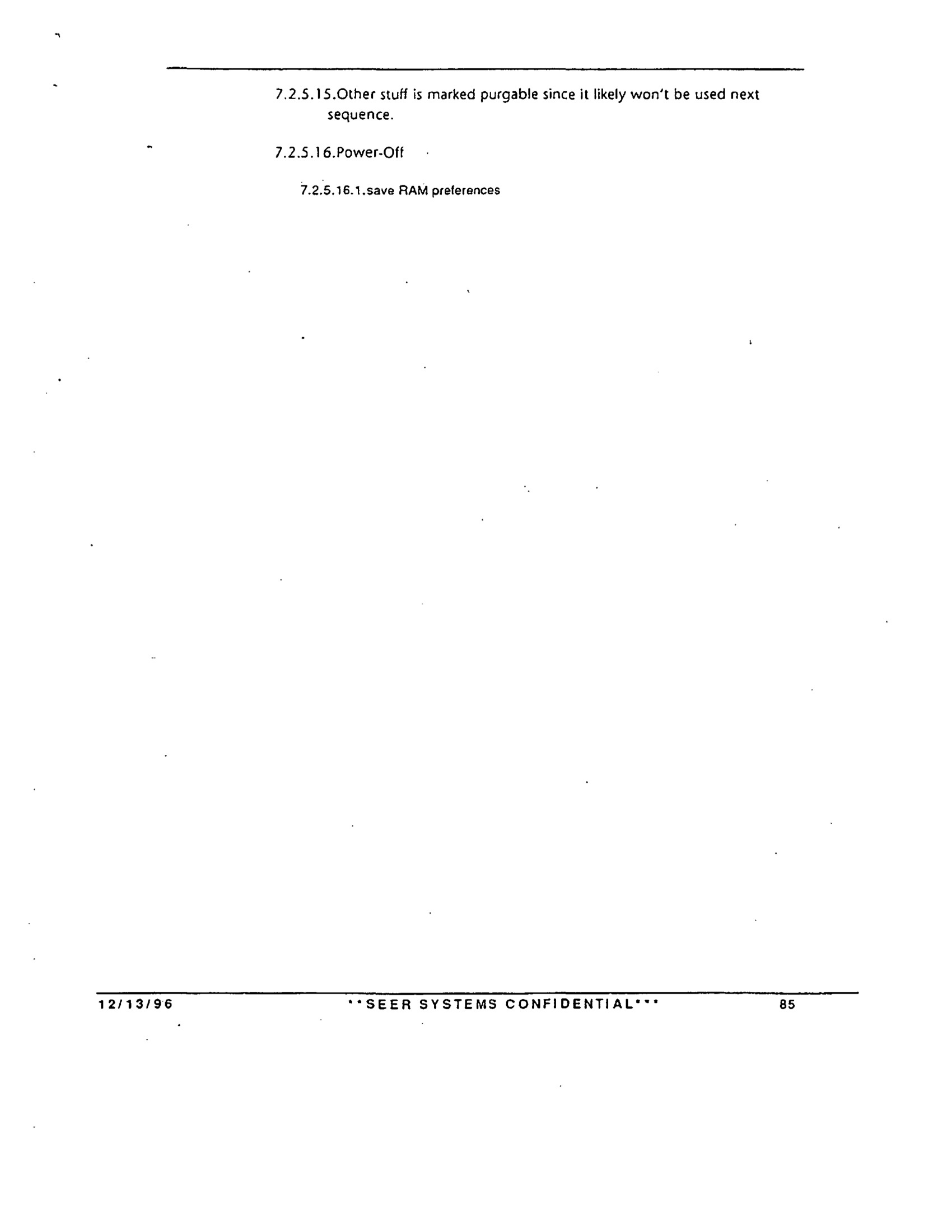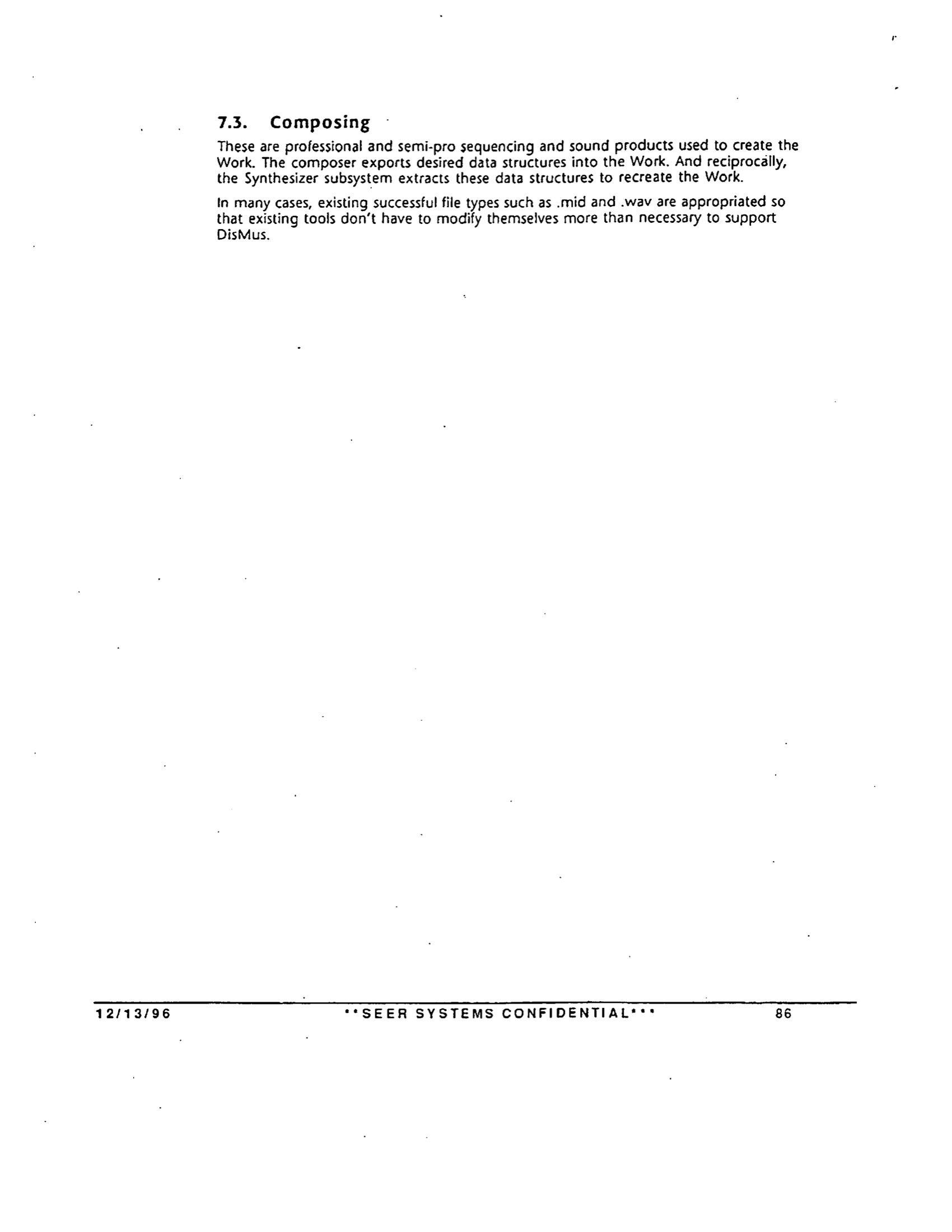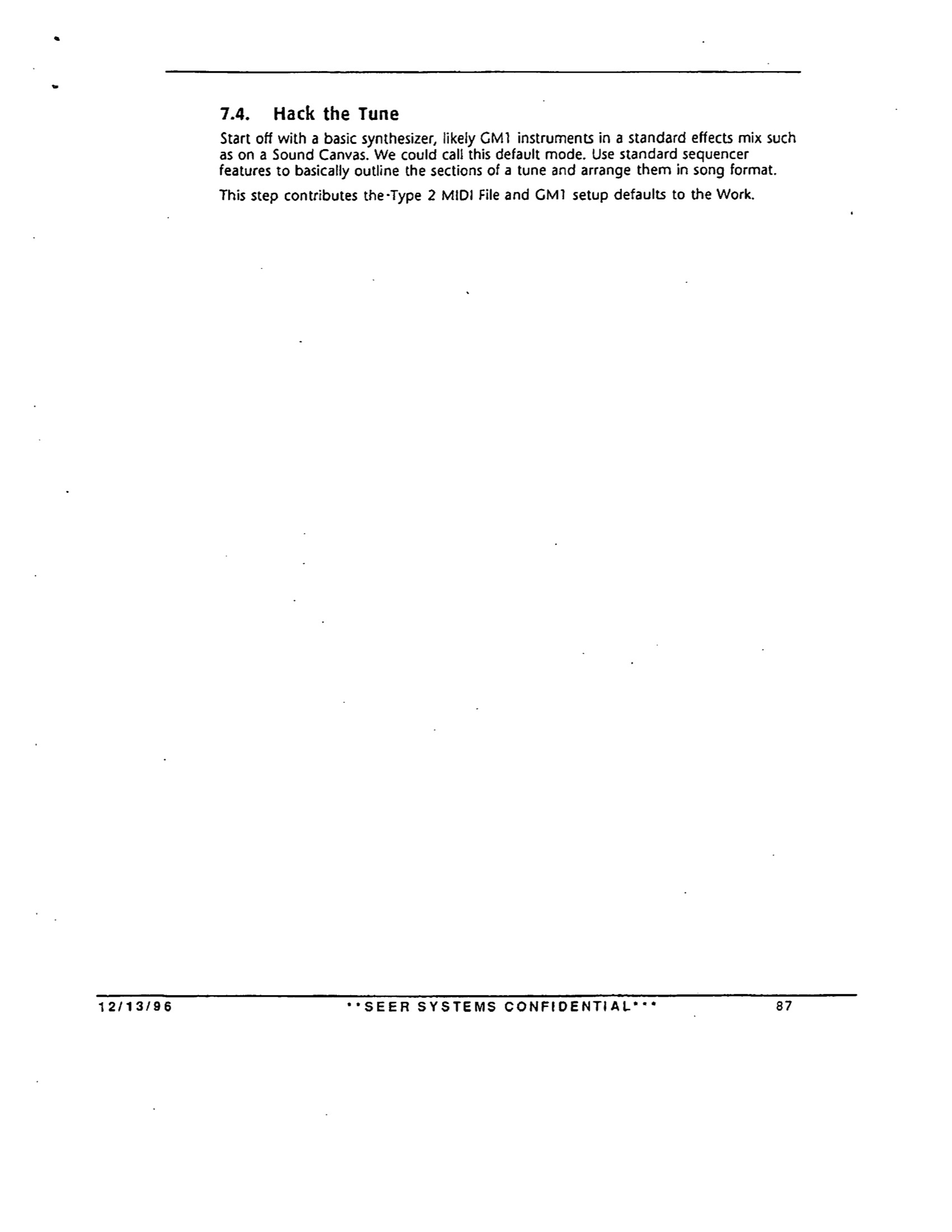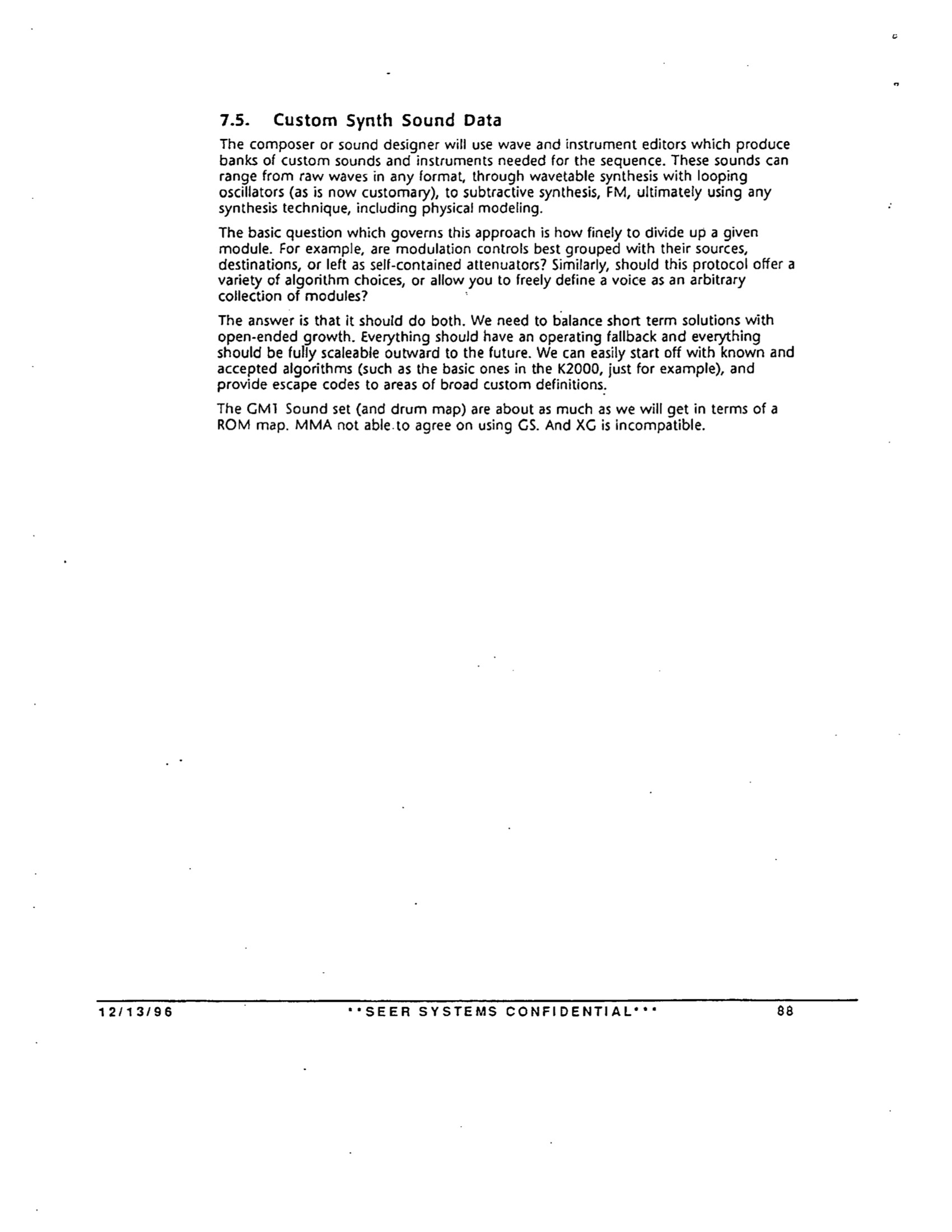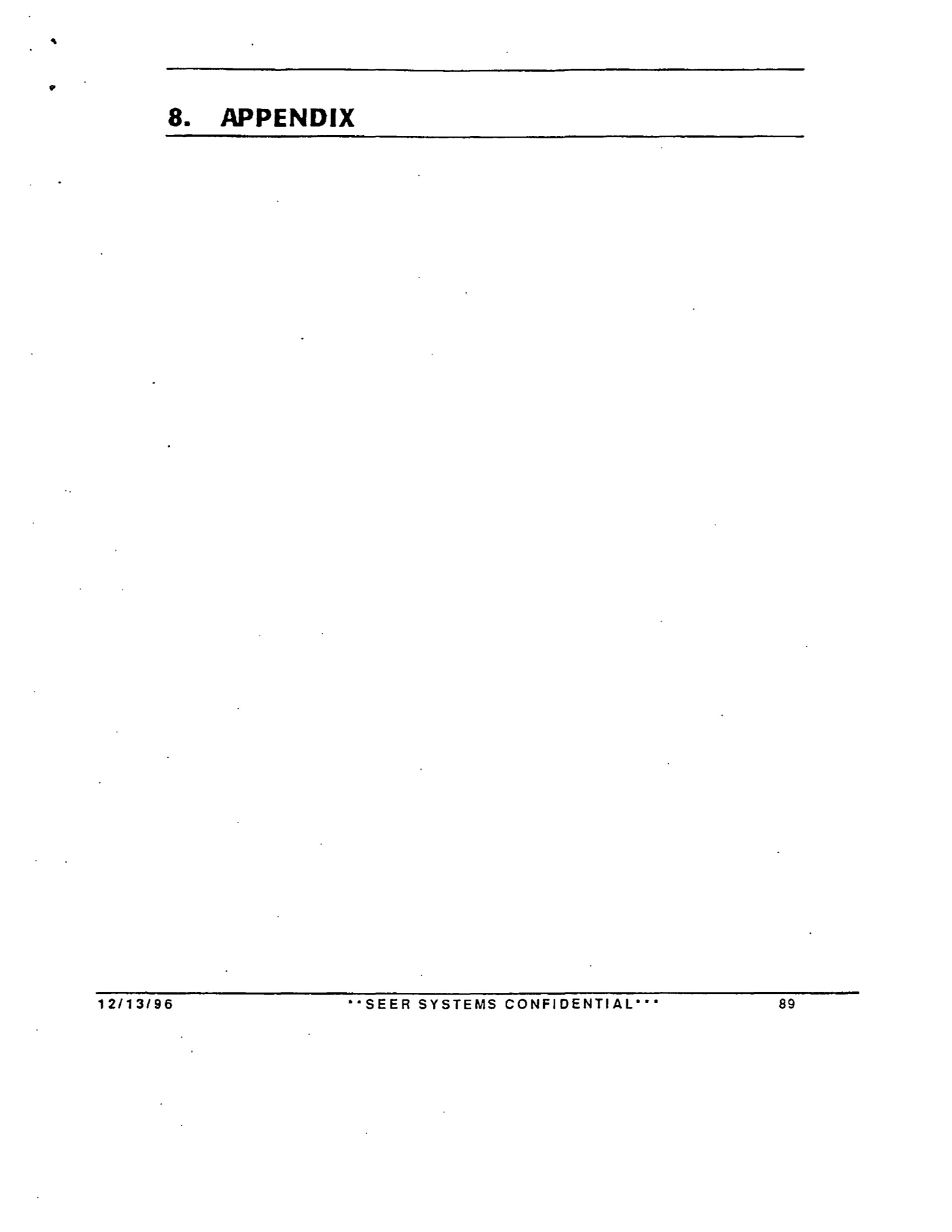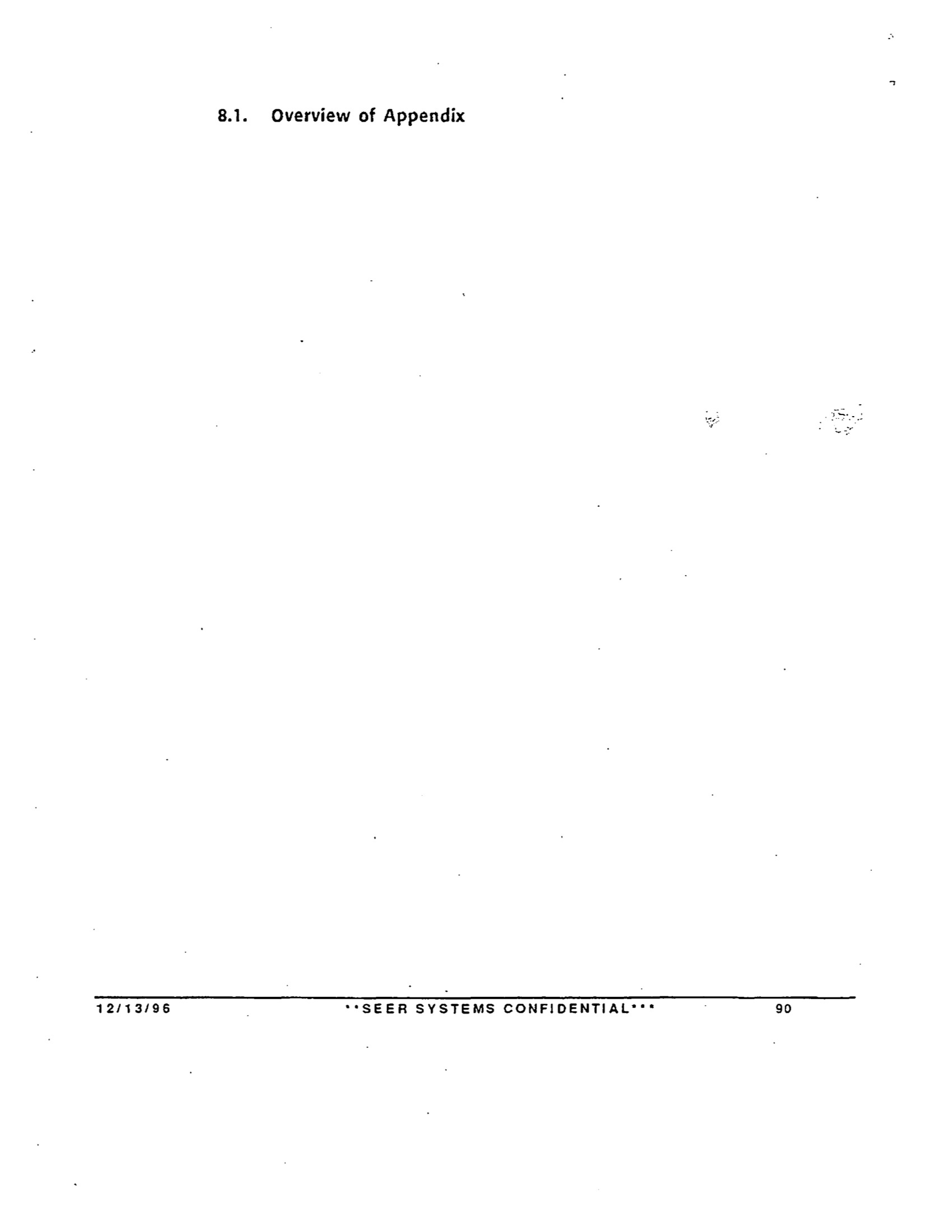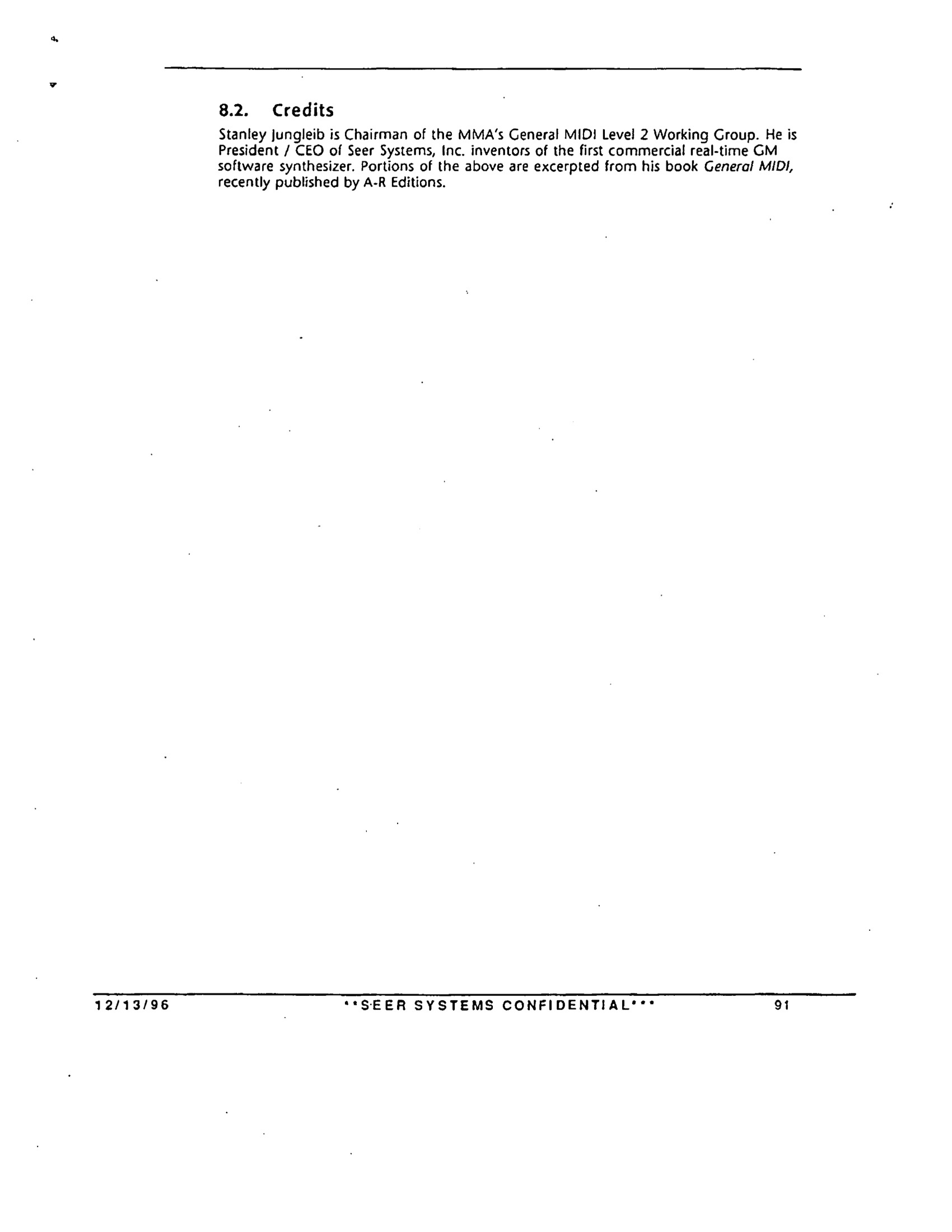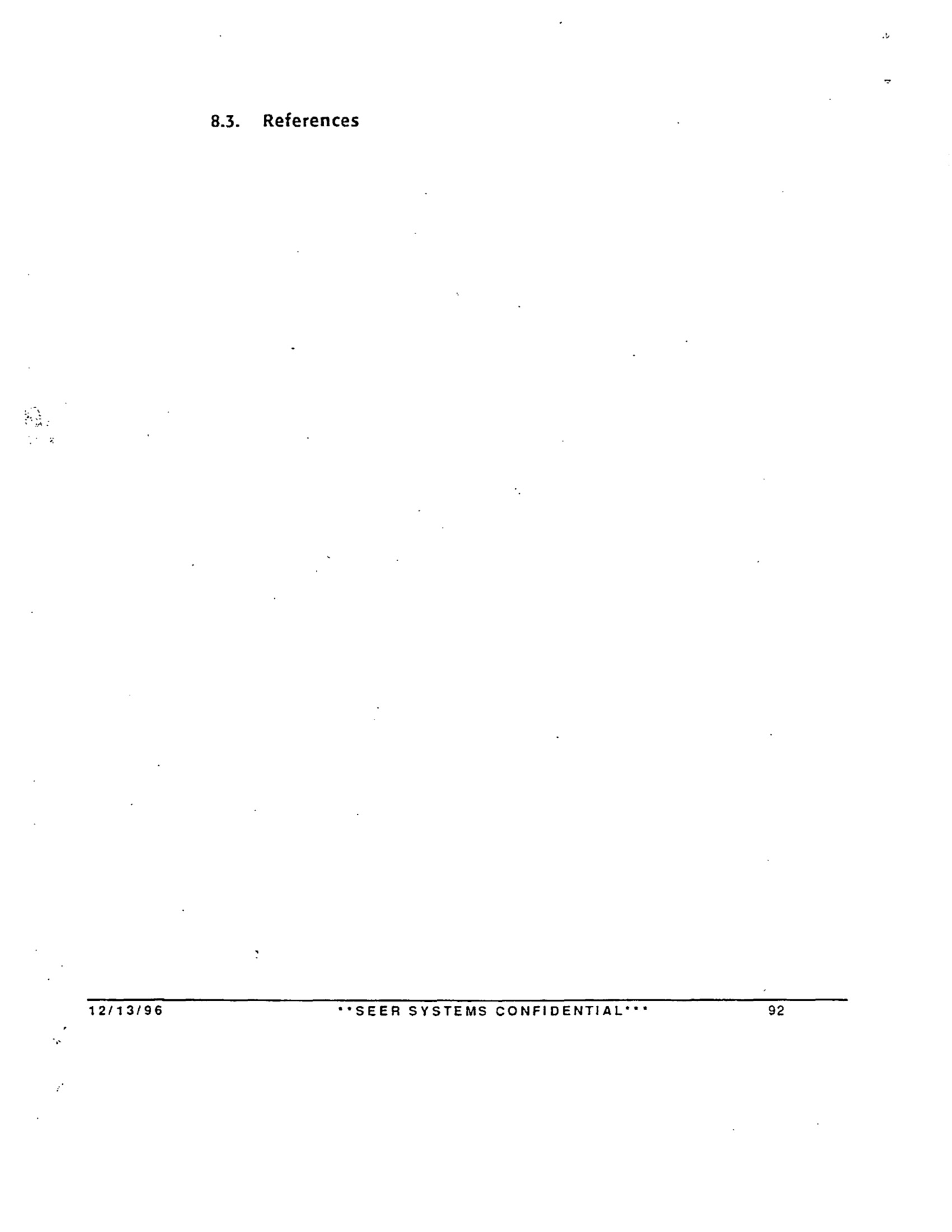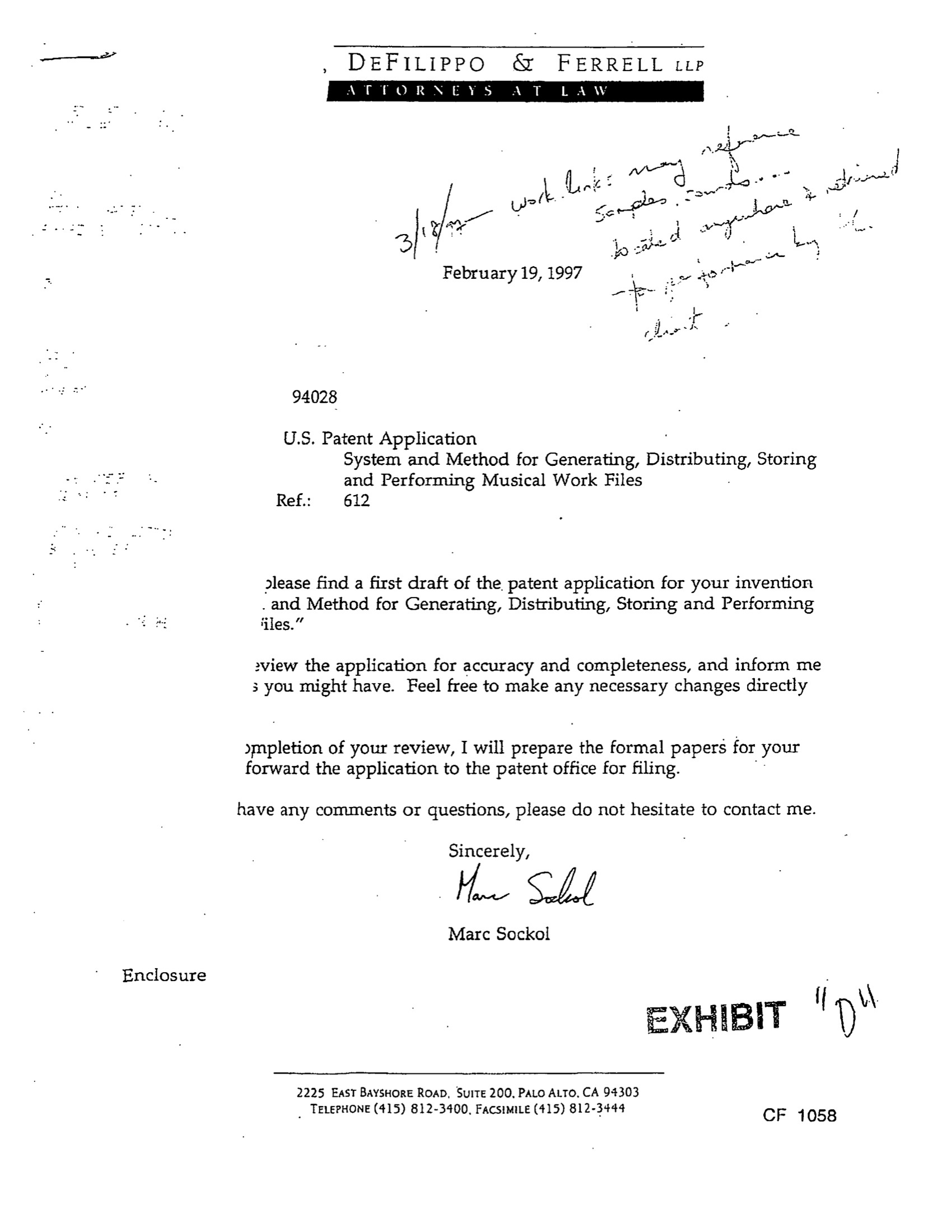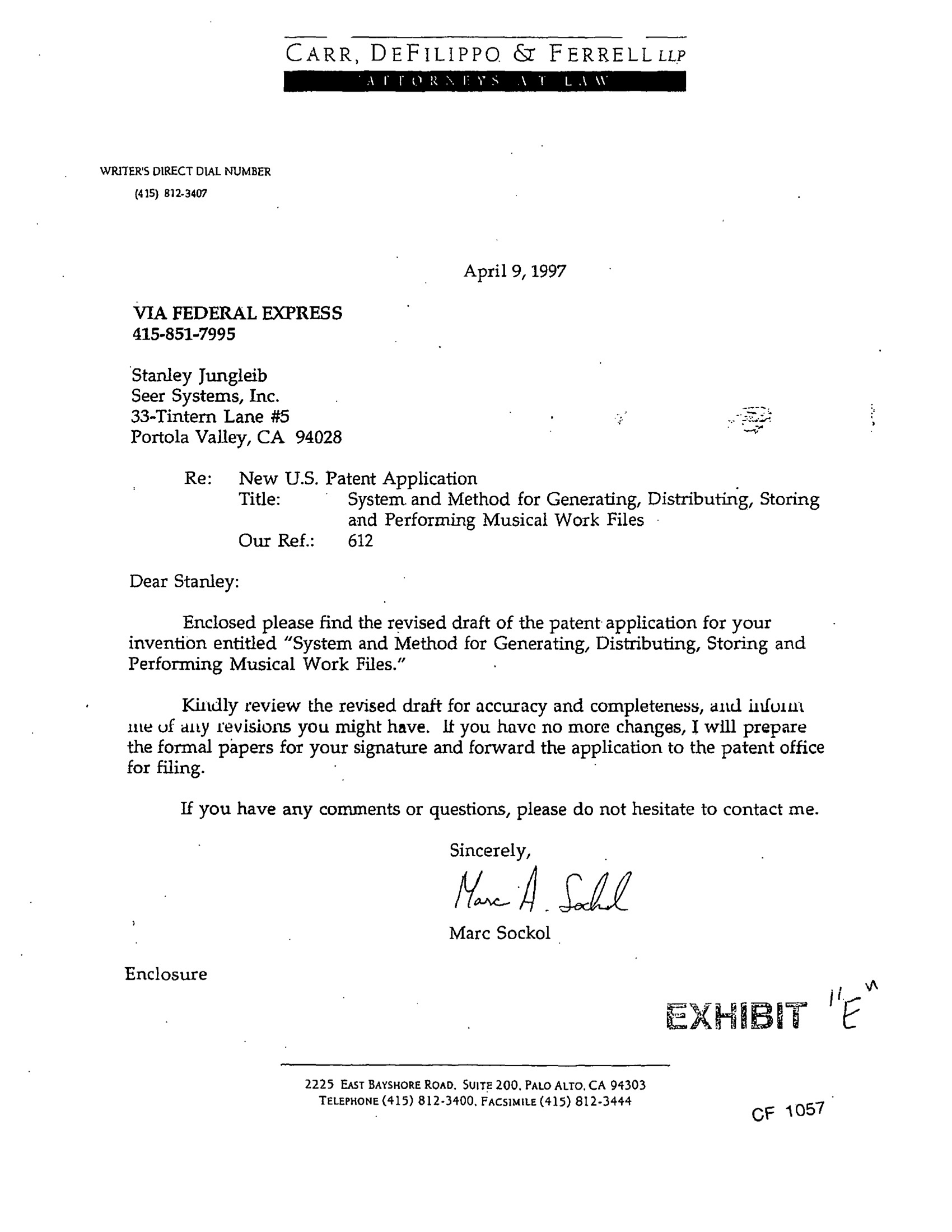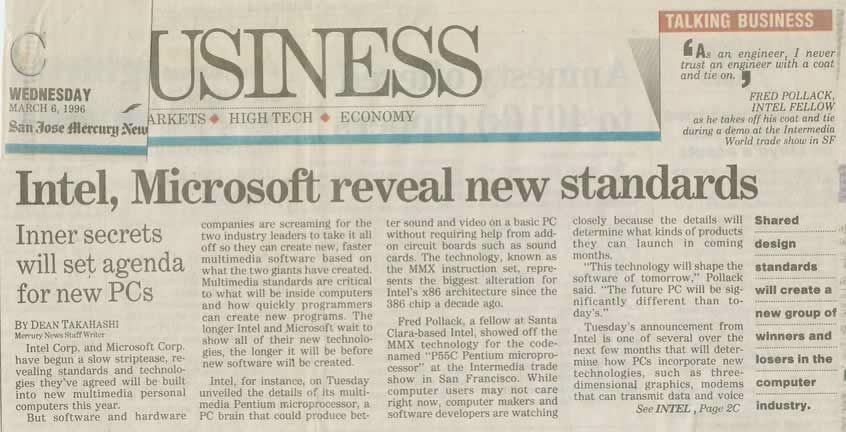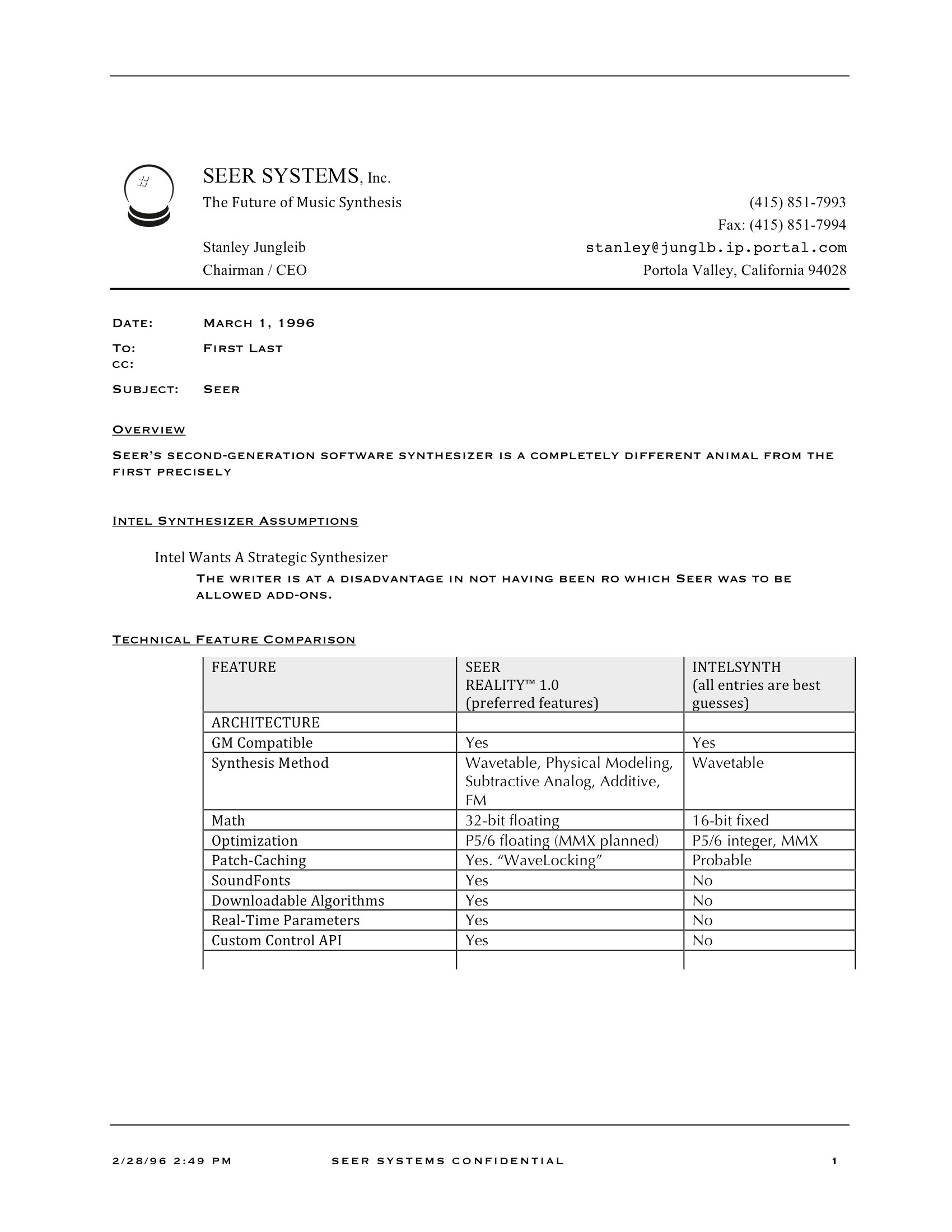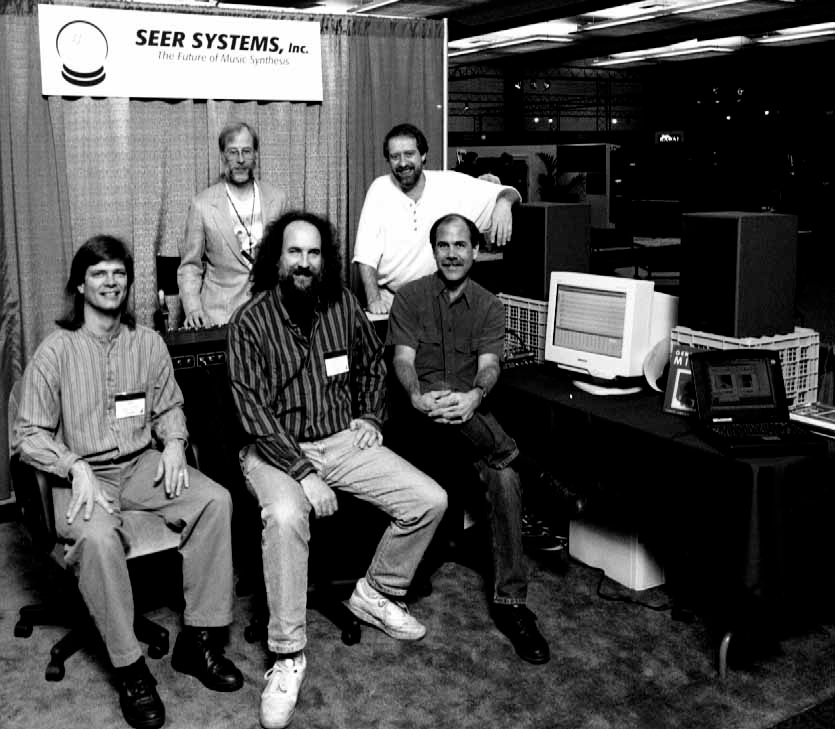Stanley Jungleib, Chairman
If free speech depends on the judgment and methods of EFF’s current leadership, then they endanger everyone’s freedom.
I began working in music synthesis in 1979, through the next two decades emerging as an acknowledged industry leader who among other things brought to realization the host-based software synthesizer now standard on all computers. Yet, since 2004, EFF has put significant resources into discrediting Seer Systems, its patent, and me personally as part of its campaign on behalf of huge corporations to destroy the legal protections available to the individual inventor, via its ongoing “Patent Busting” project. In early 2009 I demanded that they retract their baseless and defamatory attacks, so far to no avail.
Accusing my single-person company Seer Systems of “threatening small companies trying to innovate,” EFF responded with truly Orwellian logic by aligning itself with Microsoft, Yamaha, Sony, Nokia, the Mayfield Fund, and Beatnik. For the record, founded in 1992, Seer Systems has to now received $1.2M in funding. In contrast, the “small company” Beatnik that Seer supposedly threatens has burned $40M while selling to the entire cell phone industry. Thus, Beatnik is small compared to Seer only in terms of relative success.
EFF claimed that Seer’s patent “could stifle new innovations in online music distribution”. Seer IS the innovator. All that is going on here is industrial competition. On one side is the ultimate extension of Seer’s unique software engine realized in 1995, forged in concert with Opcode through 1996, applied for patent protection in 1997, after detailed rejections granted in 1999, commercially deployed and defended since. On the other side are simply those who, with the benefit of a decade of hindsight, now realize I had a damned good idea.
EFF said that “Enforcement of the illegitimate Seer patent also threatens to compromise at least two public media standards, MPEG4 and XMF.” Those standards are not public: both are protected and controlled by fee-sponsored industry bodies (that is, corporations). MPEG-4 commands strict terms. From the weaker MMA, XMF was simply the rubber-stamped public face of Beatnik’s’ RMF (similar to the way General MIDI 1 was the rubber-stamped public face of Roland’s GS).
EFF has claimed that 274 is illegitimate because of prior art, insisting that “Mr. Jungleib extensively publicized techniques for music distribution in his book, and he did not seek a patent until after the methods entered the public domain.” First, whether I did or did not submit my book to my patent attorneys at the time of application, and what they did or didn’t do with it on what bases are all facts that can only be found in a file to which even I do not have access. So EFF can have no factual basis for this personal attack.
Second (and ignoring their confusion about copyright and public domain), whether the book itself is prior art is not a fact but their predetermined opinion. And it is an opinion which over five years of expert corporate litigation has not been supportable. So where does EFF find expert guidance in these highly technical matters?
From the dubious and disintegrating firm of Day Casebeer Madrid & Batchelder, now distinguished in Silicon Valley intellectual property by having six of its attorneys sanctioned by a U.S. Magistrate judge for withholding evidence in a patent infringement trial! Do EFF members know or simply not care that their leaders bet their reputation on a legal firm considered so corrupt that its founders have been forced to disassociate themselves from it?
Finally, the lady doth protest too much. While crowing of a great victory the simple fact is that in litigation of this order, re-examination is an anticipated, common defensive technique. As well, to refine their claims, inventors may themselves request re-exams.
So, Seer’s demand and warning to EFF has virtually nothing to do with their prompting a re-exam on 274. Seer Systems draws the line with EFF because they have been hijacked by corporate and Republican interests.
Ignoring any lessons from Journalism 101, the EFF refused to contact Seer, preferring to source a single complainer. There is a history to the relationship between Seer Systems and Headspace/Beatnik. Our work complemented each other and Thomas Dolby knew it. In 1999 discussions with Mayfield Fund which might have merged our two companies, I gave notice that the 274 patent was going to be issued within a few days. Mayfield made the informed decision to ignore Seer and deliberately develop Beatnik into an infringer. Thus again, naïvely supporting EFF and Beatnik in this issue is tantamount to supporting the irresponsibility of the Mayfield Fund specifically and its stable of corporate associates, as well as future corporate infringers, against the acknowledged innovator.
In case of any doubt about their collusion, it should be noted that within days after the re-examination was announced, Beatnik wrote Seer that under the current conditions it would no longer pay its royalties, parroting from EFF’s 2008 press release “Beatnik may well have paid money for a license to an invalid patent.” Since Beatnik’s license agreement specifically stated the contrary, questions arise for Seer about whose uninformed advice Beatnik was taking.
Since 1997, all attempts to disqualify Seer’s patent from prior art and other standard objections —encompassing a roster of national experts— have failed. Nevertheless, casually throwing around words, EFF utterly disregards and disrespects the extensive process of claim construction by which the federal courts have already rendered the specific meaning, applicability, and merit of every single key term and claim at issue within the 274 patent.
Never wishing to let mere facts stand in the way of self-serving headlines, EFF instead unleashed a Rovian strategy of name-calling and smear tactics. When challenged to substantiate their claims, EFF simply fell back on their timeworn “free speech”—the final refuge for the tabloids, and e-pimps it defends on behalf of craigslist and its 25% parent, Ebay. Conservative Republicans might want to know that a demonstrable percentage of their gubernatorial candidate’s income are dividends from well-publicized illegal activities on craigslist. Interestingly, while the Republican DOJ acquiesced, Eric Holder has made it clear he is not buying EFF’s clichés.
At least I have some good company: EFF is now suing even Apple for protecting it’s IP, as well. But in view of EFF’s recklessness, crumbling credibility and legislative losses, the question for the public and perhaps courts to decide is not whether EFF has the right to lie and slander. The important question is: when given all opportunity to reasonably do otherwise why does the EFF rely so much upon that freedom? Then necessarily, how can a group habituated to dissimulation and defamation really serve the public’s interest?
Every organization needs to clean house periodically. None is immune from the creep of arrogance and self-righteousness; of revolutionary ideals devolving into groupthink and moral hazards. Obviously, those who care to restore the EFF to its charter and potential need to take seriously President Obama’s call for everyone to re-examine their ideologies.

















































































































